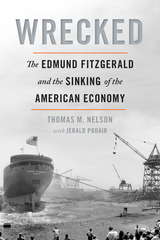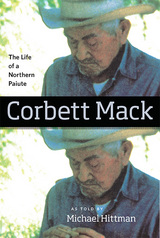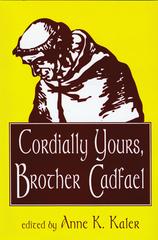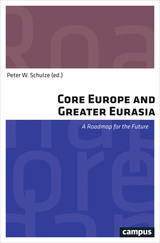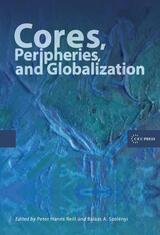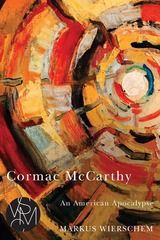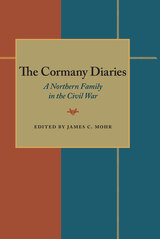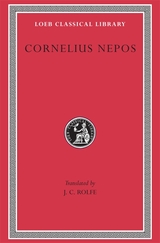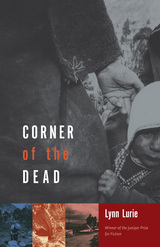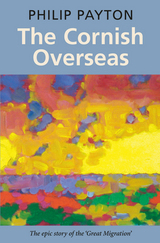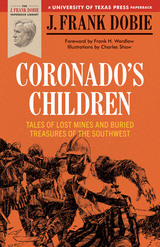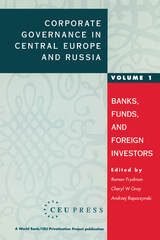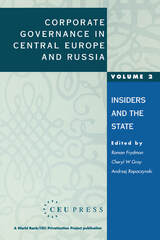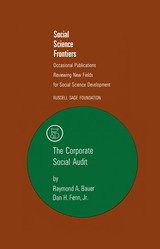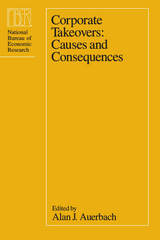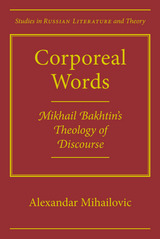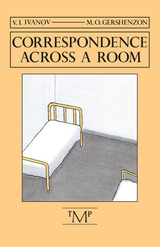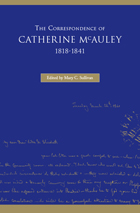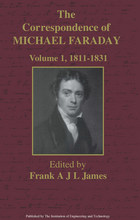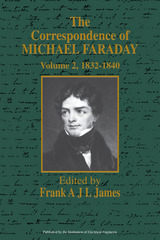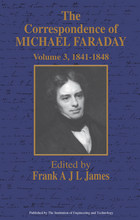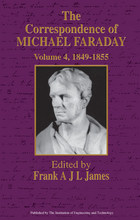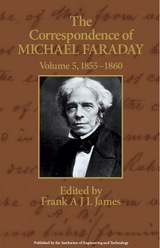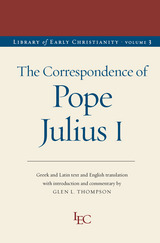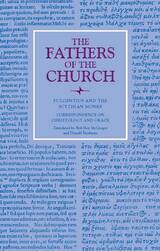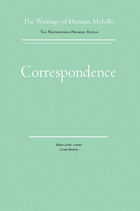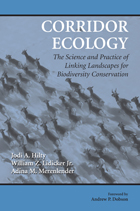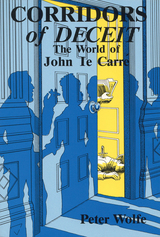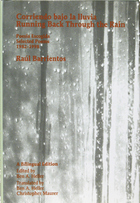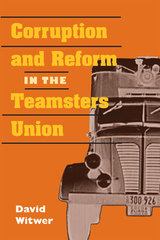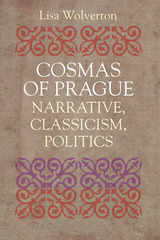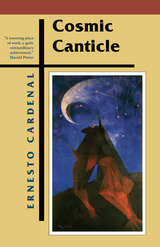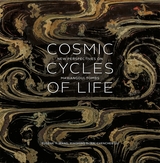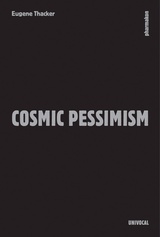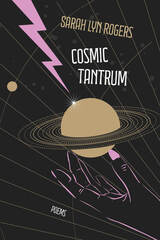 Copyright, Fair Use, and the Challenge for Universities: Promoting the Progress of Higher Education
Kenneth D. Crews
University of Chicago Press, 1993 The recent lawsuit against Kinko's Copies for copyright infringement has exposed the confusion and heightened the fear of liability surrounding copyright issues in colleges and universities. This volume offers an enlightening explanation of copyright and the ambiguous concept of fair use as they affect and are affected by higher education.
In the first large-scale study of its kind, Kenneth D. Crews surveys the copyright policies of ninety-eight American research universities. His analysis reveals a variety of ways in which universities have responded to—and how they could better manage—the conflicting goals of copyright policies: avoiding infringements while promoting lawful uses that serve teaching and research. He explains in detail the background of copyright law and congressional guidelines affecting familiar uses of photocopies, videotapes, software, and reserve rooms. Crews concludes that most universities are overly conservative in their interpretation of copyright and often neglect their own interests, adding unnecessary costs and obstacles to the lawful dissemination of information.
Copyright, Fair Use, and the Challenge for Universities provides administrators, instructors, lawyers, librarians, and educational leaders a much-needed exegesis of copyright and how it can better serve higher education.
Copyright in Historical Perspective
L. Ray Patterson
Vanderbilt University Press, 1968 First published in 1968, Copyright in Historical Perspective remains one of the most important histories of early copyright traditions and laws. Starting in the late 15th century and going through the late 19th century, Lyman Ray Patterson traces the regulation of publishing in Europe and the United States and the threats to fair use and public domain caused by shifting understandings of copyright law.
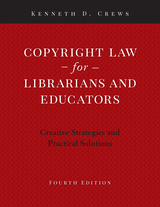 Copyright Law for Librarians and Educators: Creative Strategies and Practical Solutions
Kenneth D. Crews
American Library Association, 2020 Copyright law never sleeps, making it imperative to keep abreast of the latest developments. Declared “an exemplary text that seals the standards for such books” (Managing Information), this newly revised and updated edition by respected copyright authority Crews offers timely insights and succinct guidance for LIS students, librarians, and educators alike. Readers will - learn basic copyright definitions and key exceptions for education and library services;
- find information quickly with “key points” sidebars, legislative citations, and cross-references;
- get up to speed on fresh developments, such as how the recently signed Marrakesh Treaty expands access for people with disabilities and why the latest ruling in the Georgia State University case makes developing a fair use policy so important;
- understand the concept of fair use, with fresh interpretations of its many gray areas that will aid decision making;
- learn the current state of affairs regarding mass digitization, Creative Commons, classroom use and distance education, the Digital Millennium Copyright Act, and other important topics;
- receive guidance on setting up on a copyright service at a library, college, or university; and
- find many helpful checklists for navigating copyright in various situations.
This straightforward, easy-to-use guide provides the tools librarians and educators need to take control of their rights and responsibilities as copyright owners and users.
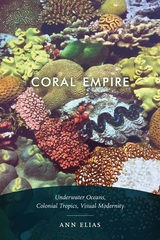 Coral Empire: Underwater Oceans, Colonial Tropics, Visual Modernity
Ann Elias
Duke University Press, 2019 From vividly colored underwater photographs of Australia's Great Barrier Reef to life-size dioramas re-creating coral reefs and the bounty of life they sustained, the work of early twentieth-century explorers and photographers fed the public's fascination with reefs. In the 1920s John Ernest Williamson in the Bahamas and Frank Hurley in Australia produced mass-circulated and often highly staged photographs and films that cast corals as industrious, colonizing creatures, and the undersea as a virgin, unexplored, and fantastical territory. In Coral Empire Ann Elias traces the visual and social history of Williamson and Hurley and how their modern media spectacles yoked the tropics and coral reefs to colonialism, racism, and the human domination of nature. Using the labor and knowledge of indigenous peoples while exoticizing and racializing them as inferior Others, Williamson and Hurley sustained colonial fantasies about people of color and the environment as endless resources to be plundered. As Elias demonstrates, their reckless treatment of the sea prefigured attitudes that caused the environmental crises that the oceans and reefs now face.
Coralations
Melody Jue
University of Minnesota Press, 2025 A captivating meditation on coral beyond iconic tropical corals
Coralations is a philosophical exploration of the media that come into focus when we shift our attention from the highly recognizable coral of the tropics. Focusing on soft corals and deep-water corals leads to different narratives about climate change and involves different analogies to media. Through thought-provoking analyses of photography, science fiction, visual art, and scientific images, Melody Jue renews our curiosity and broadens our understanding of corals beyond the dominant narratives about their endangerment. Coralations shows how paying attention to particular corals can change what we take for granted.
Corbett Mack: The Life of a Northern Paiute
Michael Hittman
University of Nevada Press, 2013 Corbett Mack (1892–1974), was a Northern Paiute of mixed ancestry, caught between Native American and white worlds. A generation before, his tribe had brought forth the prophet Wovoka, whose Ghost Dance swept the Indian world in the 1890s. Mack’s world was a harsh and bitter place after the last Native American uprisings had been brutally crushed; a life of servitude to white farmers and addiction to opium. Hittman uses Mack’s own words to retell his story, an uncompromising account of a traumatized life that typified his generation, yet nonetheless made meaningful through the perseverance of Paiute cultural traditions.
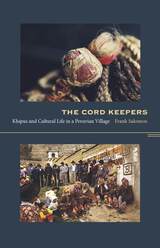 The Cord Keepers: Khipus and Cultural Life in a Peruvian Village
Frank Salomon
Duke University Press, 2004 None of the world’s “lost writings” have proven more perplexing than the mysterious script in which the Inka Empire kept its records. Ancient Andean peoples encoded knowledge in knotted cords of cotton or wool called khipus. In The Cord Keepers, the distinguished anthropologist Frank Salomon breaks new ground with a close ethnography of one Andean village where villagers, surprisingly, have conserved a set of these enigmatic cords to the present day. The “quipocamayos,” as the villagers call them, form a sacred patrimony. Keying his reading to the internal life of the ancient kin groups that own the khipus, Salomon suggests that the multicolored cords, with their knots and lavishly woven ornaments, did not mimic speech as most systems of writing do, but instead were anchored in nonverbal codes. The Cord Keepers makes a compelling argument for a close intrinsic link between rituals and visual-sign systems. It indicates that, while Andean graphic representation may differ radically from familiar ideas of writing, it may not lie beyond the reach of scholarly interpretation. In 1994, Salomon witnessed the use of khipus as civic regalia on the heights of Tupicocha, in Peru’s central Huarochirí region. By observing the rich ritual surrounding them, studying the village’s written records from past centuries, and analyzing the khipus themselves, Salomon opens a fresh chapter in the quest for khipu decipherment. He draws on a decade’s field research, early colonial records, and radiocarbon and fiber analysis. Challenging the prevailing idea that the use of khipus ended under early Spanish colonial rule, Salomon reveals that these beautiful objects served, apparently as late as the early twentieth century, to document households’ contribution to their kin groups and these kin groups’ contribution to their village. The Cord Keepers is a major contribution to Andean history and, more broadly, to understandings of writing and literacy.
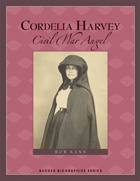 Cordelia Harvey: Civil War Angel
Bob Kann
Wisconsin Historical Society Press, 2011 Cordelia Harvey: Civil War Angel tells the story of an iconic figure from Wisconsin’s Civil War history. As the wife of a promising young governor, Cordelia Harvey seemed destined for great things. Then tragedy struck: her husband, Louis Harvey, drowned, and Cordelia found herself widowed and alone. Like Louis had, Cordelia cared deeply about the Wisconsin soldiers fighting in the Civil War, and she jumped at a job offer from the new governor: working as the sanitary agent for Wisconsin. In this position, Cordelia could fight for the well-being of the state’s men and boys wounded in battle. Young readers will follow Cordelia on her travels up and down the Mississippi to visit Wisconsin soldiers in military hospitals. In her efforts to make sure soldiers were well cared for, Cordelia wrote to the governor about their need for wholesome food, clean supplies, and fresh air. Eventually, she would travel to Washington to plead with President Lincoln for a Soldier’s Home hospital in Wisconsin. When Cordelia returned home after the war, she continued her humanitarian work by starting an orphanage for the children of fallen Civil War soldiers.
Cordelia Harvey: Civil War Angel includes sidebars on medical care, early nursing, and military prisons. A timeline, glossary of terms, and suggestions for activities and discussion round out this spirited narrative.
Cordially Yours, Brother Cadfael
Edited by Anne K. Kaler
University of Wisconsin Press, 1998 Detective, monk, father, herbalist, Crusader, sailor, Celt, friend—author Ellis Peters bestows all these attributes on her twelfth-century Benedictine monk-detective Brother Cadfael. As a detective, Cadfael uses his analytic mind to solve crimes and administer justice. As a man of God, he also dispenses mercy along with his famous cordials.
Why, essays ask, is a cloistered monk solving murders? How can an author combine a valid detective and an effective healer?
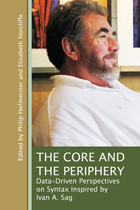 The Core and the Periphery: Data-Driven Perspectives on Syntax Inspired by Ivan A. Sag
Edited by Philip Hofmeister and Elisabeth Norcliffe
CSLI, 2013 The Core and the Periphery is a collection of papers inspired by the linguistics career of Ivan A. Sag (1949-2013), written to commemorate his many contributions to the field. Sag was professor of linguistics at Stanford University from 1979 to 2013; served as the director of the Symbolic Systems Program from 2005 to 2009; authored, co-authored, or edited fifteen volumes on linguistics; and was at the forefront of non-transformational approaches to syntax. Reflecting the breadth of Sag’s theoretical interests and approaches to linguistic problems, the papers collected here tackle a range of grammar-related issues using corpora, intuitions, and laboratory experiments. They are united by their use of and commitment to rich datasets and share the perspective that the best theories of grammar attempt to account for the full diversity and complexity of language data.
Core Europe and Greater Eurasia: A Roadmap for the Future
Edited by Peter W. Schulze
Campus Verlag, 2017 In today’s world, interstate wars are fairly rare—but when they happen, they tend to be more complicated than in the past, combining regional causes with the involvement of external actors as well. This book looks at that problem in the wake of the post-Soviet withdrawal of Russia from involvement in Eastern Europe and the destabilization of regimes in Africa, the Middle East, and the Near East. What do these changes mean for the possibility of establishing peace and security in Europe’s future? What role will the growth of nationalism and populism play in those efforts? And what forms should the relationship between Europe and Russia take? Core Europe and Greater Eurasia addresses these questions and many more, assessing our current moment and looking ahead.
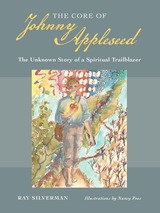 The Core of Johnny Appleseed: The Unknown Story of a Spiritual Trailblazer
Ray SIlverman
Swedenborg Foundation Publishers, 2012 Recent biographies of John Chapman, better known as Johnny Appleseed, have portrayed him as anything from a schizophrenic wandering ascetic to a hedonistic pleasure-seeker. But who was the real man behind the misconceptions? In this spiritual biography, Ray Silverman explores the stories and the popular misconceptions about Johnny Appleseed as well as the truths behind the legends. As a businessman, Chapman owned nineteen nurseries and twenty other land holdings throughout Pennsylvania, Ohio, and Indiana, brokering deals that belie the popular image of him as a wandering nomad with a tin pot on his head. But it is only once we talk about Chapman’s spiritual convictions that we come to the core of who he was: a thoughtful and also joyful Christian who was deeply moved by the writings of Emanuel Swedenborg. The picture that emerges is of a lighthearted person whose convictions led him to seek harmony not only in nature but in the spiritual realms also—and to share his bounty with as many people as he could.
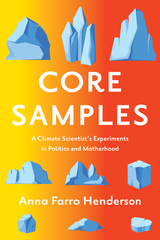 Core Samples: A Climate Scientist's Experiments in Politics and Motherhood
Anna Farro Henderson
University of Minnesota Press, 2024 People live by their stories—how can we use them to accelerate action on climate change?
Climate scientist and policy expert Anna Farro Henderson embarks on a remarkable narrative journey in Core Samples, exploring how science is done, discussed, legislated, and imagined. Through stories both raucous and poignant—of far-flung expeditions, finding artistic inspiration in research, and traversing the systemic barriers women and mothers face in science and politics—she brings readers into the daily rhythms and intimacies of scientific research and political negotiation. Grounded in her experiences as a climate scientist, an environmental policy advisor to Minnesota Senator Al Franken and Governor Mark Dayton, and a constant juggler of the many roles and responsibilities of professional moms, Henderson’s eclectic, unconventional essays range from observations, confessions, and meditations on lab and fieldwork to a packing list for a trip to the State Capitol and a lactation diary. Readers are invited on voyages as far afield as the Trinity nuclear test site in New Mexico, the Juneau Icefield in Alaska, and a meteor crater in Ghana—and as close to home as a town hall meeting in America’s corn belt. A love letter to science and a bracing (and sometimes hilarious) portrait of the many obstacles women, mothers, and people digging for truth navigate, Core Samples illuminates the messy, contradictory humanity of our scientific and political institutions. Bringing us behind the closed doors of discovery and debate, Henderson exposes the flaws in research institutions, the halls of government, and the role of science in policy, yet she shows how each crack is also an invitation for camaraderie, creativity, and change.
Cores, Peripheries, and Globalization
Peter Hanns Reill
Central European University Press, 2011 Deals with the intersection of issues associated with globalization and the dynamics of core-periphery relations. It places these debates in a large and vital context asking what the relations between cores and peripheries have in forming our vision of what constitutes globalization and what were and are its possible effects. In this sense the debate on globalization is framed as part of a larger and more crucial discourse that tries to account for the essential dynamics—economic, social, political and cultural—between metropolitan areas and their peripheries.
Corinne or Italy
Edited by Avriel H Goldberger
Rutgers University Press, 1987 Corrine, or Italy, is both the story of a love affair between Oswald, Lord Nelvil, and a beautiful poetess, and an homage to the landscape, literature and art of Italy. Stael, the subject of recent feminist rediscovery, weaves discreet political allusion into her romance, and upon its publication Napoleon renewed her order of exile. Sylvia Raphel's new translation preserves the natural character of the French original, while the notes and introduction place this extraordinary work of European Romanticism in its historical and political context.
 The Corinthian, Attic, and Lakonian Pottery from Sardis
Judith Snyder Schaeffer; Nancy H. Ramage; Crawford H. Greenewalt, Jr.
Harvard University Press, 1997 Although the treasury of King Croesus held great quantities of gold and silver plate, the Lydians clearly loved fine ceramic wares imported from Greece. This preference was entirely appropriate for the capital of the expansive Lydian Kingdom, which occupied a pivotal position between the city states of the Greeks and the gigantic empire of the Persians. The importation of Greek pottery corresponds to the visits from poets, philosophers, and politicians mentioned by the historian Herodotus.
This collaborative work consists of three generously illustrated sections presenting the ceramic finds excavated at Sardis, but produced in the mainland Greek centers of Corinth, Athens, and Sparta. Judith Snyder Schaeffer analyzes the Corinthian imports, Nancy H. Ramage the Attic, and Crawford H. Greenewalt, Jr., the Lakonian. Their study of this material from the Harvard-Cornell excavations at Sardis offers new evidence of the taste for specific Greek wares and shapes in Anatolia before the time of Alexander the Great.
 Coriolanus
William Shakespeare
Arizona Center for Medieval and Renaissance Studies, 2023 A powerfully topical new translation of Shakespeare’s study of military power and political folly.
Bay Area director, actor, and producer Sean San José takes on the themes of power and politics in his version of Coriolanus, Shakespeare’s exploration of militaristic might and political folly. San José’s take on this little-known classic reimagines the text to be spoken by and for a community of “others.” The translation, which brings Shakespeare’s language into our era, rendering its thematic and dramatic power broadly accessible, is powered by a reexamination of populism in our current political moment.
This translation of Coriolanus was written as part of the Oregon Shakespeare Festival’s Play On! project, which commissioned new translations of thirty-nine Shakespeare plays. These translations present the work of “The Bard” in language accessible to modern audiences while never losing the beauty of Shakespeare’s verse. Enlisting the talents of a diverse group of contemporary playwrights, screenwriters, and dramaturges from diverse backgrounds, this project reenvisions Shakespeare for the twenty-first century. These volumes make these works available for the first time in print—a new First Folio for a new era.
 Coriolis
A.D. Lauren-Abunassar
University of Arkansas Press, 2023 The Coriolis effect—from which A. D. Lauren-Abunassar’s hyperkinetic debut collection borrows its title—describes a force that deflects a mass off course. This concept is at play both formally and psychically in Coriolis, recognized in Leila Chatti's Foreword as “a book of wanting, of lack, absence, disintegration, opacity, and yearning. . . . ‘If only I could cut out the part of me shaped like wanting,’ writes Lauren-Abunassar. At times, the thing wanted for is love. Other times: family, certainty, belonging, home, safety, wellness, wholeness, or simply for a thing to be clean. Always, these poems reveal the shape of the want by illuminating its outline.” Perhaps the speaker of these poems wants most of all to be seen, despite her reflex to deflect when she discloses a shame or trauma, often by depositing the self-revelation within rapid, teeming strings of thought. Yet as much as this speaker may be an introvert in life—“Every time someone says my name it surprises me”; “Because I am lonely, I am always shying away from the mirror”; “Today I woke up feeling / like an already said thing”—many of her utterances are exuberantly uninhibited. “Small trees live inside me,” Lauren-Abunassar admits passingly in one poem. And in another: “When I dream of myself, my mouth / blooms many hands. They reach in all / shapes and directions.”
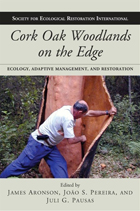 Cork Oak Woodlands on the Edge: Ecology, Adaptive Management, and Restoration
Edited by James Aronson, João S. Pereira, and Juli G. Pausas
Island Press, 2008 Cork oak has historically been an important species in the western Mediterranean—ecologically as a canopy or “framework” tree in natural woodlands, and culturally as an economically valuable resource that underpins local economies. Both the natural woodlands and the derived cultural systems are experiencing rapid change, and whether or not they are resilient enough to adapt to that change is an open question.
Cork Oak Woodlands on the Edge provides a synthesis of the most up-to-date, scientific, and practical information on the management of cork oak woodlands and the cultural systems that depend on cork oak.
In addition, Cork Oak Woodlands on the Edge offers ten site profiles written by local experts that present an in-depth vision of cork oak woodlands across a range of biophysical, historical, and cultural contexts, with sixteen pages of full-color photos that illustrate the tree, agro-silvopastoral systems, products, resident biodiversity, and more.
Cork Oak Woodlands on the Edge is an important book for anyone interested in the future of cork oak woodlands, or in the management of cultural landscapes and their associated land-use systems. In a changing world full of risks and surprises, it represents an excellent example of a multidisciplinary and holistic approach to studying, managing, and restoring an ecosystem, and will serve as a guide for other studies of this kind.
Cormac McCarthy: An American Apocalypse
Markus Wierschem
Michigan State University Press, 2024 This definitive assessment of Cormac McCarthy’s novels captures the interactions among the literary and mythic elements, the social dynamics of violence, and the natural world in The Orchard Keeper, Child of God, Outer Dark, Blood Meridian, and The Road. Elegantly written and deeply engaged with previous scholarship as well as interviews with the novelist, this study provides a comprehensive introduction to McCarthy’s work while offering an insightful new analysis. Drawing on René Girard’s mimetic theory, mythography, thermodynamics, and information science, Markus Wierschem identifies a literary apocalypse at the center of McCarthy’s work, one that unveils another buried deep within the history, religion, and myths of American and Western culture.
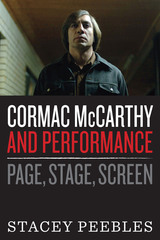 Cormac McCarthy and Performance: Page, Stage, Screen
By Stacey Peebles
University of Texas Press, 2017 Cormac McCarthy is renowned as the author of popular and acclaimed novels such as Blood Meridian, All the Pretty Horses, and The Road. Throughout his career, however, McCarthy has also invested deeply in writing for film and theater, an engagement with other forms of storytelling that is often overlooked. He is the author of five screenplays and two plays, and he has been significantly involved with three of the seven film adaptations of his work. In this book, Stacey Peebles offers the first extensive overview of this relatively unknown aspect of McCarthy’s writing life, including the ways in which other artists have interpreted his work for the stage and screen. Drawing on many primary sources in McCarthy’s recently opened archive, as well as interviews, Peebles covers the 1977 televised film The Gardener’s Son; McCarthy’s unpublished screenplays from the 1980s that became the foundation for his Border Trilogy novels and No Country for Old Men; various successful and unsuccessful productions of his two plays; and all seven film adaptations of his work, including John Hillcoat’s The Road (2009) and the Coen brothers’ Oscar-winning No Country for Old Men (2007). Emerging from this narrative is the central importance of tragedy—the rich and varied portrayals of violence and suffering and the human responses to them—in all of McCarthy’s work, but especially his writing for theater and film.
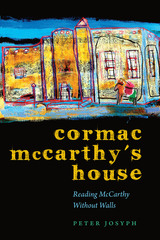 Cormac McCarthy's House: Reading McCarthy Without Walls
By Peter Josyph
University of Texas Press, 2013 Novelist Cormac McCarthy’s brilliant and challenging work demands deep engagement from his readers. In Cormac McCarthy’s House, author, painter, photographer, and actor-director Peter Josyph draws on a wide range of experience to pose provocative, unexpected questions about McCarthy’s work, how it is achieved, and how it is interpreted. As a visual artist, Josyph wrestles with the challenge of rendering McCarthy’s former home in El Paso as a symbol of a great writer’s workshop. As an actor and filmmaker, he analyzes the high art of Tommy Lee Jones in The Sunset Limited and No Country for Old Men. Invoking the recent suicide of a troubled friend, he grapples with the issue of “our brother’s keeper” in The Crossing and The Sunset Limited. But for Josyph, reading the finest prose-poet of our day is a project into which he invites many voices, and his investigations include a talk with Mark Morrow about photographing McCarthy while he was writing Blood Meridian; an in-depth conversation with director Tom Cornford on the challenges of staging The Sunset Limited and The Stonemason; a walk through the streets, waterfronts, and hidden haunts of Suttree with McCarthy scholar and Knoxville resident Wesley Morgan; insights from the cast of The Gardener’s Son about a controversial scene in that film; actress Miriam Colon’s perspective on portraying the Dueña Alfonsa opposite Matt Damon in All the Pretty Horses; and a harsh critique of Josyph’s views on The Crossing by McCarthy scholar Marty Priola, which leads to a sometimes heated debate. Illustrated with thirty-one photographs, Josyph’s unconventional journeys into the genius of Cormac McCarthy form a new, highly personal way of appreciating literary greatness.
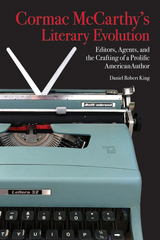 Cormac McCarthy's Literary Evolution: Editors, Agents, and the Crafting of a Prolific American Author
Daniel King
University of Tennessee Press, 2016 “Daniel King has performed a service long overdue for scholars and avid readers of McCarthy's work. Incorporating correspondence to and from his editors and agents, and relating comments he penciled into the margins of his in-progress manuscripts, King has given us a finely detailed portrait of the craftsman at work. It's an enjoyably readable account of how the master bricoleur revised, reconsidered, and ultimately built the novels which so challenge and delight us.”
—Rick Wallach, editor of Myth, Legend, Dust: Critical Responses to Cormac McCarthy
When the New York Times published the first print interview with Cormac McCarthy in 1992, the author was barely known outside a small group of academics, writers, and devoted readers. None of his books, up to that point, had sold more than five thousand copies in hardcover. But that same year McCarthy’s All the Pretty Horses made the best-seller lists, and over the next two decades, with the publication of such books as No Country for Old Men, the basis for the Coen brothers’ Oscar-winning film, and The Road, a Pulitzer Prize winner and an Oprah’s Book Club selection, McCarthy became a household name.
In Cormac McCarthy’s Literary Evolution, Daniel Robert King traces McCarthy’s journey from cult figure to literary icon. Drawing extensively on McCarthy’s papers and those of Albert Erskine, his editor and devoted advocate at Random House, as well as the latest in McCarthy scholarship, King investigates the changes that McCarthy’s work as a novelist, his writing methods, and the reception of his novels have undergone over the course of his career. Taking several of McCarthy’s major novels as case studies, King explores the lengthy process of their composition through multiple drafts and revisions, the signal contributions of the author’s agents and publishers, and McCarthy’s growing confidence as a writer who is strongly attentive to tone and repeated metaphors and images. This work also reveals the wide range of McCarthy’s reading and research, especially of historical and scientific materials, as well as key intertextual connections between the novels.
Part literary biography, part archival investigation, and part study of print culture, this book is particularly revealing of how one talented writer, properly nurtured by dedicated allies, went on to gain a huge measure of recognition and respect, which has become increasingly difficult for serious authors to achieve in today’s profit-driven publishing world.
DANIEL ROBERT KING currently resides and teaches in Britain. His articles have appeared in the International Journal of Comic Art, Literature and Medicine, and Comparative American Studies.
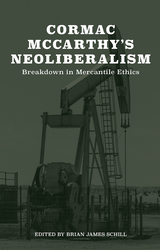 Cormac McCarthy's Neoliberalism: A Breakdown in Mercantile Ethics
Brian Schill
University of Tennessee Press, 2025 In Cormac McCarthy’s Neoliberalism: Breakdown in Mercantile Ethics, editor Brian James Schill gathers insightful essays that probe how McCarthy’s works have commented on and caricatured the economic, political, and cultural forces of neoliberalism. Spanning McCarthy’s career from Suttree to his final novels The Passenger and Stella Maris, this volume positions McCarthy as both a chronicler of and a participant in the neoliberal era. The contributors explore how McCarthy’s fictions—often set against vast, barren landscapes—reflect the predatory logic of neoliberal capitalism, marked by economic inequality, environmental degradation, and social upheaval.
The nine essays presented here argue that McCarthy’s critiques go beyond the superficial and delve deeply into the material and cultural conditions shaped by neoliberal governance. By examining the commodification and accumulation of wealth, both in the settings of his novels and the lives of his characters, McCarthy is revealed as both a sharp observer of the social consequences of unchecked capitalist expansion and a participant in that expansion. Ultimately, Cormac McCarthy’s Neoliberalism demonstrates how the master’s works grapple with the ways in which neoliberalism has reshaped human relationships, from the intimate to the institutional, while casting a spotlight on those left behind by global economic forces.
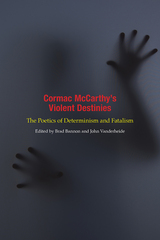 Cormac McCarthy's Violent Destinies: The Poetics of Determinism and Fatalism
Brad Bannon
University of Tennessee Press, 2018 Since the release of his first novel, The Orchard Keeper, in 1965, Cormac McCarthy’s characters, intricate plots, and sometimes forbidding settings have captivated the attention of countless readers while exploring deep philosophical problems, including that of human agency and free will. This multiauthor volume places the full range of his novels in historical, literary, and cultural contexts and shifts the focus of critical engagement to questions of determinism, fatalism, and free will. Essayists over the course of eleven chapters show how McCarthy’s protagonists and antagonists often confront grotesque realities and destinies, and find themselves prey to incessant subconscious and uncontrollable forces. In the process, these scholars reveal that McCarthy’s works arrive thoroughly tinctured with religious complexities, ambiguities of ancient and modern thinking, and profoundly splintered notions of morality, freedom, and ethics. Consequently, McCarthy’s philosophical depth, mastery of language, and sometimes shocking psychological analysis are brought into sharp focus for longtime readers. With new scholarship from eminent critics, an accessible style, and precise attention to the lesser-known works, Cormac McCarthy’s Violent Destinies re-introduces the Pulitzer Prize-winning novelist’s work under the twin themes of fatalism and determinism.
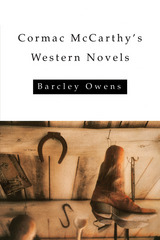 Cormac McCarthy's Western Novels
Barcley Owens
University of Arizona Press, 2000 In the continuing redefinition of the American West, few recent writers have left a mark as indelible as Cormac McCarthy. A favorite subject of critics and fans alike despite—or perhaps because of—his avoidance of public appearances, the man is known solely through his writing. Thanks to his early work, he is most often associated with a bleak vision of humanity grounded in a belief in man's primordial aggressiveness. McCarthy scholar Barcley Owens has written the first book to concentrate exclusively on McCarthy's acclaimed western novels: Blood Meridian, National Book Award winner All the Pretty Horses, The Crossing, and Cities of the Plain. In a thought-provoking analysis, he explores the differences between Blood Meridian and the Border Trilogy novels and shows how those differences reflect changing conditions in contemporary American culture. Owens captures both Blood Meridian's wanton violence and the Border Trilogy's fond remembrance of the Old West. He shows how this dramatic shift from atavistic brutality to nostalgic Americana suggests that McCarthy has finally given his readers what they most want—the stuff of their mythic dreams. Owens's study is both an incisive look at one of our most important and demanding authors and a penetrating analysis of violence and myth in American culture. Fans of McCarthy's work will find much to consider for ongoing discussions of this influential body of work.
The Cormany Diaries: A Northern Family in the Civil War
James C. Mohr
University of Pittsburgh Press, 1982 This unique pair of diaries offers an unforgettable account of the life of an average Northern family coping with the dangers and tensions of the Civil War. There were thousands like them, but few left such a clear and indelible record of their experiences.
Rachel Cormany (nee Bowman) met Samuel Cormany at Otterbein University in Ohio. After her husband enlisted in a cavalry unit, she writes poignantly of her anxieties, poverty, and loneliness. Samuel, on the other hand, is ambitious in his military career, and tells enthusiastically about his engagements that include camp life, cavalry raids, army politics, and his battles with alcohol. Editor James C. Mohr has arranged the diaries so that the voices of husband and wife alternate, and his notes enlighten many of the issues relating to the diarists and their daily lives.
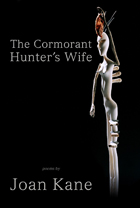 The Cormorant Hunter's Wife
Joan Kane
University of Alaska Press, 2012 This collection of poetry is inspired by the author’s lineage as an Iñupiaq Eskimo woman with family from King Island and Mary’s Igloo, Alaska. The poems’ syncopated cadences and evocative images bring to life the exceptional physical and cultural conditions of the Arctic and sub-Arctic that have been home to her ancestors for tens of thousands of years, while the poems’ speakers refer to an indigenous identity that has become increasingly plural. The author’s perspective as a Native person affords her unique insight into the relationship with place and self, which she applies in her consideration of the arctic landscape and to questions of adaptation and resilience. Kane’s work refers to the Inupiaq oral tradition, and while in some poems she continues to revisit, rewrite, and revise traditional narratives that are suited to the lyric form, she moves beyond narrative retelling, honoring the legacy of imagination that has sustained Inupiaq people for millennia.
 Corn: Its Origin, Evolution and Improvement
Paul C. Mangelsdorf
Harvard University Press, 1974 Corn is among the most familiar of grains; it is also one of the most mysterious. In this handsomely illustrated new book, Paul Mangelsdorf, perhaps the world's foremost expert on the corn plant, summarizes the work of a lifetime devoted to unraveling the enigma of corn.
This unique grain--it has no close counterpart elsewhere in the plant kingdom--exists only in association with man, and it survives only as a result of his intervention. Thus, the story of corn is in many ways a story about people. Combining the skills of scientist and storyteller, Professor Mangelsdorf in his search for the origin of corn takes the reader to archaeological digs in once-inhabited caves in Mexico and the United States Southwest, to the discovery of fossil pollen in drill cores taken deep below Mexico City, and to experimental fields where the great diversity of corn is revealed and where the plant is hybridized with its relatives teosinte and Tripsacum.
Drawing upon the evidence from botany, genetics, cytology, archaeology, and history, the author seeks to evaluate various hypotheses on the origin of corn. He concludes that the ancestor of cultivated corn was a wild form of pod corn; that corn may have been domesticated more than once in both Mexico and South America from different geographical races of wild corn; and that hybridizations between corn and its various relatives have resulted in explosive evolution leading to a diversity of varieties and forms unmatched in any other crop plant.
This is a book about corn, but it is a book for biologists, agronomists, anthropologists, and historians, and for the interested layman who would like to know something about the grain which, "transformed, as three fourths of it is, into meat, milk, eggs, and other animal products, is our basic food plant, as it was of the people who preceded us in this hemisphere."
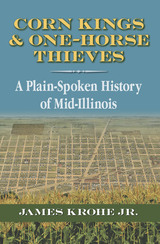 Corn Kings and One-Horse Thieves: A Plain-Spoken History of Mid-Illinois
James Krohe Jr.
Southern Illinois University Press, 2017 Winner, ISHS Annual Award for a Scholarly Publication, 2018
In Corn Kings and One-Horse Thieves, James Krohe Jr. presents an engaging history of an often overlooked region, filled with fascinating stories and surprising facts about Illinois’s midsection.
Krohe describes in lively prose the history of mid-Illinois from the Woodland period of prehistory until roughly 1960, covering the settlement of the region by peoples of disparate races and religions; the exploitation by Euro-Americans of forest, fish, and waterfowl; the transformation of farming into a high-tech industry; and the founding and deaths of towns. The economic, cultural, and racial factors that led to antagonism and accommodation between various people of different backgrounds are explored, as are the roles of education and religion in this part of the state. The book examines remarkable utopian experiments, social and moral reform movements, and innovations in transportation and food processing. It also offers fresh accounts of labor union warfare and social violence directed against Native Americans, immigrants, and African Americans and profiles three generations of political and government leaders, sometimes extraordinary and sometimes corrupt (the “one-horse thieves” of the title). A concluding chapter examines history’s roles as product, recreation, and civic bond in today’s mid-Illinois.
Accessible and entertaining yet well-researched and informative, Corn Kings and One-Horse Thieves draws on a wide range of sources to explore a surprisingly diverse section of Illinois whose history is America in microcosm.
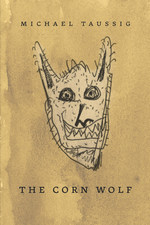 The Corn Wolf
Michael Taussig
University of Chicago Press, 2015 Collecting a decade of work from iconic anthropologist and writer Michael Taussig, The Corn Wolf pinpoints a moment of intellectual development for the master stylist, exemplifying the “nervous system” approach to writing and truth that has characterized his trajectory. Pressured by the permanent state of emergency that imbues our times, this approach marries storytelling with theory, thickening spiraling analysis with ethnography and putting the study of so-called primitive societies back on the anthropological agenda as a way of better understanding the sacred in everyday life.
The leading figure of these projects is the corn wolf, whom Wittgenstein used in his fierce polemic on Frazer’s Golden Bough. For just as the corn wolf slips through the magic of language in fields of danger and disaster, so we are emboldened to take on the widespread culture of academic—or what he deems “agribusiness”—writing, which strips ethnography from its capacity to surprise and connect with other worlds, whether peasant farmers in Colombia, Palestinians in Israel, protestors in Zuccotti Park, or eccentric yet fundamental aspects of our condition such as animism, humming, or the acceleration of time.
A glance at the chapter titles—such as “The Stories Things Tell” or “Iconoclasm Dictionary”—along with his zany drawings, testifies to the resonant sensibility of these works, which lope like the corn wolf through the boundaries of writing and understanding.
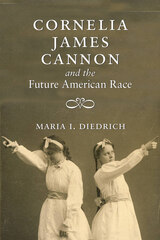 Cornelia James Cannon and the Future American Race
Maria I. Diedrich
University of Massachusetts Press, 2011
This biography examines the life of Cornelia James Cannon (1876-1969), a Radcliffe graduate, wife of a prominent Harvard professor, and mother of five who became a prolific writer and "all-purpose reformer," in the words of her son-in-law, Arthur Schlesinger Jr. In addition to writing eight novels, Cannon published dozens of essays during the 1920s and 1930s on a broad range of controversial topics. She advocated on behalf of women's rights, birth control, and public education and wrote provocative essays on immigration policy, welfare reform, and eugenics.
According to Maria I. Diedrich, it was the last of these concerns, Cannon's interest in what she and her husband called "the future of the race"—a term conflating ideas of class, race, and ethnicity—that inspired many of her varied reform activities. From the vantage point of today it may seem hard to understand how a social reformer and outspoken feminist could also embrace eugenicist principles. Yet, in the context of the time such views were not uncommon among progressive thinkers.
Far from being an extremist or even exceptional, Cornelia James Cannon was a woman representative of her social class and historical moment. By disentangling the threads of Cannon's life and thought, Diedrich seeks to shed light on the experiences of other progressive reformers of the interwar years whose interest in social justice often went hand in hand with racially exclusive notions of Americanness.
Cornelius Nepos
Cornelius Nepos
Harvard University Press Roman biographies of foreign commanders.
Cornelius Nepos was born in Cisalpine Gaul but lived in Rome and was a friend of Cicero, Atticus, and Catullus. Most of his writings, which included poems, moral examples from history, a chronological sketch of general history, a geographical work, Lives of Cato the Elder and Cicero, and other biographies, are lost. Extant is a portion of his De viris illustribus: (i) part of his parallel Lives of Roman and non-Roman famous men, namely the portion containing Lives of non-Roman generals (all Greeks except three) and a chapter on kings; and (ii) two Lives from the class of historians. The Lives are short popular biographies of various kinds, written in a usually plain readable style, of value today because of Nepos’ use of many good sources.
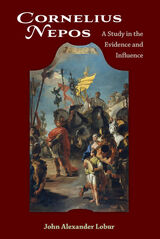 Cornelius Nepos: A Study in the Evidence and Influence
John Alexander Lobur
University of Michigan Press, 2021 Roman author Cornelius Nepos wrote at a very dynamic time in Roman history, but oddly enough little has been said about what his surviving work as a whole can tell us about that period. In the scholarship of the nineteenth and twentieth centuries, the author was much maligned as inaccurate, simple-minded, and derivative, and thus it has been hard to make the case that the evidence he provides is important or even useful. John Lobur’s work rehabilitates Nepos to show that in fact he should be understood as an emblematic member of the Italian intelligentsia, one well-positioned to write narratives of great potency with respect to the ideological tenor of emerging Roman imperial culture. Cornelius Nepos: A Study in the Evidence and Influence begins by exploring the writer's ancient reception, which suggests he was in no way seen as beneath consideration by the Romans themselves. The volume then deconstructs the critical framework that cast him as an "inferior" author in the classical canon. What emerges is an author who reworked Greek historical narratives in a learned, sophisticated way, yet one still limited by the compositional logistics and limitations inherent in ancient scholarship. The study then explores his contemporary relationships and embeds his work among the crucial ideological activity at play in the late Republic and Triumviral periods. Cornelius Nepos spends considerable time on the fragmentary evidence (which highlights Nepos' interest in changes in fashion and consumption) to suggest that he was a valued cultural elder who informed a public eager to recover a sense of tradition during a period of bewilderingly fast social and cultural change. The book finishes with a thematic examination of the entire Lives of the Foreign Commanders (a set of biographies on ancient non-Roman generals) to show that despite the expression of very “Republican” sentiments, he was in fact fashioning an ideological framework for something imperial and quasi-monarchic which, though autocratic, was still antityrannical and imagined as resting on a broad and “democratic” foundation of social consent. Nepos saw that Rome would soon be ruled by one person, and his biographies show how the elites of the day both processed that reality and attempted to circumscribe it for good ends through the creation of new models of legitimacy.
Corner of the Dead
Lynn Lurie
University of Massachusetts Press, 2008
This powerful novel depicts the reign of violence perpetrated in Peru in the 1980s by the Shining Path guerrillas, a Maoist-based organization, and the subsequent authoritarian counterattack by the Peruvian government. It explores these horrific events through the eyes of a young American photojournalist and humanitarian worker, Lisette, who bears witness to the genocide of the Peruvian Indians in whose village she has chosen to live.
"I use the camera to block my view," says Lisette. This is the start of her double vision—trying to forget and trying to recall—and her struggle to come to terms with the human capacity for cruelty. But the grim reality in Peru is so overpowering that she carries it with her back to New York and through the rest of her life. Having abandoned a lover along with the fight, she desperately tries to find meaning beyond that of mere survival.
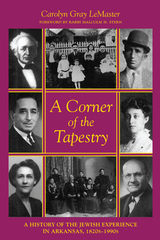 A Corner of the Tapestry: A History of the Jewish Experience in Arkansas, 1820s–1990s
Carolyn LeMaster
University of Arkansas Press, 1994 One of the most comprehensive studies ever done on a state’s Jewish community, A Corner of the Tapestry is the story—untold until now—of the Jews who helped to settle Arkansas and who stayed and flourished to become a significant part of the state’s history and culture. LeMaster has spent much of the past sixteen years compiling and writing this saga. Data for the book have been collected in part from the American Jewish Archives, American Jewish Historical Society, the stones in Arkansas’s Jewish cemeteries, more than fifteen hundred articles and obituaries from journals and newspapers, personal letters from hundreds of present and former Jewish Arkansans, congregational histories, census and court records, and some four hundred oral interviews conducted in a hundred cities and towns in Arkansas. This meticulous work chronicles the lives and genealogy of not only the highly visible and successful Jews who settled in Arkansas, but also those who comprised the warp and woof of society. It is a decidedly significant contribution to Arkansas history as well as to the wider study of Jews in the nation.
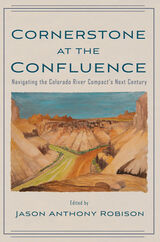 Cornerstone at the Confluence: Navigating the Colorado River Compact's Next Century
Edited by Jason Anthony Robison
University of Arizona Press, 2022 Signed on November 24, 1922, the Colorado River Compact is the cornerstone of a proverbial pyramid—an elaborate body of laws colloquially called the “Law of the River” that governs how human beings use water from the river system dubbed the “American Nile.”
No fewer than forty million people have come to rely on the Colorado River system in modern times—a river system immersed in an unprecedented, unrelenting megadrought for more than two decades. Attempting to navigate this “new normal,” policymakers are in the midst of negotiating new management rules for the river system, a process coinciding with the compact’s centennial that must be completed by 2026.
Animated by this remarkable confluence of events, Cornerstone at the Confluence leverages the centennial year to reflect on the compact and broader “Law of the River” to envision the future. It is a volume inviting dialogue about how the Colorado River system’s flows should be apportioned given climate change, what should be done about environmental issues such as ecosystem restoration and biodiversity protection, and how long-standing issues of water justice facing Native American communities should be addressed.
In one form or another, all these topics touch on the concept of “equity” embedded within the compact—a concept that tees up what is perhaps the foundational question confronted by Cornerstone at the Confluence: Who should have a seat at the table of Colorado River governance?
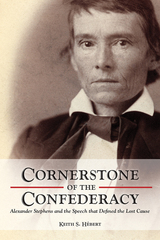 Cornerstone of the Confederacy: Alexander Stephens and the Speech that Defined the Lost Cause
Keith Hebert
University of Tennessee Press, 2021 Born in early 1812 in Crawfordville, Georgia, Alexander Stephens grew up in an antebellum South that would one day inform the themes of his famous Cornerstone Speech. While Stephens made many speeches throughout his lifetime, the Cornerstone Speech is the discourse for which he is best remembered. Stephens delivered it on March 21, 1861—one month after his appointment as vice president of the Confederacy—asserting that slavery and white supremacy comprised the cornerstone of the Confederate States of America. Within a few short weeks, more than two hundred newspapers worldwide had reprinted Stephens’s words.
Following the war and the defeat of the Confederacy, Stephens claimed that his assertions in the Cornerstone Speech had been misrepresented, his meaning misunderstood, as he sought to breathe new and different life into an oration that may have otherwise been forgotten. His intentionally ambiguous rhetoric throughout the postwar years obscured his true antebellum position on slavery and its centrality to the Confederate Nation and lent itself to early constructions of Lost Cause mythology.
In Cornerstone of the Confederacy, Keith Hébert examines how Alexander Stephens originally constructed, and then reinterpreted, his well-known Cornerstone Speech. Hébert illustrates the complexity of Stephens’s legacy across eight chronological chapters, meticulously tracing how this speech, still widely cited in the age of Black Lives Matter, reverberated in the nation’s consciousness during Reconstruction, through the early twentieth century, and in debates about commemoration of the Civil War that live on in the headlines today.
Audiences both inside and outside of academia will quickly discover that the book’s implications span far beyond the memorialization of Confederate symbols, grappling with the animating ideas of the past and discovering how these ideas continue to inform the present.
 Cornerstone of the Nation: The Defense Industry and the Building of Modern Korea under Park Chung Hee
Peter Banseok Kwon
Harvard University Press, 2024 Cornerstone of the Nation is the first historical account of the complex alliance of military and civilian forces that catapulted South Korea’s conjoined militarization and industrialization under Park Chung Hee (1961–1979). Kwon reveals how Park’s secret program to build an independent defense industry spurred a total mobilization of business, science, labor, and citizenry, all of which converged in military-civilian forces that propelled an unprecedented model of modernization in Korea.
Drawing on largely untapped declassified materials from Korea and personal interviews with contemporaneous participants in the nascent defense industry, as well as declassified US documents and other external sources, Kwon weaves together oral histories and documentary evidence in an empirically rich narrative that details how militarization shaped the nation’s rapid economic, technological, political, and social transformation. Cornerstone of the Nation makes the case that South Korea’s arms development under Park may be the most durable and yet least acknowledged factor behind the country’s rise to economic prominence in the late twentieth century. Through an analysis that simultaneously engages some of the most contested issues in Korean historiography, development literature, contemporary politics, and military affairs, this book traces Korea’s distinct pathway to becoming a global economic force.
Cornerstone on College Hill: An Illustrated History of the University of Alaska Fairbanks
Terrence Cole
University of Alaska Press, 1994 No college campus in America has a wilder or more magnificent natural setting than that of the University of Alaska Fairbanks. This history of UAF commemorates the colorful past of one of America's most unusual educational institutions. It tells the story of how the University of Alaska Fairbanks has changed the lives of thousands of people over the past seventy-five years.
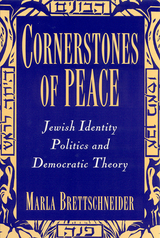 Cornerstones of Peace: Jewish Identity Politics and Democratic Theory
Brettschneider, Marla
Rutgers University Press, 1996 Throughout the seventies, the idea of being “pro-Israel” was traditionally equated with support for the Israeli government and was central to an understanding of American Jewish identity. It was so central, argues Marla Brettschneider, that even committed activists who took issue with such a monolithic stance were silenced by mainstream Jewish organizations. But during the 1980s, a change took place. An explosion of new Jewish groups intent on challenging the dominant definition of the pro-Israel attitude transformed an increasingly closed Jewish community into one more democratic and inclusive.
In Cornerstones of Peace, Marla Brettschneider skillfully combines a lucid review of contemporary Liberal political theory and its understanding of the role of groups in the political process, a sophisticated analysis of Hobbesian philosophy, and a rich history of “alternative” Jewish activist groups like Breira and Americans for Peace Now (APN) to ask: What can we learn about identity and democratic theory from the changes that have taken place in the Jewish community? Through an insightful exploration of how small, activist groups have reclaimed pro-Israel identity politics as a collective multilayered process, Brettschneider adds her voice to the growing number of political theorists envisioning a pro-diversity alternative to Liberal political thought. She theorizes about a new democratic theory, showing theorists and activists how to envision and enact more vibrant, inclusive democratic politics.
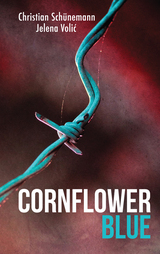 Cornflower Blue: A Case for Milena Lukin
Christian Schünemann and Jelena Volic
Haus Publishing, 2015 Based on true events, Cornflower Blue is a tense thriller that explores the troubled legacy of the Bosnian War.
On the night of the eleventh of July, two elite Serbian soldiers are on sentry duty at the Topcider military camp. The next morning, they are found dead. A military court declares them victims of a ritual suicide, and the investigation is closed. But inconsistencies in the official tribunal draw criminologist Milena Lukin to the case. What did the two guardsmen see on that fateful night, a date marking the anniversary of the Srebrenica genocide? Up against a military complex with a history to hide, Milena soon finds herself in grave danger. Meticulously researched and rich in historical detail, Cornflower Blue is a gripping tale that bravely addresses one of the darkest hours in Europe’s recent history.
“An exciting thriller, a story about the worst depths of human nature—but also a clever, nostalgic, loving homage to Belgrade and its inhabitants.”—Der Tagesspiegel, on the German edition
The Cornish Overseas: The Epic Story of the "Great Emigration"
Philip Payton
University of Exeter Press, 2005 The story of the migration of the Cornish people throughout the world is epic in scope. The migration took place in two great waves: the first, shrouded in mystery, took place somewhere between the fourth and sixth centuries, and scattered the Cornish throughout present-day Brittany; the second, taking place in the nineteenth and twentieth centuries, spread the Cornish across the world. The Cornish Overseas tells this grand narrative of diaspora covering the United States, Canada, Australia, New Zealand, South Africa, continental South America, and elsewhere, while incorporating significant new research.
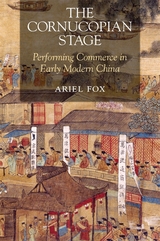 The Cornucopian Stage: Performing Commerce in Early Modern China
Ariel Fox
Harvard University Press, 2023 The long seventeenth century in China was a period of tremendous commercial expansion, and no literary genre was better equipped to articulate its possibilities than southern drama. As a form and a practice, southern drama was in the business of world-building—both in its structural imperative to depict and reconcile the social whole and in its creation of entire economies dependent on its publication and performance. However, the early modern commercial world repelled rather than engaged most playwrights, who consigned its totems—the merchant and his money—to the margins as sources of political suspicion and cultural anxiety.
In The Cornucopian Stage, Ariel Fox examines a body of influential yet understudied plays by a circle of Suzhou playwrights who enlisted the theatrical imaginary to very different ends. In plays about long-distance traders and small-time peddlers, impossible bargains and broken contracts, strings of cash and storehouses of silver, the Suzhou circle placed commercial forms not only at center stage but at the center of a new world coming into being. Here, Fox argues, the economic character of early modern selfhood is recast as fundamentally productive—as the basis for new subject positions, new kinds of communities, and new modes of art.
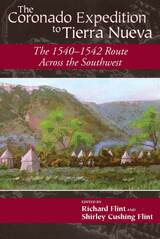 The Coronado Expedition to Tierra Nueva: The 1540-1542 Route across the Southwest
Richard Flint
University Press of Colorado, 1997 The Coronado Expedition to Tierra Nueva is an engaging record of key research by archaeologists, ethnographers, historians, and geographers concerning the first organized European entrance into what is now the American Southwest and northwestern Mexico. In search of where the expedition went and what peoples it encountered, this volume explores the fertile valleys of Sonora, the basins and ranges of southern Arizona, the Zuni pueblos and the Rio Grande Valley of New Mexico, and the Llano Estacado of the Texas panhandle. The twenty-one contributors to the volume have pursued some of the most significant lines of research in the field in the last fifty years; their techniques range from documentary analysis and recording traditional stories to detailed examination of the landscape and excavation of campsites and Indian towns. With more confidence than ever before, researchers are closing in on the route of the conquistadors.
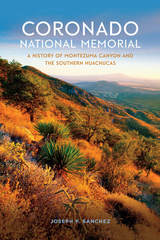 Coronado National Memorial: A History of Montezuma Canyon and the Southern Huachucas
Joseph P. Sánchez
University of Nevada Press, 2017 Coronado National Memorial explores forgotten pathways through Montezuma Canyon in southeastern Arizona, and provides an essential history of the southern Huachuca Mountains. This is a magical place that shaped the region and two countries, the United States and Mexico. Its history dates back to the expedition led by Conquistador Francisco Vásquez de Coronado in 1540, a mere forty-eight years after Columbus’ first voyage. Before that time Native Americans occupied the land, later to be joined by Spanish and Mexican period miners and ranchers, prospecting entrepreneurs, missionaries, and homesteaders.
Sánchez is the foremost historian of the area, and he shifts through and decodes a number of key Spanish and English language documents from different archives that tell the story of an historical drama of epic proportions. He combines the regional and the global, starting with the prehistory of the area. He covers Spanish colonial contact, settlement missions, the Mexican Territorial period, land grants, and the ultimate formation of the international border that set the stage for the creation of the Coronado National Memorial in 1952.
Much has been written about southwestern Arizona and northeastern Sonora, and in many ways this book complements those efforts and delivers details about the region’s colorful past.
Coronado's Children: Tales of Lost Mines and Buried Treasures of the Southwest
By J. Frank Dobie
University of Texas Press, 1978 Written in 1930, Coronado's Children was one of J. Frank Dobie's first books, and the one that helped gain him national prominence as a folklorist. In it, he recounts the tales and legends of those hardy souls who searched for buried treasure in the Southwest following in the footsteps of that earlier gold seeker, the Spaniard Coronado. "These people," Dobie writes in his introduction, "no matter what language they speak, are truly Coronado's inheritors.... l have called them Coronado's children. They follow Spanish trails, buffalo trails, cow trails, they dig where there are no trails; but oftener than they dig or prospect they just sit and tell stories of lost mines, of buried bullion by the jack load... " This is the tale-spinning Dobie at his best, dealing with subjects as irresistible as ghost stories and haunted houses.
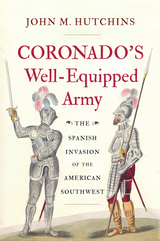 Coronado's Well-Equipped Army: The Spanish Invasion of the American Southwest
John M. Hutchins
Westholme Publishing, 2023 Like Cortés and Pizarro, Coronado Sought to Conquer a Native American Empire of the Southwest Winner of Two Colorado Book Awards The historic 1540–1542 expedition of Captain-General Francisco Vasquez de Coronado is popularly remembered as a luckless party of exploration which wandered the American Southwest and then blundered onto the central Great Plains of Texas, Oklahoma, and Kansas. The expedition, as historian John M. Hutchins relates in Coronado’s Well-Equipped Army: The Spanish Invasion of the American Southwest, was a military force of about 1,500 individuals, made up of Spanish soldiers, Indian warrior allies, and camp followers. Despite the hopes for a peaceful conquest of new lands—including those of a legendary kingdom of Cibola—the expedition was obliged to fight a series of battles with the natives in present-day Sonora, California, Arizona, and New Mexico. The final phase of the invasion was less warlike, as the members of the expedition searched the Great Plains in vain for a wealthy civilization called Quivira.While much has been written about the march of Coronado and his men, this is the first book to address the endeavor as a military campaign of potential conquest like those conducted by other conquistadors. This helps to explain many of the previously misunderstood activities of the expedition. In addition, new light is cast on the non-Spanish participants, including Mexican Indian allies and African retainers, as well as the important roles of women.
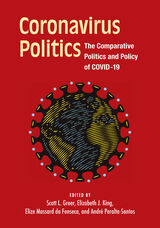 Coronavirus Politics: The Comparative Politics and Policy of COVID-19
Scott L. Greer, Elizabeth J. King, Elize Massard da Fonseca, André Peralta-Santos, Editors
University of Michigan Press, 2021 COVID-19 is the most significant global crisis of any of our lifetimes. The numbers have been stupefying, whether of infection and mortality, the scale of public health measures, or the economic consequences of shutdown. Coronavirus Politics identifies key threads in the global comparative discussion that continue to shed light on COVID-19 and shape debates about what it means for scholarship in health and comparative politics. Editors Scott L. Greer, Elizabeth J. King, Elize Massard da Fonseca, and André Peralta-Santos bring together over 30 authors versed in politics and the health issues in order to understand the health policy decisions, the public health interventions, the social policy decisions, their interactions, and the reasons. The book’s coverage is global, with a wide range of key and exemplary countries, and contains a mixture of comparative, thematic, and templated country studies. All go beyond reporting and monitoring to develop explanations that draw on the authors' expertise while engaging in structured conversations across the book.
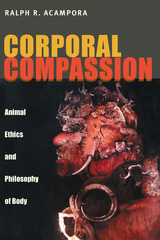 Corporal Compassion: Animal Ethics and Philosophy of Body
Ralph R. Acampora
University of Pittsburgh Press, 2014
Most approaches to animal ethics ground the moral standing of nonhumans in some appeal to their capacities for intelligent autonomy or mental sentience. Corporal Compassion emphasizes the phenomenal and somatic commonality of living beings; a philosophy of body that seeks to displace any notion of anthropomorphic empathy in viewing the moral experiences of nonhuman living beings. Ralph R. Acampora employs phenomenology, hermeneutics, existentialism and deconstruction to connect and contest analytic treatments of animal rights and liberation theory. In doing so, he focuses on issues of being and value, and posits a felt nexus of bodily being, termed symphysis, to devise an interspecies ethos. Acampora uses this broad-based bioethic to engage in dialogue with other strains of environmental ethics and ecophilosophy.
Corporal Compassion examines the practical applications of the somatic ethos in contexts such as laboratory experimentation and zoological exhibition and challenges practitioners to move past recent reforms and look to a future beyond exploitation or total noninterference--a posthumanist culture that advocates caring in a participatory approach.
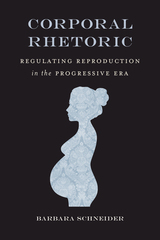 Corporal Rhetoric: Regulating Reproduction in the Progressive Era
Barbara Schneider
University of Alabama Press, 2021 Examines public discourse from the Progressive Era over the state’s right to regulate women’s bodies and their reproduction
When Justice Oliver Wendell Holmes determined in 1927 that sterilization was a legitimate means of safeguarding the nation’s health, he was asserting the state’s right to regulate the production of the national body. His opinion represented a culmination of arguments about reproduction and immigration that had been circulating for years but that intensified during the Progressive Era. Arguments about reproductive and immigration practices surged to the foreground, and tectonic shifts in the conceptual schemes and practices of reproduction in the United States followed.
Drawing on feminist historiography and genre studies, Corporal Rhetoric: Regulating Reproduction in the Progressive Era explores the rhetoric of medical research, new technologies, and material practices that shifted the idea of childbirth as an act of God or Nature to a medical procedure enacted by male physicians on the bodies of women made passive by both drugs and discourse. Barbara Schneider considers how efficiency, the hallmark of scientific management, was raised to a cardinal virtue by its inclusions in the powerful mediums of presidential speeches, national educational policies, and eugenics discourse to reclassify babies, long regarded as gifts, as either valuable assets or defective products.
Schneider shows how the legal system drew upon medicine, scientific management, and the emerging discipline of sociology to restrict women’s labor in order to preserve reproductive capacity, categorized by Supreme Court opinions as a public good rather than a private capacity. Throughout, she ties the arguments developed during this era to current debates about mothering rhetorics, reproductive rights, immigration, and conceptions of the nation.
By weaving together medical research reports, clinical practices, case studies, legal opinions and legislative acts, and the epistemology of scientific management, Schneider illuminates the network that women such as Margaret Sanger, Jane Addams, Lillian Gilbreth and multiple others negotiated as they sought to give women room to exercise their reproductive capacity. Through her analysis of the machinery of these discourses and the material uptake of their genres in the daily practices of reproductive bodies, Schneider offers a provisional theory of corporal rhetoric that begins to answer the call for a new material theory of the body.
 Corporate Aviation Management
Raoul Castro. Foreword by Torch Lewis
Southern Illinois University Press, 1995 In this comprehensive aviation manual, Raoul Castro provides a source of invaluable corporate aviation management information. He begins by giving an overview of corporate aviation from its inception, then focuses on the management principles and functions that specifically target corporate aviation. Through the utilization of these sound management principles, Castro facilitates the acceptance of corporate aircraft as indispensable tools of industry. As Castro notes, few companies know how to use corporate aircraft to maximum advantage. Drawing on his expertise and experience, Castro designs a plan by which a company can achieve maximum utilization of an airplane or helicopter fleet. He gives specific instructions on how to facilitate the efficient use of the aviation department of a company, select appropriate aircraft, plan for disasters and establish security measures, fulfill legal requirements of the governmental agencies that regulate the use of aircraft, and manage the maintenance and repair of aircraft. Castro also discusses the scores of details involved in the management of a professional corporate aviation branch and how these details can be handled in a positive, productive manner. After thoroughly examining the overall managerial functions involved in planning, organizing, controlling, and implementing an aviation arm, Castro concludes by discussing the future of corporate aviation. This book is a practical and valuable guide for the executive in charge of an aviation department, an aviation department manager or chief pilot, aspirants to aviation management positions, and both students and teachers of aviation management.
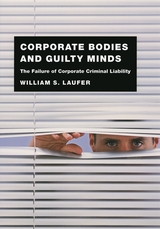 Corporate Bodies and Guilty Minds: The Failure of Corporate Criminal Liability
William S. Laufer
University of Chicago Press, 2006 We live in an era defined by corporate greed and malfeasance—one in which unprecedented accounting frauds and failures of compliance run rampant. In order to calm investor fears, revive perceptions of legitimacy in markets, and demonstrate the resolve of state and federal regulators, a host of reforms, high-profile investigations, and symbolic prosecutions have been conducted in response. But are they enough?
In this timely work, William S. Laufer argues that even with recent legal reforms, corporate criminal law continues to be ineffective. As evidence, Laufer considers the failure of courts and legislatures to fashion liability rules that fairly attribute blame for organizations. He analyzes the games that corporations play to deflect criminal responsibility. And he also demonstrates how the exchange of cooperation for prosecutorial leniency and amnesty belies true law enforcement. But none of these factors, according to Laufer, trumps the fact that there is no single constituency or interest group that strongly and consistently advocates the importance and priority of corporate criminal liability. In the absence of a new standard of corporate liability, the power of regulators to keep corporate abuses in check will remain insufficient.
A necessary corrective to our current climate of graft and greed, Corporate Bodies and Guilty Minds will be essential to policymakers and legal minds alike. “[This] timely work offers a dispassionate analysis of problems relating to corporate crime.”—Harvard Law Review
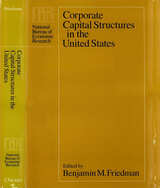 Corporate Capital Structures in the United States
Edited by Benjamin M. Friedman
University of Chicago Press, 1985 The research reported in this volume represents the second stage of a wide-ranging National Bureau of Economic Research effort to investigate "The Changing Role of Debt and Equity in Financing U.S. Capital Formation." The first group of studies sponsored under this project, which have been published individually and summarized in a 1982 volume bearing the same title (Friedman 1982), addressed several key issues relevant to corporate sector behavior along with such other aspects of the evolving financial underpinnings of U.S. capital formation as household saving incentives, international capital flows, and government debt management. In the project's second series of studies, presented at the National Bureau of Economic Research conference in January 1983 and published here for the first time along with commentaries from that conference, the central focus is the financial side of capital formation undertaken by the U.S. corporate business sector. At the same time, because corporations' securities must be held, a parallel focus is on the behavior of the markets that price these claims.
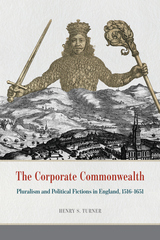 The Corporate Commonwealth: Pluralism and Political Fictions in England, 1516-1651
Henry S. Turner
University of Chicago Press, 2016 The Corporate Commonwealth traces the evolution of corporations during the English Renaissance and explores the many types of corporations that once flourished. Along the way, the book offers important insights into our own definitions of fiction, politics, and value.
Henry S. Turner uses the resources of economic and political history, literary analysis, and political philosophy to demonstrate how a number of English institutions with corporate associations—including universities, guilds, towns and cities, and religious groups—were gradually narrowed to the commercial, for-profit corporation we know today, and how the joint-stock corporation, in turn, became both a template for the modern state and a political force that the state could no longer contain. Through innovative readings of works by Thomas More, William Shakespeare, Francis Bacon, and Thomas Hobbes, among others, Turner tracks the corporation from the courts to the stage, from commonwealth to colony, and from the object of utopian fiction to the subject of tragic violence. A provocative look at the corporation’s peculiar character as both an institution and a person, The Corporate Commonwealth uses the past to suggest ways in which today’s corporations might be refashioned into a source of progressive and collective public action.
 Corporate Complicity in Israel's Occupation: Evidence from the London Session of the Russell Tribunal on Palestine
Edited by Asa Winstanley and Frank Barat
Pluto Press, 2011 The Russell Tribunal on Palestine is a people’s tribunal in the spirit of the Tribunal on Vietnam that was set up by Bertrand Russell in the 1960s. This book contains a selection of the most vital evidence and testimonies presented at the London session. It includes the papers submitted to the tribunal, written by expert witnesses, based on their detailed research into the companies that prop-up Israeli occupation.
Examining the involvement of corporations in the illegal occupation of Palestinian land by Israel, the tribunal of 2010 generated widespread media coverage. The book identifies companies and corporations participating in such illegality and possibilities for legal action against them are discussed.
Released to coincide with the South Africa session at the end of 2011, Corporate Complicity in Israel's Occupation is a vital resource to lawyers, journalists and activists hoping to take informed action against Israeli war crimes and occupation.
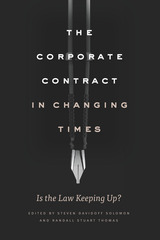 The Corporate Contract in Changing Times: Is the Law Keeping Up?
Edited by Steven Davidoff Solomon and Randall Stuart Thomas
University of Chicago Press, 2019 Over the past few decades, significant changes have occurred across capital markets. Shareholder activists have become more prominent, institutional investors have begun to wield more power, and intermediaries like investment advisory firms have greatly increased their influence. These changes to the economic environment in which corporations operate have outpaced changes in basic corporate law and left corporations uncertain of how to respond to the new dynamics and adhere to their fiduciary duties to stockholders.
With The Corporate Contract in Changing Times, Steven Davidoff Solomon and Randall Stuart Thomas bring together leading corporate law scholars, judges, and lawyers from top corporate law firms to explore what needs to change and what has prevented reform thus far. Among the topics addressed are how the law could be adapted to the reality that activist hedge funds pose a more serious threat to corporations than the hostile takeovers and how statutory laws, such as the rules governing appraisal rights, could be reviewed in the wake of appraisal arbitrage. Together, the contributors surface promising paths forward for future corporate law and public policy.
 Corporate Crops: Biotechnology, Agriculture, and the Struggle for Control
By Gabriela Pechlaner
University of Texas Press, 2012 Biotechnology crop production area increased from 1.7 million hectares to 148 million hectares worldwide between 1996 to 2010. While genetically modified food is a contentious issue, the debates are usually limited to health and environmental concerns, ignoring the broader questions of social control that arise when food production methods become corporate-owned intellectual property. Drawing on legal documents and dozens of interviews with farmers and other stakeholders, Corporate Crops covers four case studies based around litigation between biotechnology corporations and farmers. Pechlaner investigates the extent to which the proprietary aspects of biotechnologies—from patents on seeds to a plethora of new rules and contractual obligations associated with the technologies—are reorganizing crop production. The lawsuits include patent infringement litigation launched by Monsanto against a Saskatchewan canola farmer who, in turn, claimed his crops had been involuntarily contaminated by the company’s GM technology; a class action application by two Saskatchewan organic canola farmers launched against Monsanto and Aventis (later Bayer) for the loss of their organic market due to contamination with GMOs; and two cases in Mississippi in which Monsanto sued farmers for saving seeds containing its patented GM technology. Pechlaner argues that well-funded corporate lawyers have a decided advantage over independent farmers in the courts and in creating new forms of power and control in agricultural production. Corporate Crops demonstrates the effects of this intersection between the courts and the fields where profits, not just a food supply, are reaped.
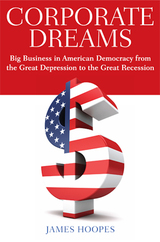 Corporate Dreams: Big Business in American Democracy from the Great Depression to the Great Recession
Hoopes, James
Rutgers University Press, 2011 Public trust in corporations plummeted in the wake of the 2008 financial crisis, when “Lehman Brothers” and “General Motors” became dirty words for many Americans. In Corporate Dreams, James Hoopes argues that Americans still place too much faith in corporations and, especially, in the idea of “values-based leadership” favored by most CEOs. The danger of corporations, he suggests, lies not just in their economic power, but also in how their confused and undemocratic values are infecting Americans’ visions of good governance.
Corporate Dreams proposes that Americans need to radically rethink their relationships with big business and the government. Rather than buying into the corporate notion of “values-based leadership,” we should view corporate leaders with the same healthy suspicion that our democratic political tradition teaches us to view our political leaders. Unfortunately, the trend is moving the other way. Corporate notions of leadership are invading our democratic political culture when it should be the reverse.
To diagnose the cause and find a cure for our toxic attachment to corporate models of leadership, Hoopes goes back to the root of the problem, offering a comprehensive history of corporate culture inAmerica, from the Great Depression to today’s Great Recession. Combining a historian’s careful eye with an insider’s perspective on the business world, this provocative volume tracks changes in government economic policy, changes in public attitudes toward big business, and changes in how corporate executives view themselves.
Whether examining the rise of Leadership Development programs or recounting JFK’s Pyrrhic victory over U.S. Steel, Hoopes tells a compelling story of how America lost its way, ceding authority to the policies and values of corporate culture. But he also shows us how it’s not too late to return to our democratic ideals—and that it’s not too late to restore the American dream.
 The Corporate Economy: Growth, Competition, and Innovative Potential
Robin Marris and Adrian Wood
Harvard University Press, 1971 The Corporate Economy, a collective work by some of the world’s most distinguished theoretical economists, offers analyses of the workings of an economy dominated by large corporations. The book is concerned with the theory of the growth of the firm, with competition between divisions of corporations in particular product markets, and with relationships between the company and the stock market. It presents discussions of the internal organization of diversified corporations and the effects of this organization on the corporations’ economic behavior as well as on the relations between the corporate sector and the small-scale or “competitive” sector of the economy. Three empirical appendices, which include some previously unpublished material, survey the literature on the size, growth, and profitability of firms and on diversification, merger, and research expenditures.
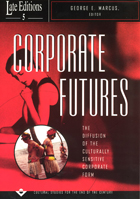 Corporate Futures: The Diffusion of the Culturally Sensitive Corporate Form
Edited by George E. Marcus
University of Chicago Press, 1998 As we approach the end of the century, cultural, institutional, and even geopolitical change becomes the norm rather than the exception. Late Editions, edited by George E. Marcus, is a series of annuals designed to probe these changes not through the familiar academic conventions of analysis but instead through in-depth, informed conversations and interviews with individuals at the sites of these transformations. The casts of other volumes in the series include artists, oncologists, Siberian medical leaders, warhead designers, and computer junkies, all of whom take the opportunity presented by Late Editions to reflect upon the great and often puzzling shifts occurring in the cultural landscape.
Late Editions 5, Corporate Futures, questions this idea of a "cultural landscape" by focusing on the the marked investment of corporations in the concept of culture, long the purview of anthropologists and, more recently, those involved in the humanistic disciplines. Emerging in the discourse of the workplace—and traveling beyond it to traditionally alternative associations—is the idea of a "corporate culture" with its own organization, management policies and practices, and ethos. How can we understand this culture of corporations, and to what extent does it reflect self-contained communities or fragmented human existence in groups under conditions of postmodernity? Corporate Futures tackles these issues and questions through conversations with managers, financial and risk analysts, and other participants in national and international organizations.
The results—engaging, intriguing, speculative, current—continue the work begun in earlier volumes to map the terrain of the present and navigate the uncertain future.
Praise for Late Editions: "If the succeeding volumes are as compassionate and informed as the first, this series could become an essential postmodern guidebook to the world's changing cultural terrain. I plan on letting it ease me into the next century."—Catherine Gysin, Utne Reader
Corporate Governance in Central Europe and Russia: Banks, Funds, and Foreign Investors
Roman Frydman
Central European University Press, 1996 The studies in this two-volume work shed new light on the range and viability of the emerging corporate governance institutions in the transitional economies of Central Europe. Regional specialists and experts on corporate governance in advanced economies examine the emerging forms of ownership and complementary monitoring institutions in leading transition companies.
Corporate Governance in Central Europe and Russia: Insiders and the State
Andrzej Rapaczynski
Central European University Press, 1996 The studies in this two-volume work shed new light on the range and viability of the emerging corporate governance institutions in the transitional economies of Central Europe. Regional specialists and experts on corporate governance in advanced economies examine the emerging forms of ownership and complementary monitoring institutions in leading transition companies.
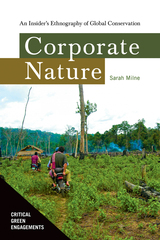 Corporate Nature: An Insider's Ethnography of Global Conservation
Sarah Milne
University of Arizona Press, 2022 In 2012, Cambodia’s most prominent environmental activist was brutally murdered in a high-profile conservation area in the Cardamom Mountains. Tragic and terrible, this event magnifies a crisis in humanity’s efforts to save nature: failure of the very tools and systems at hand for advancing global environmental action.
Sarah Milne spent more than a decade working for and observing global conservation projects in Cambodia. During this time, she saw how big environmental NGOs can operate rather like corporations. Their core practice involves rolling out appealing and deceptively simple policy ideas, like Payments for Ecosystem Services (PES). Yet, as policy ideas prove hard to implement, NGOs must also carefully curate evidence from the field to give the impression of success and effectiveness.
In Corporate Nature, Milne delves inside the black box of mainstream global conservation. She reveals how big international NGOs struggle in the face of complexity—especially in settings where corruption and political violence prevail. She uses the case of Conservation International’s work in Cambodia to illustrate how apparently powerful NGOs can stumble in practice: policy ideas are transformed on the ground, while perverse side effects arise, like augmented authoritarian power, illegal logging, and Indigenous dispossession.
The real power of global conservation NGOs is therefore not in their capacity to control what happens in the field but in their capacity to ignore or conceal failings. Milne argues that this produces an undesirable form of socionature, called corporate nature, that values organizational success over diverse knowledges and ethical conduct.
The Corporate Social Audit
Raymond A. Bauer
Russell Sage Foundation, 1972 Much has been said about the general subject [of how to measure a corporation's social performance] but little has been contributed to answering this fundamental question. Thus, in November 1971, Russell Sage Foundation sponsored a development effort aimed at examining the "state-of-the-art" and at suggesting a program of research that would advance that state. "Raymond Bauer and Dan Fenn have provided us with a first product—a state-of-the-art conception and description, and recommendations for future development. They are to be commended for their astute considerations and their clear thinking in the murky pond of corporate social audits. Their effort has provided the social science community with a point of departure for future research in the area."—Eleanor Bernert Sheldon A Volume in the Russell Sage Foundation's Social Science Frontiers Series
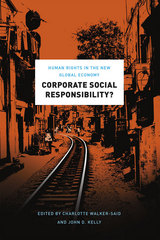 Corporate Social Responsibility?: Human Rights in the New Global Economy
Edited by Charlotte Walker-Said and John D. Kelly
University of Chicago Press, 2015 With this book, Charlotte Walker-Said and John D. Kelly have assembled an essential toolkit to better understand how the notoriously ambiguous concept of corporate social responsibility (CSR) functions in practice within different disciplines and settings. Bringing together cutting-edge scholarship from leading figures in human rights programs around the United States, they vigorously engage some of the major political questions of our age: what is CSR, and how might it render positive political change in the real world?
The book examines the diverse approaches to CSR, with a particular focus on how those approaches are siloed within discrete disciplines such as business, law, the social sciences, and human rights. Bridging these disciplines and addressing and critiquing all the conceptual domains of CSR, the book also explores how CSR silos develop as a function of the competition between different interests. Ultimately, the contributors show that CSR actions across all arenas of power are interdependent, continually in dialogue, and mutually constituted. Organizing a diverse range of viewpoints, this book offers a much-needed synthesis of a crucial element of today’s globalized world and asks how businesses can, through their actions, make it better for everyone.
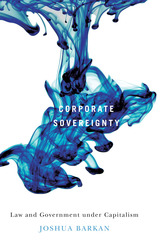 Corporate Sovereignty: Law and Government under Capitalism
Joshua Barkan
University of Minnesota Press, 2013 Refinery explosions. Accounting scandals. Bank meltdowns. All of these catastrophes—and many more—might rightfully be blamed on corporations. In response, advocates have suggested reforms ranging from increased government regulation to corporate codes of conduct to stop corporate abuses. Joshua Barkan writes that these reactions, which view law as a limit on corporations, misunderstand the role of law in fostering corporate power. In Corporate Sovereignty, Barkan argues that corporate power should be rethought as a mode of political sovereignty. Rather than treating the economic power of corporations as a threat to the political sovereignty of states, Barkan shows that the two are ontologically linked. Situating analysis of U.S., British, and international corporate law alongside careful readings in political and social theory, he demonstrates that the Anglo-American corporation and modern political sovereignty are founded in and bound together through a principle of legally sanctioned immunity from law. The problems that corporate-led globalization present for governments result not from regulatory failures as much as from corporate immunity that is being exported across the globe. For Barkan, there is a paradox in that corporations, which are legal creations, are given such power that they undermine the sovereignty of states. He notes that while the relationship between states and corporations may appear adversarial, it is in fact a kind of doubling in which state sovereignty and corporate power are both conjoined and in conflict. Our refusal to grapple with the peculiar nature of this doubling means that some of our best efforts to control corporations unwittingly reinvest the sovereign powers they oppose.
 Corporate Stakeholder Democracy: Politicizing Corporate Social Responsibility
Robert Braun
Central European University Press, 2019 Most practitioners and decision makers look at corporate social responsibility (CSR) as a socially responsible management practice on top of what company leaders generally do: focus on the sustainable, long term financial profitability of their corporation. This book focuses on a political understanding of CSR: the author bridges politics with corporate social responsibility and in a creative and provocative manner. Braun seeks to explore why and how corporations are to be seen as political actors with important roles in our current societies. The first part discusses the social context, the various stakeholder approaches and it also endeavors – with the help of the historic/political parallel of the bourgeois revolutions in the 19th century – to define the corporate polity. The second part analyses the new kind of political operational logic from the viewpoint of the different areas of corporate operation; it gives an overview of the consequences for the individual areas of operation and indicates how corporate policy can be realized in the given field of operation. The third part of the book introduces the institutions necessary for the creation of the corporate polity.
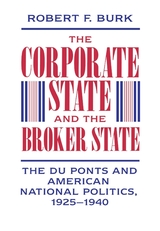 The Corporate State and the Broker State: The Du Ponts and American National Politics, 1925–1940
Robert F. Burk
Harvard University Press, 1990 The du Ponts, one of the most powerful families in American industry, actively fought the policies that gave government more and more power over the economy. It was not centralization they opposed—indeed, the New Deal initially gained their favor because it appeared to promise a “corporate state” administered along the same lines as a business organization—but the sharing, or brokering, of power among various political interests. If government was to direct the economy, they felt, it should be in the hands of proven business leaders such as themselves.
The du Pont brothers and their close colleague, John Raskob, first tried their hand at political action by waging a campaign against prohibition, which they said intruded upon the liberty of all citizens, raised taxes, and hampered the economy. It was this issue, and the management of public schools, that prompted the industrialists to propose business-style administrative bodies in government. To further this goal the du Ponts became increasingly active in the Democratic Party, especially the presidential campaigns from 1928 to 1940.
With the repeal of prohibition and the creation of the National Recovery Administration, the New Deal at first looked promising to the du Ponts. But they contested the emerging broker state—one that legitimated the rival claims of competing interests and maintained dual structures of public and private economic governance—of the late 1930s. When the chance for national political management by a private, centralized industrial hierarchy and corporatism failed to gain a hold in the American polity, the du Ponts joined forces with the opposition. They backed the supposedly nonpartisan Liberty League with the intention of organizing a grass-roots protest of the incursion of government into peoples’ lives and the increasing power of the executive branch. But the League received little popular support and survived only by the contributions of disaffected business leaders.
Throughout these turbulent years the du Ponts kept up an active correspondence; rarely does the historian have access to such extensive personal as well as official records. By focusing on one family’s contribution to the economic and political debate between the world wars, Robert Burk casts light on the changing fortunes of business and government in twentieth-century America. In so doing, he modifies some of our popular conceptions about the 1920s and 1930s.
Corporate Takeovers: Causes and Consequences
Edited by Alan J. Auerbach
University of Chicago Press, 1988 The takeover boom that began in the mid-1980s has exhibited many phenomena not previously observed, such as hostile takeovers and takeover defenses, a widespread use of cash as a means of payment for targeted firms, and the acquisitions of companies ranking among the largest in the country. With the aim of more fully understanding the implications of such occurances, contributors to this volume consider a broad range of issues as they analyze mergers and acquisitions and study the takeoveer process itself.
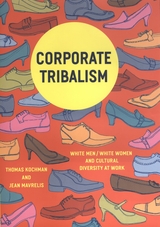 Corporate Tribalism: White Men/White Women and Cultural Diversity at Work
Thomas Kochman and Jean Mavrelis
University of Chicago Press, 2009 The 2008 elections shattered historical precedents and pushed race and gender back to the forefront of our national consciousness. The wide range of reactions to the efforts of Barack Obama, Hillary Clinton, and Sarah Palin dramatically reflected ongoing conflicts over diversity in our society, especially in the venue where people are most likely to encounter them: work. As more and more people who aren’t white men enter corporate America, we urgently need to learn how to avoid clashes over these issues and how to resolve them when they do occur.
Thomas Kochman and Jean Mavrelis have been helping corporations successfully do that for over twenty years. Their diversity training and consulting firm has helped managers and employees at numerous companies recognize and overcome the cultural bases of miscommunication between ethnic groups and across gender lines—and in Corporate Tribalism they seek to share their expertise with the world. In the first half of the book, Kochman addresses white men, explicating the ways that their cultural background can motivate their behavior, work style, and perspective on others. Then Mavrelis turns to white women, focusing on the particular problems they face, including conflicts with men, other women, and themselves. Together they emphasize the need for a multicultural—rather than homogenizing—approach and offer constructive ideas for turning the workplace into a more interactive community for everyone who works there.
Written with the wisdom and clarity gained from two decades of hands-on work, Corporate Tribalism will be an invaluable resource as we look toward a future beyond the glass ceiling.
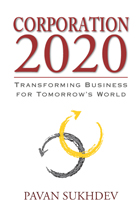 Corporation 2020: Transforming Business for Tomorrow's World
Pavan Sukhdev
Island Press, 2012 There is an emerging consensus that all is not well with today’s market-centric economic model. Although it has delivered wealth over the last half century and pulled millions out of poverty, it is recession-prone, leaves too many unemployed, creates ecological scarcities and environmental risks, and widens the gap between the rich and the poor. Around $1 trillion a year in perverse subsidies and barriers to entry for alternative products maintain “business-as-usual” while obscuring their associated environmental and societal costs. The result is the broken system of social inequity, environmental degradation, and political manipulation that marks today’s corporations.
We aren’t stuck with this dysfunctional corporate model, but business needs a new DNA if it is to enact the comprehensive approach we need. Pavan Sukhdev lays out a sweeping new vision for tomorrow’s corporation: one that will increase human wellbeing and social equity, decrease environmental risks and ecological losses, and still generate profit. Through a combination of internal changes in corporate governance and external regulations and policies, Corporation 2020 can become a reality in the next decade—and it must, argues Sukhdev, if we are to avert catastrophic social imbalance and ecological harm.
Corporation 2020 presents new approaches to measuring the true costs of business and the corporation’s obligation to society. From his insightful look into the history of the corporation to his thoughtful discussion of the steps needed to craft a better corporate model, Sukhdev offers a hopeful vision for the role of business in shaping a more equitable, sustainable future.
The Corporation in Modern Society
Edward S. Mason
Harvard University Press This collective study evaluates the social contribution of the large corporation in American life and its concommitant problems. To whom are corporate managements responsible? From what groups do their managers come and how are they selected? How great is their power? How does the corporation’s severance of ownership from control affect the principle of private property? Is the similarity between corporate organization and governmental-agency structure increasing? This symposium of essays comprehends the views of experts on these and related problems, and concludes with considerations of the role of the corporation in Great Britain and of the significance of various aspects of industrial organization in the Soviet Union.
 The Corporation That Changed the World: How the East India Company Shaped the Modern Multinational
Nick Robins
Pluto Press, 2012 "A powerful analysis of the rise and fall of the British East India Company, a private company that conquered a subcontinent and subjugated an entire people."—Huw Bowen, Swansea University
"Elegantly written and sharply argued, Nick Robins' gripping account of the rise and fall of the English East India Company brings to life a crucial episode in the history of globalization."—Sankar Muthu, University of Chicago
The English East India Company was the mother of the modern multinational. Its trading empire encircled the globe, importing Asian luxuries such as spices, textiles, and teas. But it also conquered much of India with its private army and broke open China's markets with opium. The Company's practices shocked its contemporaries and still reverberate today, offering lessons about unfettered capitalism, corporate responsibility, and the legacy of colonialism.
The Corporation That Changed the World is the first book to reveal the Company's enduring legacy as a corporation. This expanded edition explores how the four forces of scale, technology, finance, and regulation drove its spectacular rise and fall. For decades, the Company was simply too big to fail, and stock market bubbles, famines, drug-running, and even duels between rival executives are to be found in this new account.
Table of Contents:
Introduction
Chronology
1 The Hidden Wound
2 The Imperious Company
3 Out of the Shadows
4 The Bengal Revolution
5 The Great East Indian Crash
6 Regulating the Company
7 Justice Will Be Done
8 The Toxic Exchange
10 The Unfettered Business
Epilogue
For Robins, the Company's story provides vital lessons on both the role of corporations in world history and the steps required to make global business accountable today.
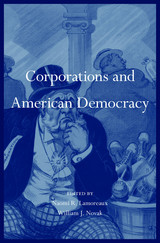 Corporations and American Democracy
Naomi R. Lamoreaux
Harvard University Press, 2017 Recent U.S. Supreme Court decisions in Citizens United and other high-profile cases have sparked passionate disagreement about the proper role of corporations in American democracy. Partisans on both sides have made bold claims, often with little basis in historical facts. Bringing together leading scholars of history, law, and political science, Corporations and American Democracy provides the historical and intellectual grounding necessary to put today’s corporate policy debates in proper context.
From the nation’s founding to the present, Americans have regarded corporations with ambivalence—embracing their potential to revolutionize economic life and yet remaining wary of their capacity to undermine democratic institutions. Although corporations were originally created to give businesses and other associations special legal rights and privileges, historically they were denied many of the constitutional protections afforded flesh-and-blood citizens.
This comprehensive volume covers a range of topics, including the origins of corporations in English and American law, the historical shift from special charters to general incorporation, the increased variety of corporations that this shift made possible, and the roots of modern corporate regulation in the Progressive Era and New Deal. It also covers the evolution of judicial views of corporate rights, particularly since corporations have become the form of choice for an increasing variety of nonbusiness organizations, including political advocacy groups. Ironically, in today’s global economy the decline of large, vertically integrated corporations—the type of corporation that past reform movements fought so hard to regulate—poses some of the newest challenges to effective government oversight of the economy.
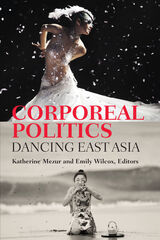 Corporeal Politics: Dancing East Asia
Katherine Mezur and Emily Wilcox, Editors
University of Michigan Press, 2020 In Corporeal Politics, leading international scholars investigate the development of dance as a deeply meaningful and complex cultural practice across time, placing special focus on the intertwining of East Asia dance and politics and the role of dance as a medium of transcultural interaction and communication across borders. Countering common narratives of dance history that emphasize the US and Europe as centers of origin and innovation, the expansive creativity of dance artists in East Asia asserts its importance as a site of critical theorization and reflection on global artistic developments in the performing arts.
Through the lens of “corporeal politics”—the close attention to bodily acts in specific cultural contexts—each study in this book challenges existing dance and theater histories to re-investigate the performer's role in devising the politics and aesthetics of their performance, as well as the multidimensional impact of their lives and artistic works. Corporeal Politics addresses a wide range of performance styles and genres, including dances produced for the concert stage, as well as those presented in popular entertainments, private performance spaces, and street protests.
Corporeal Words: Mikhail Bakhtins Theology Discourse
Alexandar Mihailovic
Northwestern University Press, 1997 This text explores Mikhail Bakhtin's reliance on the terms and concepts of theology. It begins with an identification of the theological categories and terms recalling Christology in general and Trinitarianism in particular that emerge throughout Bakhtin's long and varied career. Alexander Mihailovic discusses the elaborately wrought subtextual imagery, wordplay, and palpable orality of Bakhtin's theology of discourse, and explores the role that theology plays in supporting Bakhtin's ideas about the anti-hierarchical drift of language and culture.
 The Corps and the Shore
Orrin H. Pilkey and Katharine L. Dixon
Island Press, 1996 For more than a century, the U.S. Army Corps of Engineers has been building fortifications along the American coastline in an effort to protect our vulnerable shores. With the prospect of seaborne invasion becoming increasingly unlikely, the Corps has turned its attention to a more subtle but no less dangerous threat: the insidious effects of coastal erosion.In The Corps and the Shore, Orrin H. Pilkey, the nation's most outspoken coastal geologist, and Katharine L. Dixon, an educator and activist for national coastal policy reform, provide a comprehensive examination of the impact of coastal processes on developed areas and the ways in which the Corps of Engineers has attempted to manage erosion along America's coastline.Through detailed case studies of large-scale projects in Texas, Maine, Pennsylvania, North Carolina, and South Carolina, the authors demonstrate the shortcomings of the Corps's underlying assumptions and methodology. As they discuss the role of local citizens in the project process, they highlight the interaction between local Corps offices and community officials and residents. By focusing on different types of problems in various regions of the country, Pilkey and Dixon clearly show how the Corps has repeatedly failed to act in the best interest of those most affected by the projects. As well as criticizing Corps practices, the authors provide numerous suggestions for reforming the Corps and making it both more scientifically accountable and more accountable to the citizens it is intended to serve.The Corps and the Shore is essential reading for coastal residents, environmentalists, planners, and coastal city officials as well as geologists, civil engineers, marine scientists, and anyone concerned with the impact of human society on our shorelines.
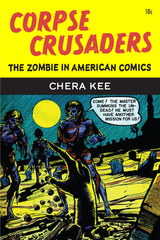 Corpse Crusaders: The Zombie in American Comics
Chera Kee
University of Michigan Press, 2024 In the popular imagination, zombies are scary, decomposing corpses hunting down the living. But since the 1930s, there have also been other zombies shambling across the panels of comic books—zombies that aren’t quite what most people think zombies should be. There have been zombie slaves, zombie henchmen, talking zombies, beautiful zombies, and even zombie heroes.
Using archival research into Golden Age comics and extended analyses of comics from the 1940s to today, Corpse Crusaders explores the profound influence early action/adventure and superheroic generic conventions had on shaping comic book zombies. It takes the reader from the 1940s superhero, the Purple Zombie, through 1950s revenge-from-the-grave zombies, to the 1970s anti-hero, Simon Garth (“The Zombie”) and the gruesome heroes-turned-zombies of Marvel Zombies. In becoming immersed in superheroic logics early on, the zombie in comics became a figure that, unlike the traditional narrative uses of other monsters, actually served to defend the status quo. This continuing trend not only provides insight into the overwhelming influence superheroes have had on the comic book medium, but it also provides a unique opportunity to explore the ways in which zombiism and superheroism parallel each other. Corpse Crusaders explores the ways that truth, justice, and the American way have influenced the undead in comics and turned what is often a rebellious figure into one that works to save the day.
 Corpse Magic: Echoes Active in the Slayer-Slain Nexus
Michael Taussig
University of Chicago Press, 2025 Corpse Magic examines beliefs about vengeance the slain magically enact on their killers, focusing on lethal violence in Colombia and the United States.
Corpse Magic is a response to the global ubiquity of violence. In this bracing new work, the influential anthropologist Michael Taussig puts killings in Colombia, by gangs and guerrillas, police and the military, and agents of agribusiness, in conversation with mass shootings and police killings, disproportionately of Black people, in the United States. In both contexts, he examines the effects of violent killing on its victims, its perpetrators, and those who witness and relive it through media footage.
Drawing from literature, religion, philosophy, and anthropology, Taussig traces the idea that the act of killing “infects” the killer and spreads outward, then connects this concept of contagion to beliefs in Colombia and elsewhere that the souls of the slain possess those of their slayers and that magic can be used to empower or thwart corpses as agents of vengeance. In this powerful and imaginative work, Taussig asks what kind of power the dead continue to have; what kinds of magic can manage that power; and what, if anything, can stop seemingly endless cycles of violence.
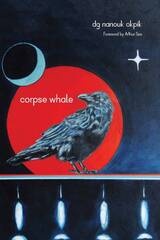 Corpse Whale
dg nanouk okpik; Foreword by Arthur Sze
University of Arizona Press, 2012 A self-proclaimed “vessel in which stories are told from time immemorial,” poet dg nanouk okpik seamlessly melds both traditional and contemporary narrative, setting her apart from her peers. The result is a collection of poems that are steeped in the perspective of an Inuit of the twenty-first century—a perspective that is fresh, vibrant, and rarely seen in contemporary poetics.
Fearless in her craft, okpik brings an experimental, yet poignant, hybrid aesthetic to her first book, making it truly one of a kind. “It takes all of us seeing, hearing, touching, tasting, and smelling to be one,” she says, embodying these words in her work. Every sense is amplified as the poems, carefully arranged, pull the reader into their worlds. While each poem stands on its own, they flow together throughout the collection into a single cohesive body.
The book quickly sets up its own rhythms, moving the reader through interior and exterior landscapes, dark and light, and other spaces both ecological and spiritual. These narrative, and often visionary, poems let the lives of animal species and the power of natural processes weave into the human psyche, and vice versa.
Okpik’s descriptive rhythms ground the reader in movement and music that transcend everyday logic and open up our hearts to the richness of meaning available in the interior and exterior worlds.
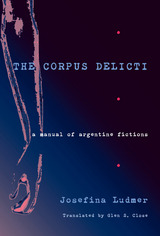 The Corpus Delicti: A Manual of Argentine Fictions
Josefina Ludmer
University of Pittsburgh Press, 2004
An intellectual tour de force from one of today’s leading critics of Latin American literature and culture, The Corpus Delicti (The Body of Crime) is a manual of crime, a compendium of crime tales, and an extended meditation on the central role of crime in literature, in life, and in the life of the nation.
Drawing her examples from canonical texts, popular novels, newspaper serials, and more, Josefina Ludmer captures the wide range of Argentine crime stories and detective fiction from the late nineteenth and early twentieth centuries. She offers more than a mere genre study, examining the relationship of crime and punishment to the formation of law, the body, and the modern state, exposing the ways in which literature—both high art and mass culture—can help construct, not just represent, social reality.
Covering a dazzling array of primary sources, social history, and cultural theory, this provocative work is also a structural masterpiece, challenging readers as it charts new roles for text and notes. In this redefined dialogue, the notes variously offer alternate views, additional insights, and, often, parallel commentaries. Glen Close’s stylish translation captures the energy of Ludmer’s prose—simultaneously subtle and daring—for English-language readers.
Corpus des Mosaiques de Tunisie
Cecile Duliere
Harvard University Press This volume contains 55 pages of black and white photographs, as well as 14 pages of color photographers of the mosaics.
 Corpus Mysticum: The Eucharist and the Church in the Middle Ages
Henri de Lubac, S.J.
University of Notre Dame Press, 2007
One of the major figures of twentieth-century Catholic theology, Henri Cardinal de Lubac was known for his attention to the doctrine of the church and its life within the contemporary world. In Corpus Mysticum de Lubac investigates a particular understanding of the relation of the church to the eucharist. He sets out the nature of the church as communion, a doctrine that influenced the thinking of the Second Vatican Council.
With the publication of Corpus Mysticum, this important text of contemporary Catholic ecclesiology and sacramental theology is available for the first time in an English translation. Its publication fills a significant gap in the range of de Lubac's works available to English-speaking scholars. It will be an important resource in the widespread and ongoing ecumenical discussions among Catholic, Protestant, and Orthodox theologians.
"This translation of Corpus Mysticum is a gift to medieval historians, liturgists, ecclesiologists, and any Christian interested in a profoundly prophetic reading of one of the central mysteries of her or his religion. This is one of a very few books that has formed our present consciousness of who we are as Catholics and Christians. To preserve access to it will significantly aid our attempts to move into a future to some extent already foreshadowed in de Lubac's study of the past." —Gary Macy, University of San Diego
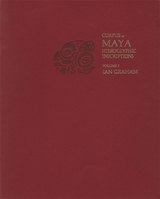 Corpus of Maya Hieroglyphic Inscriptions, Volume 1: Introduction
Ian Graham
Harvard University Press, 1975 The goal of the Corpus of Maya Hieroglyphic Inscriptions is to document in photographs and detailed line drawings all known Maya inscriptions and their associated figurative art. When complete, the Corpus will have published the inscriptions from over 200 sites and 2,000 monuments. The series has been instrumental in the remarkable success of the ongoing process of deciphering Maya writing, making available hundreds of texts to epigraphers working around the world.
Volume 1 includes a Spanish translation of the Introduction text and six appendices: sources of sculpture and their codes; list of abbreviations and symbols used in the Corpus series; table of tun-endings between 8.1.15.0.0 and 10.9.3.0.0; a complete Calendar Round in tabular form, giving the position of tun-endings between 8.1.15.0.0 and 10.9.3.0.0; a method for the quick computation of Calendar Round position, by John S. Justeson; and Moon Age tables, by Lawrence Roys.
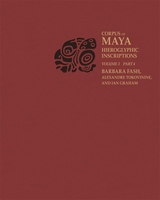 Corpus of Maya Hieroglyphic Inscriptions, Volume 3: Part 4: Yaxchilan
Barbara W. Fash
Harvard University Press The goal of the Corpus of Maya Hieroglyphic Inscriptions is to document in photographs and detailed line drawings all known Maya inscriptions and their associated figurative art. As monuments continue to be discovered, the CMHI series is ongoing and far from complete. It has been instrumental in the remarkable success of the ongoing process of deciphering Maya writing, making available hundreds of texts to epigraphers working around the world, in addition to assisting studies among Maya communities and scholars.
This folio-sized volume documents thirty stelae at Yaxchilan, a Classic Maya city located on the Usumacinta River in the state of Chiapas, Mexico. Precisely rendered line drawings and three-dimensional scans bring out details of the monuments that would otherwise be invisible to the naked eye. These illustrations are accompanied by descriptions of the stelae in English and Spanish.
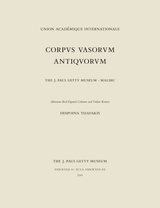 Corpus Vasorum Antiquorum, Fascicule 10: Athenian Red-Figure Column and Volute Kraters
Despoina Tsiafakis
J. Paul Getty Trust, The, 2019 This expansive catalogue of ancient Greek painted pottery brings an important series into the digital age with a new open-access format. Cataloging some hundred thousand examples of ancient Greek painted pottery held in collections around the world, the authoritative Corpus Vasorum Antiquorum (Corpus of Ancient Vases) is the oldest research project of the Union Académique Internationale. Nearly four hundred volumes have been published since the first fascicule appeared in 1922.
This new fascicule of the CVA—the tenth issued by the J. Paul Getty Museum and the first ever to be published open access—presents a selection of Attic red-figure column and volute kraters ranging from 520 to 510 BCE through the early fourth century BCE. Among the works included are a significant dinoid volute krater and a volute krater with the Labors of Herakles that is attributed to the Kleophrades Painter.
The free online edition of this open-access catalogue is available at www.getty.edu/publications/cva10/. Also available are free PDF, EPUB, and Kindle/MOBI downloads of the book, CSV and JSON downloads of the object data, and JPG downloads of the catalogue images.
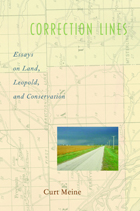 Correction Lines: Essays on Land, Leopold, and Conservation
Curt Meine
Island Press, 2004 The last fifteen years have been a period of dramatic change, both in the world at large and within the fields of ecology and conservation. The end of the Cold War, the dot-com boom and bust, the globalizing economy, and the attacks of September 11, among other events and trends, have reshaped our worldview and the political environment in which we find ourselves. At the same time, emerging knowledge, needs, and opportunities have led to a rapid evolution in our understanding of the scientific foundations and social context of conservation.
Correction Lines is a new collection of essays from one of our most thoughtful and eloquent writers on conservation, putting these recent changes into perspective and exploring the questions they raise about the past, present, and future of the conservation movement. The essays explore interrelated themes: the relationship between biological and social dimensions; the historic tension between utilitarian and preservationist approaches; the integration of varied cultural perspectives; the enduring legacy of Aldo Leopold; the contrasts and continuities between conservation and environmentalism; the importance of political reform; and the need to "retool" conservation to address twentyfirst-century realities.
Collectively the essays assert that we have reached a critical juncture in conservation—a "correction line" of sorts. Correction Lines argues that we need a more coherent and comprehensive account of the past if we are to understand our present circumstances and move forward under unprecedented conditions.
Meine brings together a deep sense of history with powerful language and compelling imagery, yielding new insights into the origins and development of contemporary conservation. Correction Lines will help us think more clearly about the forces that have changed, and are changing, conservation, and inspire us to address current realities and future needs.
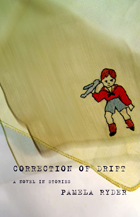 Correction of Drift: A Novel in Stories
Pamela Ryder
University of Alabama Press, 2008 Explores the lives behind the headlines of the Lindbergh baby kidnapping, evoking anew the scope of tragedy through the vision of literary fiction. It was called the crime of the century, and it was front-page news: the Lindbergh baby kidnapping. Correction of Drift: A Novel in Stories imagines the private lives behind the headlines of the case, and examines the endurance—and demise—of those consumed by the tragedy. Every character brings a different past life to the event, be it a life of celebrity, or of misfortune and obscurity. There is Anne Morrow Lindbergh—daughter of a millionaire, the shy poet who married a national hero; Charles Lindbergh—the rough-and-tumble Minnesota barnstormer, who at age twenty-five made the first transatlantic flight, bringing him world-wide prestige; Violet—the skittish family maid with a curious attachment to the boy and a secret life that lapses into hysteria and self-destruction; and the kidnappers—an assembly of misfits with their own histories of misery. All are bound by the violence, turmoil, and mystery of the child’s disappearance as it becomes evident that each life has been irrevocably changed. Patterns of bereavement and loss illuminate these stories: despair at the death of a child; the retreat into seclusion; the comfort and the desolation of a marriage. But the heart of this novel is the far-reaching nature of tragedy, and the ways the characters go on to live—or end—their lives.
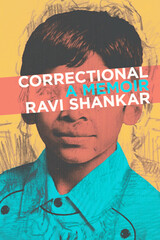 Correctional
Ravi Shankar
University of Wisconsin Press, 2021 The first time Ravi Shankar was arrested, he spoke out against racist policing on National Public Radio and successfully sued the city of New York. The second time, he was incarcerated when his promotion to full professor was finalized. During his ninety-day pretrial confinement at the Hartford Correctional Center—a level 4, high-security urban jail in Connecticut—he met men who shared harrowing and heart-felt stories. The experience taught him about the persistence of structural racism, the limitations of mass media, and the pervasive traumas of twenty-first-century daily life.
Shankar’s bold and complex self-portrait—and portrait of America—challenges us to rethink our complicity in the criminal justice system and mental health policies that perpetuate inequity and harm. Correctional dives into the inner workings of his mind and heart, framing his unexpected encounters with law and order through the lenses of race, class, privilege, and his bicultural upbringing as the first and only son of South Indian immigrants. Vignettes from his early life set the scene for his spectacular fall and subsequent struggle to come to terms with his own demons. Many of them, it turns out, are also our own.
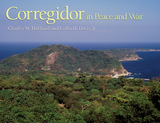 Corregidor in Peace and War
Charles M. Hubbard & Collis H. Davis, Jr.
University of Missouri Press, 2007
A picturesque island strategically located at the entrance of Manila Bay, Corregidor has had military significance since the days of the Spanish galleon trade. Although its dramatic role in the defense of the Philippines during World War II is well documented, relatively little is known about its history apart from military involvement. This richly illustrated book tells the story of the island and sheds new light on the geopolitical forces that shaped its destiny.
Corregidor in Peace and War is a biography of a mysterious island known simply as “the Rock.” It traces the buildup of armaments and fortifications on the island after the American occupation of the Philippines in 1898, then chronicles clandestine military preparations for an expected war with Imperial Japan. It vividly documents aspects of island life before World War II—including the enviable lifestyle of the American officer corps stationed there, the development of the island’s rail system using imported American streetcars, and the creation of the Philippine Scouts coastal artillery units—and then records its loss and recapture during the struggle with Japan. The final chapter reviews the island’s history since the war.
More than 150 illustrations include maps and photos from both the Spanish and American periods up to the present day—some photographs published more than a century ago and impeccably restored, many never before seen in print. Interweaving new and old photos with informative text, Charles Hubbard and Collis Davis, Jr., provide a guided tour that captures the natural beauty of an island once enjoyed by early residents but subsequently decimated by cannon fire and aerial bombardment. Brilliant color images evoke a place where flora and wildlife coexist alongside abandoned fortifications, documenting stark reminders from times of war. Other photographs show the majestic “suicide cliffs” where Japanese soldiers are said to have jumped to their deaths rather than become prisoners.
Now a tourist destination and historic monument, Corregidor remains a formidable island worthy of its nickname. Corregidor in Peace and War uncovers its many unknown facets and singularly reflects the experiences of both a place and a people that deserve a prominent place in history.
 Correspondence
Lorenzo Valla
Harvard University Press, 2013 Lorenzo Valla (1406-1457) was the leading philologist of the first half of the fifteenth century, as well as a philosopher, theologian, and translator. His extant Latin letters are fewer than those of many of his contemporaries, since he never collected or consciously preserved them. For that reason they afford a direct and unguarded window into the working life of the most passionate, difficult, and interesting of the Italian humanists. They show him as a teacher and secretary, but above all as a writer who continually worked and reworked his major contributions to dialectic and philology, notably his masterpiece on the Elegances of the Latin Language, a central text of the Renaissance. More plentiful are the letters of others to him, which place him at the center of a humanist network that extended from Venice to Naples. They also shed light on the furious polemics in which he involved himself. These letters, including one previously unpublished, are now edited for the first time alongside Valla's own correspondence. The translation is the first into any modern language.
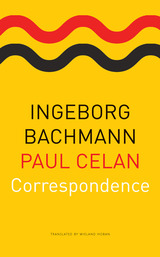 Correspondence
Paul Celan and Ingeborg Bachmann
Seagull Books, 2019 Paul Celan (1920–70) is one of the best-known German poets of the Holocaust; many of his poems, admired for their spare, precise diction, deal directly with its stark themes. Austrian writer Ingeborg Bachmann (1926–73) is recognized as one of post–World War II German literature’s most important novelists, poets, and playwrights. It seems only appropriate that these two contemporaries and masters of language were at one time lovers, and they shared a lengthy, artful, and passionate correspondence. Collected here for the first time in English are their letters written between 1948 and 1961. Their correspondence forms a moving testimony of the discourse of love in the age after Auschwitz, with all the symptomatic disturbances and crises caused by their conflicting backgrounds and their hard-to-reconcile designs for living—as a woman, as a man, as writers. In addition to the almost 200 letters, the volume includes an important exchange between Bachmann and Gisèle Celan-Lestrange, who married Celan in 1951, as well as the letters between Paul Celan and Swiss writer Max Frisch. “Scarcely more breathlessly and desperately can two lovers ever have struggled for words. Little known among German literary historians, the relationship between these two poets amounts to one of the most dramatic and momentous occurrences in German literature.”—FAZ, on the German edition
Correspondence Across a Room
Vsevolod I. Ivanov and M.O. Gershenzon
Northwestern University Press, 1984 The twelve letters that constitute this volume were exchanged by two of Russia's leading intellectuals, who, in the summer of 1920, weakened by the privations of the Civil War, were admitted to a municipal rest home outside Moscow. At the Sanatorium for Scientific and Literary Workers, they found themselves installed in opposite corners of the same room.
Day-long conversations having drawn them away from their literary tasks, the two then decided to converse in writing. Correspondence, the result, examines the condition and future of Western culture-whose values, according to the historian Gershenzon, have deteriorated into a deadly burden upon mankind, into mankind's ultimate prison. For the poet Ivanov, it is not the disavowal of a cultural heritage but the struggle to recover man's own unity with God that alone guarantees his true, his spiritual freedom.
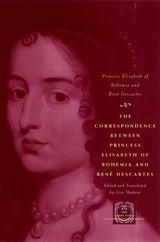 The Correspondence between Princess Elisabeth of Bohemia and René Descartes
Princess Elisabeth of Bohemia and René Descartes
University of Chicago Press, 2007 Between the years 1643 and 1649, Princess Elisabeth of Bohemia (1618–80) and René Descartes (1596–1650) exchanged fifty-eight letters—thirty-two from Descartes and twenty-six from Elisabeth. Their correspondence contains the only known extant philosophical writings by Elisabeth, revealing her mastery of metaphysics, analytic geometry, and moral philosophy, as well as her keen interest in natural philosophy. The letters are essential reading for anyone interested in Descartes’s philosophy, in particular his account of the human being as a union of mind and body, as well as his ethics. They also provide a unique insight into the character of their authors and the way ideas develop through intellectual collaboration.
Philosophers have long been familiar with Descartes’s side of the correspondence. Now Elisabeth’s letters—never before available in translation in their entirety—emerge this volume, adding much-needed context and depth both to Descartes’s ideas and the legacy of the princess. Lisa Shapiro’s annotated edition—which also includes Elisabeth’s correspondence with the Quakers William Penn and Robert Barclay—will be heralded by students of philosophy, feminist theorists, and historians of the early modern period.
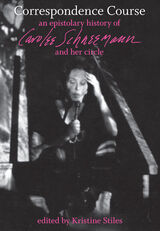 Correspondence Course: An Epistolary History of Carolee Schneemann and Her Circle
Kristine Stiles, ed.
Duke University Press, 2010 Creator of such acclaimed works as the performance Meat Joy and the film Fuses, for decades the artist Carolee Schneemann has saved the letters she has written and received. Much of this correspondence is published here for the first time, providing an epistolary history of Schneemann and other figures central to the international avant-garde of happenings, Fluxus, performance, and conceptual art. Schneemann corresponded for more than forty years with such figures as the composer James Tenney, the filmmaker Stan Brakhage, the artist Dick Higgins, the dancer and filmmaker Yvonne Rainer, the poet Clayton Eshleman, and the psychiatrist Joseph Berke. Her “tribe,” as she called it, altered the conditions under which art is made and the form in which it is presented, shifting emphasis from the private creation of unique objects to direct engagement with the public in ephemeral performances and in expanded, nontraditional forms of music, film, dance, theater, and literature. Kristine Stiles selected, edited, annotated, and wrote the introduction to the letters, assembling them so that readers can follow the development of Schneemann’s art, thought, and private and public relationships. The correspondence chronicles a history of energy and invention, joy and sorrow, and charged personal and artistic struggles. It sheds light on the internecine aesthetic politics and mundane activities that constitute the exasperating vicissitudes of making art, building an artistic reputation, and negotiating an industry as unpredictable and demanding as the art world in the mid- to late twentieth century.
The Correspondence of Athanasius I, Patriarch of Constantinople
Alice-Mary Talbot
Harvard University Press The letters by Athanasius I addressed to Emperor Andronicus II, to members of his family, and to imperial officials reveal much that is of interest in the political, social, and religious spheres of the Byzantine Empire just before and just after the turn of the thirteenth century.
The Correspondence of Athanasius I, Patriarch of Constantinople sheds light on the events of his two patriarchates (1289–1293, 1303–1309) and corrects accounts found in the histories of Pachymeres and Gregoras. Political and social conditions of the empire are here described in detail as the patriarch struggled to alleviate the misery of the people and to discipline the officials of the Church for their venality and indolence. The letters also provide glimpses of daily life in Byzantium and discuss otherwise unknown personages.
The Correspondence of Edmund Burke, Volume X: Index
Edmund Burke
University of Chicago Press, 1978 This, the last volume in the series, provides the keys to all the others. All letters to and from Burke are listed, and the material in the letters themselves analysed in a comprehensive general index.
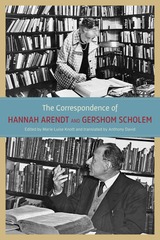 The Correspondence of Hannah Arendt and Gershom Scholem
Hannah Arendt and Gershom Scholem
University of Chicago Press, 2017 Few people thought as deeply or incisively about Germany, Jewish identity, and the Holocaust as Hannah Arendt and Gershom Scholem. And, as this landmark volume reveals, much of that thinking was developed in dialogue, through more than two decades of correspondence.
Arendt and Scholem met in 1932 in Berlin and quickly bonded over their mutual admiration for and friendship with Walter Benjamin. They began exchanging letters in 1939, and their lively correspondence continued until 1963, when Scholem’s vehement disagreement with Arendt’s Eichmann in Jerusalem led to a rupture that would last until Arendt’s death a dozen years later. The years of their friendship, however, yielded a remarkably rich bounty of letters: together, they try to come to terms with being both German and Jewish, the place and legacy of Germany before and after the Holocaust, the question of what it means to be Jewish in a post-Holocaust world, and more. Walter Benjamin is a constant presence, as his life and tragic death are emblematic of the very questions that preoccupied the pair. Like any collection of letters, however, the book also has its share of lighter moments: accounts of travels, gossipy dinner parties, and the quotidian details that make up life even in the shadow of war and loss.
In a world that continues to struggle with questions of nationalism, identity, and difference, Arendt and Scholem remain crucial thinkers. This volume offers us a way to see them, and the development of their thought, anew.
The Correspondence of Ignatios the Deacon
Cyril Mango
Harvard University Press, 1997 Ignatios the Deacon was a key figure in the revival of literary culture that took place at Constantinople in the first half of the ninth century. He is best known for his hagiographical works, but he also wrote poems, compiled an anthology of ancient proverbs, and edited textbooks. For some time he served as bishop of Nicaea under an Iconoclastic regime, but later repented of his errors and moved into the “orthodox” camp.
Preserved in a single manuscript, Ignatios’s correspondence has remained practically unknown to scholars. Some of the letters deal with literary trifles, while others contain valuable information on the social and economic history of the period. Taken together, they afford a unique glimpse into the activity of a Byzantine intellectual, struggling to survive in a time of bitter doctrinal strife.
The Correspondence of Ignatios the Deacon
Cyril Mango
Harvard University Press Ignatios the Deacon was a key figure in the revival of literary culture that took place at Constantinople in the first half of the ninth century. He is best known for his hagiographical works, but he also wrote poems, compiled an anthology of ancient proverbs, and edited textbooks. For some time he served as bishop of Nicaea under an Iconoclastic regime, but later repented of his errors and moved into the “orthodox” camp.
Preserved in a single manuscript, Ignatios’s correspondence has remained practically unknown to scholars. Some of the letters deal with literary trifles, while others contain valuable information on the social and economic history of the period. Taken together in The Correspondence of Ignatios the Deacon, his letters afford a unique glimpse into the activity of a Byzantine intellectual, struggling to survive in a time of bitter doctrinal strife.
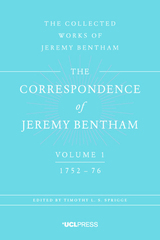 Correspondence of Jeremy Bentham, Volume 1: 1752 to 1776
Jeremy Bentham, edited by Timothy L. S. Sprigge, and series edited by J.H. Burns
University College London, 2017 The first five volumes of the Correspondence of Jeremy Bentham contain more than 1,300 letters written to and from Bentham over fifty years, beginning in 1752 at the age of three and ending in 1797 with correspondence concerning his attempts to set up a national plan for the provision of poor relief. The letters in Volume 1 (1752-1776) document his difficult relationship with his father—Bentham lost five infant siblings and his mother—and his increasing attachment to his surviving brother, Samuel. We also see an early glimpse of Bentham’s education, as he committed himself to philosophy and legal reform. The exchanges in Volume 2 (1777-1780) cover a major event: a trip by Samuel to Russia. This volume also reveals Bentham working intensively on the development of a code of penal law, enhancing his reputation as a legal thinker. Volume 3 (1781-1788) shows that despite developing a host of original ideas, Bentham actually published little during this time. Nevertheless, this volume also reveals how the foundations were being laid for the rise of Benthamite utilitarianism. The letters in Volume 4 (1788-1793) coincide with the publication of An Introduction to the Principles of Morals and Legislation, which had little impact at the time. In 1791 he published The Panopticon: or, The Inspection-House, which he proposed the building of a circular penitentiary house. Bentham’s letters unfold against the backdrop of the French Revolution and show that his initial sympathy for France began to turn into hostility. Bentham’s life during the years in Volume 5 (1794-1797) was dominated by the panopticon, both as a prison and as an indigent workhouse. The letters in this volume document in great detail Bentham’s attempt to build a panopticon prison in London, and the opposition he faced from local aristocratic landowners.
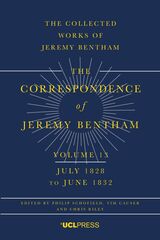 Correspondence of Jeremy Bentham, Volume 13: July 1828 to June 1832
Edited by Philip Schofield, Tim Causer, and Chris Riley
University College London, 2024 A comprehensive collection of letters exchanged by Bentham with notable figures worldwide from 1828 until his death in 1832.
The Correspondence of Jeremy Bentham, Volume 13 contains authoritative and fully annotated texts of all known and publishable letters sent both to and from Bentham between 1st July 1828 and his death on 6th June 1832. In addition to 474 letters, the volume contains three memorandums concerning Bentham’s health shortly before his death, his last will and testament, and extracts from both the autobiography and the manuscript diaries of Bentham’s nephew George. Among the letters that have already been published, most are drawn from the edition of The Works of Jeremy Bentham, prepared under the superintendence of Bentham’s literary executor John Bowring. A small number of letters have been reproduced from newspapers and periodicals.
This volume publishes, for the first time, the entire extant correspondence between Bentham and Daniel O’Connell, the Irish Liberator. Other new acquaintances include the barrister and law reformer, Charles Sinclair Cullen, and the Real Property Commissioner, John Tyrrell. Throughout the period, Bentham maintained regular contact with old friends and connections, but he also engaged in sporadic correspondence with such leading figures in government as the Duke of Wellington, Robert Peel, and Henry Brougham. Further afield, Bentham corresponded, amongst others, with the Marquis de La Fayette in France, Edward Livingston in the United States of America, and José Del Valle in Guatemala.
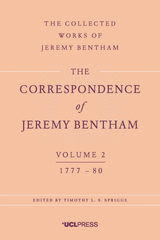 Correspondence of Jeremy Bentham, Volume 2: 1777 to 1780
Jeremy Bentham, edited by Timothy L. S. Sprigge, and series edited by J.H. Burns
University College London, 2017 The first five volumes of the Correspondence of Jeremy Bentham contain more than 1,300 letters written to and from Bentham over fifty years, beginning in 1752 at the age of three and ending in 1797 with correspondence concerning his attempts to set up a national plan for the provision of poor relief. The letters in Volume 1 (1752-1776) document his difficult relationship with his father—Bentham lost five infant siblings and his mother—and his increasing attachment to his surviving brother, Samuel. We also see an early glimpse of Bentham’s education, as he committed himself to philosophy and legal reform. The exchanges in Volume 2 (1777-1780) cover a major event: a trip by Samuel to Russia. This volume also reveals Bentham working intensively on the development of a code of penal law, enhancing his reputation as a legal thinker. Volume 3 (1781-1788) shows that despite developing a host of original ideas, Bentham actually published little during this time. Nevertheless, this volume also reveals how the foundations were being laid for the rise of Benthamite utilitarianism. The letters in Volume 4 (1788-1793) coincide with the publication of An Introduction to the Principles of Morals and Legislation, which had little impact at the time. In 1791 he published The Panopticon: or, The Inspection-House, which he proposed the building of a circular penitentiary house. Bentham’s letters unfold against the backdrop of the French Revolution and show that his initial sympathy for France began to turn into hostility. Bentham’s life during the years in Volume 5 (1794-1797) was dominated by the panopticon, both as a prison and as an indigent workhouse. The letters in this volume document in great detail Bentham’s attempt to build a panopticon prison in London, and the opposition he faced from local aristocratic landowners.
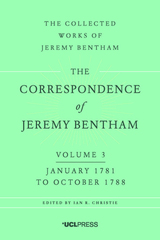 Correspondence of Jeremy Bentham, Volume 3: January 1781 to October 1788
Jeremy Bentham, edited by Ian R. Christie, and series edited by J.H. Burns
University College London, 2017 The first five volumes of the Correspondence of Jeremy Bentham contain more than 1,300 letters written to and from Bentham over fifty years, beginning in 1752 at the age of three and ending in 1797 with correspondence concerning his attempts to set up a national plan for the provision of poor relief. The letters in Volume 1 (1752-1776) document his difficult relationship with his father—Bentham lost five infant siblings and his mother—and his increasing attachment to his surviving brother, Samuel. We also see an early glimpse of Bentham’s education, as he committed himself to philosophy and legal reform. The exchanges in Volume 2 (1777-1780) cover a major event: a trip by Samuel to Russia. This volume also reveals Bentham working intensively on the development of a code of penal law, enhancing his reputation as a legal thinker. Volume 3 (1781-1788) shows that despite developing a host of original ideas, Bentham actually published little during this time. Nevertheless, this volume also reveals how the foundations were being laid for the rise of Benthamite utilitarianism. The letters in Volume 4 (1788-1793) coincide with the publication of An Introduction to the Principles of Morals and Legislation, which had little impact at the time. In 1791 he published The Panopticon: or, The Inspection-House, which he proposed the building of a circular penitentiary house. Bentham’s letters unfold against the backdrop of the French Revolution and show that his initial sympathy for France began to turn into hostility. Bentham’s life during the years in Volume 5 (1794-1797) was dominated by the panopticon, both as a prison and as an indigent workhouse. The letters in this volume document in great detail Bentham’s attempt to build a panopticon prison in London, and the opposition he faced from local aristocratic landowners.
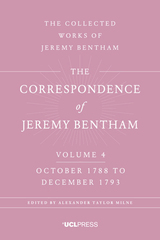 Correspondence of Jeremy Bentham, Volume 4: October 1788 to December 1793
Jeremy Bentham, edited by Alexander Taylor Milne, and general editor John R. Dinwiddy
University College London, 2017 The first five volumes of the Correspondence of Jeremy Bentham contain more than 1,300 letters written to and from Bentham over fifty years, beginning in 1752 at the age of three and ending in 1797 with correspondence concerning his attempts to set up a national plan for the provision of poor relief. The letters in Volume 1 (1752-1776) document his difficult relationship with his father—Bentham lost five infant siblings and his mother—and his increasing attachment to his surviving brother, Samuel. We also see an early glimpse of Bentham’s education, as he committed himself to philosophy and legal reform. The exchanges in Volume 2 (1777-1780) cover a major event: a trip by Samuel to Russia. This volume also reveals Bentham working intensively on the development of a code of penal law, enhancing his reputation as a legal thinker. Volume 3 (1781-1788) shows that despite developing a host of original ideas, Bentham actually published little during this time. Nevertheless, this volume also reveals how the foundations were being laid for the rise of Benthamite utilitarianism. The letters in Volume 4 (1788-1793) coincide with the publication of An Introduction to the Principles of Morals and Legislation, which had little impact at the time. In 1791 he published The Panopticon: or, The Inspection-House, in which he proposed the building of a circular penitentiary house. Bentham’s letters unfold against the backdrop of the French Revolution and show that his initial sympathy for France began to turn into hostility. Bentham’s life during the years in Volume 5 (1794-1797) was dominated by the panopticon, both as a prison and as an indigent workhouse. The letters in this volume document in great detail Bentham’s attempt to build a panopticon prison in London, and the opposition he faced from local aristocratic landowners.
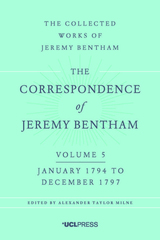 Correspondence of Jeremy Bentham Volume 5: January 1794 to December 1797
Jeremy Bentham, edited by Alexander Taylor Milne, and series edited by J.H. Burns
University College London, 2017 The first five volumes of the Correspondence of Jeremy Bentham contain more than 1,300 letters written to and from Bentham over fifty years, beginning in 1752 at the age of three and ending in 1797 with correspondence concerning his attempts to set up a national plan for the provision of poor relief. The letters in Volume 1 (1752-1776) document his difficult relationship with his father—Bentham lost five infant siblings and his mother—and his increasing attachment to his surviving brother, Samuel. We also see an early glimpse of Bentham’s education, as he committed himself to philosophy and legal reform. The exchanges in Volume 2 (1777-1780) cover a major event: a trip by Samuel to Russia. This volume also reveals Bentham working intensively on the development of a code of penal law, enhancing his reputation as a legal thinker. Volume 3 (1781-1788) shows that despite developing a host of original ideas, Bentham actually published little during this time. Nevertheless, this volume also reveals how the foundations were being laid for the rise of Benthamite utilitarianism. The letters in Volume 4 (1788-1793) coincide with the publication of An Introduction to the Principles of Morals and Legislation, which had little impact at the time. In 1791 he published The Panopticon: or, The Inspection-House, which he proposed the building of a circular penitentiary house. Bentham’s letters unfold against the backdrop of the French Revolution and show that his initial sympathy for France began to turn into hostility. Bentham’s life during the years in Volume 5 (1794-1797) was dominated by the panopticon, both as a prison and as an indigent workhouse. The letters in this volume document in great detail Bentham’s attempt to build a panopticon prison in London, and the opposition he faced from local aristocratic landowners.
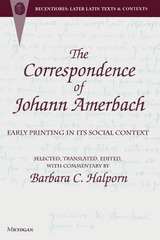 The Correspondence of Johann Amerbach: Early Printing in its Social Context
Selected, Translated, Edited, and with Commentary by Barbara C. Halporn
University of Michigan Press, 2000 After Gutenberg, the book world was changed forever. Writers wanted to break into print; venture capitalists and printers wanted to make money; scholars wanted to promote their educational agendas. To be economically viable, the printed book--unlike the handmade book--required distribution to large international markets, promotion, advertising, capital, and above all, profit. In a heady atmosphere of speculation, competition, and high risk, printers set up shop and went bankrupt with dizzying rapidity. Against these odds Johann Amerbach established a successful printing-publishing firm that survived for thirty-five years. His correspondence takes the reader into that rapidly changing world.
Between 1478 and 1513 Amerbach published more than a hundred substantial works. He is best known for his monumental editions of the works of early church fathers. Crucial to his success was the information network he kept through correspondence with scholars, teachers, printers, booksellers, library curators, and other members of the literate community. The letters reveal how books were made, by whom, and for whom. The Correspondence of Johann Amerbach allows us to see the tensions in the new alliance between commerce and the republic of letters. Filling out the scene more fully, letters between the Amerbach children and their parents tell of the daily life, expectations, and aspirations of an intellectual bourgeois family at the end of the fifteenth century.
Barbara C. Halporn is Head of the Collection Development Department, Widener Library, Harvard University.
 The Correspondence of John Carroll and Charles Plowden, 1779-1816
Thomas W. Jodziewicz
Catholic University of America Press, 2025 The correspondence between Bishop John Carroll and Fr. Charles Plowden offers an “insiders’” look at the establishment of the Catholic Church in the United States and the circumstances of the project of bringing about English Catholic emancipation. Carroll was the chief architect of the former; Plowden was a spirited, and public, and published, participant in the latter. Their correspondence is filled with details about their activities, and mutual encouragement, as each of these ex-Jesuits encountered the upheavals precipitated by wars (American Revolution, French Revolution, Napoleonic); the contemporary intellectual, theological, philosophical challenges of the Enlightenment and Age of Reason; anti-Catholic (and anti-Jesuit) sentiment and prejudices; the long wait for renewal of the Society of Jesus; the situation (and prerogatives) of the papacy; and the vagaries of early modern postal service.
The Carroll side of this correspondence has been printed (although not completely accurately), but the Plowden side, far more strident and provocative, has mostly been unnoticed. Plowden’s letters, and published writings, with Carroll’s comments on them all, provide significant insights into the intricacies of the English Catholic excitement, including internal tensions, accompanying the early modern crusade for religious emancipation in Britain.
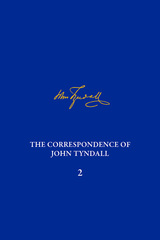 The Correspondence of John Tyndall, Volume 2: The Correspondence, September 1843–December 1849
Melinda Baldwin
University of Pittsburgh Press, 2016 The 161 letters in this volume encompass a period of dramatic change for the young John Tyndall, who would become one of Victorian Britain’s most famous physicists. They begin in September 1843, in the midst of a fiery public conflict with the Ordnance Survey of England, and end in December 1849 with him as a doctoral student of mathematics and experimental science at the University of Marburg, Germany. In between, Tyndall was fired from his position in the Ordnance Survey, worked as a railway surveyor at the height of British railway mania, read the works of Ralph Waldo Emerson, Thomas Carlyle, and Lord Byron, taught mathematics, and seriously contemplated emigration to the thriving new city of Cincinnati, Ohio. He began lasting friendships with Thomas Archer Hirst and Edward Frankland, who, along with Tyndall, would eventually become influential figures in nineteenth-century science. The letters also allude to some of the most important events of the 1840s. Documenting a period of political agitation, professional uncertainty, and personal transformation, this volume traces the events that led to Tyndall’s decision to devote himself to natural philosophy.
 The Correspondence of John Tyndall, Volume 5: The Correspondence, January 1855-October 1856
William H. Brock, Geoffrey Cantor
University of Pittsburgh Press, 2018 This volume contains 266 letters covering a period of twenty-two months, when Tyndall was in his midthirties and had been employed by the Royal Institution as professor of natural philosophy since September 1853. Many of the letters printed here concern the lectures he delivered at the RI and other institutions and his attempt to establish his reputation as a researcher. Although he published in several other areas ‒including the cleavage of rocks, colorblindness and glaciers ‒the main focus of his research was the newly discovered and problematic phenomenon of diamagnetism. Tyndall reported his experimental results and theoretical views on this subject in several lectures and papers that greatly enhanced his scientific standing, which was further extended by his contact with other scientists, not only in London but across the British Isles and in France and Germany. By the end of this period, Tyndall was a man of science with a European reputation that was recognized in November 1856 when the Royal Society elected him a member of its Council.
 The Correspondence of John Tyndall, Volume 6: The Correspondence, November 1856-February 1859
Michael D. Barton, Janet Browne, Ken Corbett, and Norman McMillan
University of Pittsburgh Press, 2018 This sixth volume of Tyndall's correspondence contains 302 letters covering a period of twenty-eight months (1856-1859). It begins shortly after Tyndall returned from his first glacier research in the Alps and follows him as he experimented and lectured on physics in central London at the Royal Institution of Great Britain (RI), visited friends, joined London’s fashionable social circles, published and reviewed scientific articles, corresponded with fellow men of science on a wide range of topics, and developed his theories about the structure and movement of glaciers. Importantly, volume 6 includes Tyndall’s major expeditions to the Alps and also documents some of his most dangerous mountaineering exploits. In letters to his closest friends, Tyndall captured the excitement and achievement of his expeditions. By the end of the period, his is increasingly respected as a scientist in the wider academic world.
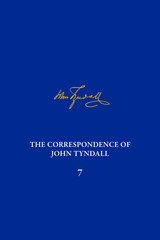 The Correspondence of John Tyndall, Volume 7: The Correspondence, March 1859-May1862
Diarmid A. Finnegan, Roland Jackson, Nanna Kaalund
University of Pittsburgh Press, 2019
The 308 letters in this volume cover a critical period in Tyndall’s personal and scientific lives. The volume begins with the difficult ending of his relationship with the Drummond family, disputes about his work in glaciology, and his early seminal work on the absorption of radiant heat by gases. It ends with the start of his championship of Julius Robert Mayer’s work on the mechanical equivalent of heat. In between, Tyndall carefully establishes his own priority for his work on radiant heat, and he accepts the position of professor of physics at the Government School of Mines. The lure of the Alps also becomes ever stronger. In this period comes perhaps Tyndall’s greatest mountaineering achievement, the first ascent of the Weisshorn, and a remarkable winter visit to Chamonix and the Mer de Glace. As his reputation grows, Tyndall continues to make his way in society. He is elected to the elite Athenaeum Club on January 31, 1860.
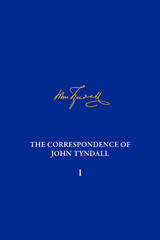 The Correspondence of John Tyndall, Volume I: The Correspondence, May 1840–August 1843
Geoffrey Cantor
University of Pittsburgh Press, 2016 The 230 letters in this inaugural volume of The Correspondence of John Tyndall chart Tyndall’s emergence into early adulthood, spanning from his arrival in Youghal in May 1840 as a civil assistant with just a year’s experience working on the Irish Ordnance Survey to his pseudonymous authorship of an open letter to the prime minister, Robert Peel, protesting the pay and conditions on the English Survey in August 1843. The letters, which include Tyndall’s earliest extant correspondence, encompass some of the most significant events of the early 1840s. Tyndall’s correspondents also discuss their experiences of British military expansion in India and economic migration to North America, among other topics. The letters show the development of many of the traits and talents, both mathematical and literary, that would subsequently make Tyndall one of most prominent men of science in Victorian Britain. They also afford broader insights into a period of almost unprecedented social upheaval and cultural and technological change that ultimately shaped Tyndall’s development into adulthood.
The Correspondence of Leo, Metropolitan of Synada and Syncellus
M.P. Vinson
Harvard University Press The corpus of Leo of Synada (937–ca. 1003) contains fifty-three letters, including one from Stephen of Nicomedia, and a will. Particularly important are a series of thirteen letters written during Leo’s diplomatic mission to the West (996–998) and two that detail the political maneuvering prior to the election of Patriarch Sisinnius II (996–998). In addition to their historical value, the letters also provide useful and at times highly entertaining insights into the personalities and institutions of Byzantium in the late tenth century.
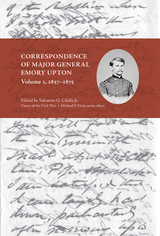 Correspondence of Major General Emory Upton, Vol. 1, 1857–1875
Salvatore Cilella
University of Tennessee Press, 2017 Emory Upton (1839–1881) was thrust into the Civil War immediately upon graduation from the United States Military Academy at West Point in May of 1861. He was wounded three times during the war. He participated in nearly every major battle in the Eastern Theater including Fredericksburg, Gettysburg, and Spotsylvania, where he led a prominent attack on entrenched Confederate positions—a signal of Upton’s brilliance as an officer and of his military creativity that foreshadowed his later work in revising the Army’s tactics. Upton was mustered out of service in 1866 and later named commandant of cadets at West Point, a position that carved a path for Upton to focus more on Army tactics and reforms.
Until now, the only lenses through which scholars could study Upton were two biographies published nearly a century apart but practically identical in scope and treatment. The two-volume Correspondence of Major General Emory Upton follows Upton through his enrollment at West Point to his extensive Army activities following the Civil War and contains the bulk of his wartime correspondence. Volume one, with Upton’s Civil War correspondence encompasses both larger battle details and day-to-day activities in the life of a soldier. His letters reveal a mercurial individual: a humorous person used to suffering and rejoicing, who could be flawed and brilliant, vain and humble.
These selected letters and reports, expertly annotated and gathered from repositories across the country, present a more complex, human Emory Upton. He is both the “clean, pure, and spotless” individual of biographies and the ambitious, yet flawed Army officer obsessed with his career. These volumes explore his trials and frustrations as well as his triumphs.
Salvatore G. Cilella Jr., now retired, was president of the Atlanta Historical Society. He is the author of Upton’s Regulars: The 121st New York Infantry in the American Civil War and Fund Raising for Small Museums in Good Times and Bad.
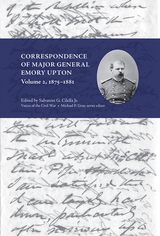 Correspondence of Major General Emory Upton, Vol. 2, 1875–1881
Salvatore Cilella
University of Tennessee Press, 2017 Emory Upton (1839–1881) was thrust into the Civil War immediately upon graduation from the United States Military Academy at West Point in May of 1861. He was wounded three times during the war. He participated in nearly ever major battle in the Eastern Theater including Fredericksburg, Gettysburg, and Spotsylvania, where he led a prominent attack on entrenched Confederate positions—a signal of Upton’s brilliance as an officer and of his military creativity that foreshadowed his later work in revising the Army’s tactics. Upton was mustered out of service in 1866 and later named commandant of cadets at West Point, a position that carved a path for Upton to focus more on Army tactics and reforms.
Until now, the only lenses through which scholars could study Upton were two biographies published nearly a century apart but practically identical in scope and treatment of Upton. The two-volume Correspondence of Major General Emory Upton follows Upton through his enrollment at West Point to his extensive Army activities following the Civil War and contains the bulk of Emory Upton’s wartime correspondence. Volume two collects Upton’s foreign correspondence and observations on military tactics and Army reform. At the behest of U.S. Army Commanding General William T. Sherman, Upton was sent on a tour to study the armies of Asia and Europe, and more specifically the German army after conclusion of the Franco-Prussian War. This tour resulted in the publication of his monumental The Armies of Europe and Asia, which warned that the U.S. Army was woefully below the standards of European nations, and between Upton’s death in 1881 and the turn of the twentieth century, military policy was fiercely debated in both the military and popular press. Upton’s ideas on reform were often central to the arguments, and his letters and writings provoked a wide range of discussion over military and, inevitably, civilian issues.
These selected letters and reports, expertly annotated and gathered from repositories across the country, present a more complex, human Emory Upton. He is both the “clean, pure, and spotless” individual of Michie’s biographies and the ambitious, yet flawed Army officer obsessed with his career. These volumes explore his trials and frustrations as well as his triumphs.
Salvatore G. Cilella, now retired, was president of the Atlanta Historical Society. He is the author of Upton’s Regulars: The 121st New York Infantry in the American Civil War and Fund Raising for Small Museums in Good Times and Bad.
The Correspondence of Michael Faraday: 1811-1831, Volume 1
Frank A.J.L. James
The Institution of Engineering and Technology, 1991 Michael Faraday (1791-1867) was one of the most important men of science in nineteenth century Britain. His discoveries of electro-magnetic rotations (1821), and electro-magnetic induction (1831) laid the foundations of the modern electrical industry. His discovery of the magneto-optical effect and of diamagnetism (1845) led him to formulate the field theory of electro-magnetism, which forms one of the cornerstones of modern physics.
The Correspondence of Michael Faraday: 1832-1840, Volume 2
Frank A.J.L. James
The Institution of Engineering and Technology, 1993 Michael Faraday (1791-1867) was one of the most important men of science in nineteenth century Britain. His discoveries of electromagnetic rotations (1821) and electro-magnetic induction (1831) laid the foundations of the modern electrical industry. His discovery of the magneto-optical effect and diamagnetism (1845) led him to formulate the field theory of electro-magnetism, which forms one of the cornerstones of modern physics.
The Correspondence of Michael Faraday: 1841-1848, Volume 3
Frank A.J.L. James
The Institution of Engineering and Technology, 1996 Michael Faraday (1791-1867) was one of the most important men of science in nineteenth century Britain. His discoveries of electromagnetic rotations (1821) and electro-magnetic induction (1831) laid the foundations of the modern electrical industry. His discovery of the magneto-optical effect and diamagnetism (1845) led him to formulate the field theory of electro-magnetism, which forms one of the cornerstones of modern physics.
The Correspondence of Michael Faraday: 1849-1855, Volume 4
Frank A.J.L. James
The Institution of Engineering and Technology, 1999 Michael Faraday (1791-1867) was one of the most important men of science in nineteenth century Britain. His discoveries of electromagnetic rotations (1821) and electro-magnetic induction (1831) laid the foundations of the modern electrical industry. His discovery of the magneto-optical effect and diamagnetism (1845) led him to formulate the field theory of electro-magnetism, which forms one of the cornerstones of modern physics, and is one of the subjects covered in this volume.
The Correspondence of Michael Faraday: 1855-1860, Volume 5
Frank A.J.L. James
The Institution of Engineering and Technology, 2008 Michael Faraday (1791-1867) was one of the most important men of science in nineteenth century Britain. His discoveries of electro-magnetic rotations (1821) and electro-magnetic induction (1831) laid the foundations of the modern electrical industry. His discovery of the magneto-optical effect and diamagnetism (1845) led him to formulate the field theory of electro-magnetism, which forms one of the cornerstones of modern physics.
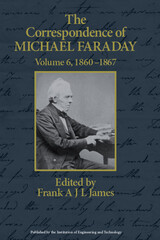 The Correspondence of Michael Faraday: 1860-1867, Volume 6
Frank A.J.L. James
The Institution of Engineering and Technology, 2011 Michael Faraday (1791-1867) was one of the most important men of science in nineteenth century Britain. His discoveries of electro-magnetic rotations (1821) and electro-magnetic induction (1831) laid the foundations of the modern electrical industry. His discovery of the magneto-optical effect and diamagnetism (1845) led him to formulate the field theory of electro-magnetism, which forms one of the cornerstones of modern physics. These and a whole host of other fundamental discoveries in physics and chemistry, together with his lecturing at the Royal Institution, his work for the state (including Trinity House), his religious beliefs and his lack of mathematical ability, make Faraday one of the most fascinating scientific figures ever. All these aspects of his life and work and others, such as his health, are reflected in his letters which, in this final volume, cover Faraday's life to his death in August 1867. Also published here are letters that could not be dated and letters that should have been included in volumes one to five but which had not been located when those volumes were published. In total just over 80% of the letters in this volume are previously unpublished. The dominant topic of the 1860s (covered in nearly 40% of the letters) is Faraday's involvement with the lighthouse service relating in particular to his advice to Trinity House and the Board of Trade on matters such as electric light and the controversial issue of fog signals. Also detailed is the complex process by which his various posts were transferred to John Tyndall. Similar issues existed with Faraday's gradual withdrawal from his duties at the Royal Institution, including the misguided attempt to make him President. And, of course, running through many of the letters are comments on his declining health and impending death. Major correspondents include the Astronomer Royal G.B. Airy, the Secretary of Trinity House P.H. Berthon, the Birmingham glassmaker J.T. Chance, the Assistant Secretary of the Board of Trade T.H. Farrer, the German mathematician Julius Plücker, the Cambridge trained mathematical natural philosophers James Clerk Maxwell and William Thomson, Faraday's colleagues at the Royal Institution Henry Bence Jones, John Tyndall and Benjamin Vincent, the Swiss chemist Christian Schoenbein and the astronomer James South.
 The Correspondence of Richard Price, Volume II: March 1778–February 1786
D. O. Thomas, ed.
Duke University Press, 1983 Perhaps best known as a political philosopher, Richard Price (1723–1791) made important contributions to British and American intellectual life in a variety of fields—philosophy, theology, mathematics, demography, probability and public finance, and private and social insurance. The second in a three-volume series edited by W. Bernard Peach and D. O. Thomas, The Correspondence of Richard Price makes available the extant copies of the correspondence to and from Price, including many published for the first time. These letters reveal Price's absorption with financial problems, his influence on the policies adopted by the British government, his defense of Newtonianism against Lord Monboddo, as well as important insights into the political and cultural life in Britain and America. Correspondents include John Adams, William Adams, J. D. van der Capellen, Benjamin Franklin, Thomas Jefferson, Henry Laurens, Lord Monboddo, William Pitt, Joseph Priestly, the Earl of Shelburne, Ezra Stiles, P. W. Wargentin, and Joseph Willard.
 The Correspondence of Richard Price, Volume III: February 1786–February 1791
William Bernard Peach, editor
Duke University Press, 1983 This third and final volume in the series completes the known extant correspondence of Richard Price (1723-1791). Perhaps best known as a political philosopher, Price made significant contributions to Anglo-American intellectual life in the late eighteenth century in a variety of fields. This remarkable collection of letters, most previously unpublished, is impressive for the breadth of topics covered--religion, theology, politics, education, liberty, finance, demography, and insurance.
Price's correspondence with Adams, Franklin, Jefferson, Rush, and other Americans concern the issues of slavery, the rebellion in Massachusetts, use of paper money, opposition to the establishment of religion, and the status of the federal government. Letters to Priestly, Lansdowne, and others in Britain are about science and technology, the crisis in the United Provinces, armed neutrality, the national debt, revolution, religious sects, and foreign relations. In his correspondence with French leaders following the fall of the Bastille, particularly with le Duc del la Rochefoucauld, Price expresses his high hopes for the growth of civil and religious freedom in France.
Indispensable for an understanding of the work of one of the best known and most distinguished Welshmen of the eighteenth century, this book—and the series—will also be of interest to those who study the history of ideas.
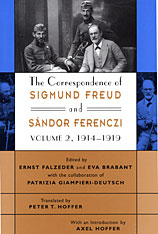 The Correspondence of Sigmund Freud and Sándor Ferenczi
Sigmund Freud and Sándor Ferenczi
Harvard University Press, 1993 Volume I of the three-volume Freud-Ferenczi correspondence closes with Freud's letter from Vienna, dated June 28, 1914, to his younger colleague in Budapest: "I am writing under the impression of the surprising murder in Sarajevo, the consequences of which cannot be foreseen!' "Now," he continues in a more familiar vein, "to our affairs!" The nation-shattering events of World War I form a somber canvas for "our affairs" and the exchanges of the two correspondents in volume 2 (July 1914 through December 1919). Uncertainty pervades these letters: Will Ferenczi be called up? Will food and fuel-and cigar-shortages continue? Will Freud's three enlisted sons and son-in-law come through the war intact? And will Freud's "problem-child," psychoanalysis, survive?At the same time, a more intimate drama is unfolding: Freud's three-part analysis of Ferenczi in 1914 and 1916 ("finished but not terminated"); Ferenczi's concomitant turmoil over whether to marry his mistress, Gizella Pálos, or her daughter, Elma; and the refraction of all these relationships in constantly shifting triads and dyads. In these, as in other matters, both men display characteristic contradictions and inconsistencies, Freud restrained, Ferenczi more effusive and revealing. Freud, for example, unswervingly favors Ferenczi's marriage to Gizella and views his indecision as "resistance"; yet several years later, commenting on Otto Rank's wife, Freud remarks, "One certainly can't judge in these matters...on behalf of another." Ferenczi, for his part, reacts to the paternal authority of the "father of psychoanalysis" as an alternately obedient and rebellious son.
The letters vividly record the use--and misuse--of analysis and self-analysis and the close interweaving of personal and professional matters in the early history of psychoanalysis. Ferenczi's eventual disagreement with Freud about "head and heart," objective detachment versus subjective involvement and engagement in the analytic relationship--an issue that would emerge more clearly in the ensuing years--is hinted at here. As the decade and the volume end, the correspondents continue their literary conversation, unaware of the painful and heartrending events ahead.
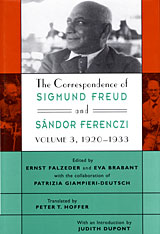 The Correspondence of Sigmund Freud and Sándor Ferenczi
Edited by Ernst Falzeder and Eva Brabant, with the collaboration of Patrizia Giampieri-Deutsch Translated by Peter T. Hoffer, with an Introduction by Judith Dupont
Harvard University Press, 2000 This third and final volume of the correspondence between the founder of psychoanalysis and one of his most colorful disciples brings to a close Sándor Ferenczi's life and the story of one of the most important friendships in the history of psychoanalysis.
This volume spans a turbulent period, beginning with the controversy over Otto Rank's The Trauma of Birth and continuing through Ferenczi's lectures in New York and his involvement in a bitter controversy with American analysts over the practice of lay analysis. On his return from America, Ferenczi's relationship with Freud deteriorated, as Freud became increasingly critical of his theoretical and clinical innovations. Their troubled friendship was further complicated by ill health--Freud's cancer of the jaw and the pernicious anemia that finally killed Ferenczi in 1933.The controversies between Freud and Ferenczi continue to this day, as psychoanalysts reassess Ferenczi's innovations, and increasingly challenge the allegations of mental illness leveled against him after his death by Freud and Ernest Jones. The correspondence, now published in its entirety, will deepen understanding of these issues and of the history of psychoanalysis as a whole.
 The Correspondence of Sigmund Freud and Sándor Ferenczi
Sigmund Freud and Sándor Ferenczi
Harvard University Press, 1993 The young psychiatrist from Budapest had studied medicine in Vienna, he had read The Interpretation of Dreams, and now he was about to meet its author. Seventeen years Sigmund Freud's junior, Sándor Ferenczi (1873-1933) sent off a note anticipating the pleasure of the older man's acquaintance--thus beginning a correspondence that would flourish over the next twenty-five years, and that today provides a living record of some of the most important insights and developments of psychoanalysis, worked out through the course of a deep and profoundly complicated friendship.
This volume opens in January of 1908 and closes on the eve of World War I. Letter by letter, a "fellowship of life, thoughts, and interests" as Freud came to describe it, unfolds here as a passionate exchange of ideas and theories. Ferenczi's contribution to psychoanalysis was, Freud said, "pure gold," and many of the younger man's notions and concepts, proposed in these letters, later made their way into Freud's works on homosexuality, paranoia, trauma, transference, and other topics. To the two men's mutual scientific interests others were soon added, and their correspondence expanded in richness and complexity as Ferenczi attempted to work out his personal and professional conflicts under the direction of his devoted and sometimes critical elder colleague.
Here is Ferenczi's love for Elma, his analysand and the daughter of his mistress, his anguish over his matrimonial intentions, his soliciting of Freud's help in sorting out this emotional tangle--a situation that would eventually lead to Ferenczi's own analysis with Freud. Here is Freud's unraveling relationship with Jung, documented through a heated discussion of the events leading up to the final break. Amid these weighty matters of heart and mind, among the psychoanalytic theorizing and playful speculation, we also find the lighter stuff of life, the talk of travel plans and antiquities, gossip about friends and family. Unparalleled in their wealth of personal and scientific detail, these letters give us an intimate picture of psychoanalytic theory being made in the midst of an extraordinary friendship.
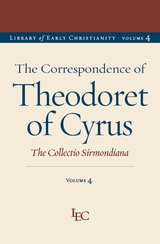 The Correspondence of Theodoret of Cyrus: The Collectio Sirmondiana, Volume 4
Theodoret of Cyrus
Catholic University of America Press, 2025 Volumes 4 and 5 of the Library of Early Christianity, The Correspondence of Theodoret of Cyrus: The Collectio Sirmondiana, present a text and translation of the largest of three collections of Theodoret’s letters that have come down to us (first edited by the Jesuit father Jacques Sirmond, Paris 1642). Though pastor of the remote see of Cyrus in Syria, Theodoret was one of the major teachers of the eastern Christian church of the late fourth and early fifth century.
These 147 letters place before us the myriad concerns, both spiritual and secular, of a late-antique bishop: Theodoret expounds theological and moral issues for fellow churchmen, begs imperial officials for tax relief for local landowners, provides for the sustenance and safety of refugees from the Vandal war in Africa, thanks a friend for a gift of wine. The edition of the Greek text is the work of John Petruccione. A textual introduction explains the relationships among the manuscripts, and the critical notes the choices made where the text is uncertain. The historical / theological introduction is the work of István Pásztori-Kupán, one of the foremost expositors of the thought of Theodoret and of his Antiochene predecessors and contemporaries. Two maps locate for the reader the place names mentioned in the letters, and three indices (a Scriptural Index, General Index, and Index of Modern Authors) complement the notes attached to the text and translation.
 The Correspondence of Theodoret of Cyrus: The Collectio Sirmondiana, Volume 4
Theodoret of Cyrus
Catholic University of America Press, 2025 Volumes 4 and 5 of the Library of Early Christianity, The Correspondence of Theodoret of Cyrus: The Collectio Sirmondiana, present a text and translation of the largest of three collections of Theodoret’s letters that have come down to us (first edited by the Jesuit father Jacques Sirmond, Paris 1642). Though pastor of the remote see of Cyrus in Syria, Theodoret was one of the major teachers of the eastern Christian church of the late fourth and early fifth century.
These 147 letters place before us the myriad concerns, both spiritual and secular, of a late-antique bishop: Theodoret expounds theological and moral issues for fellow churchmen, begs imperial officials for tax relief for local landowners, provides for the sustenance and safety of refugees from the Vandal war in Africa, thanks a friend for a gift of wine. The edition of the Greek text is the work of John Petruccione. A textual introduction explains the relationships among the manuscripts, and the critical notes the choices made where the text is uncertain. The historical / theological introduction is the work of István Pásztori-Kupán, one of the foremost expositors of the thought of Theodoret and of his Antiochene predecessors and contemporaries. Two maps locate for the reader the place names mentioned in the letters, and three indices (a Scriptural Index, General Index, and Index of Modern Authors) complement the notes attached to the text and translation.
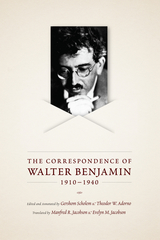 The Correspondence of Walter Benjamin, 1910-1940
Walter Benjamin
University of Chicago Press, 1994 Called “the most important critic of his time” by Hannah Arendt, Walter Benjamin has only become more influential over the years, as his work has assumed a crucial place in current debates over the interactions of art, culture, and meaning. A “natural and extraordinary talent for letter writing was one of the most captivating facets of his nature,” writes Gershom Scholem in his Foreword to this volume; and Benjamin's correspondence reveals the evolution of some of his most powerful ideas, while also offering an intimate picture of Benjamin himself and the times in which he lived. Writing at length to Scholem and Theodor Adorno, and exchanging letters with Rainer Maria Rilke, Hannah Arendt, Max Brod, and Bertolt Brecht, Benjamin elaborates on his ideas about metaphor and language. He reflects on literary figures from Kafka to Karl Kraus, and expounds his personal attitudes toward such subjects as Marxism and French national character. Providing an indispensable tool for any scholar wrestling with Benjamin’s work, The Correspondence of Walter Benjamin, 1910–1940 is a revelatory look at the man behind much of the twentieth century’s most significant criticism.
The Correspondence of Walter Benjamin and Gershom Scholem, 1932–1940
Gershom Scholem
Harvard University Press, 1992 The legendary correspondence between the critic Walter Benjamin and the historian Gershom Scholem bears indispensable witness to the inner lives of two remarkable and enigmatic personalities. Benjamin, acknowledged today as on of the leading literary and social critics of his day, was known during his lifetime by only a small circle of friends and intellectual confreres. Scholem recognized the genius of his friend and mentor during their student days in Berlin, and the two began to correspond after Scholem’s emigration to Palestine. Their impassioned exchange draws the reader into the very heart of their complex relationship during the anguished years from 1932 until Benjamin’s death in 1940.
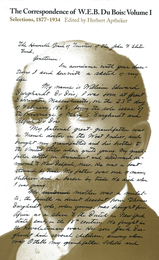 The Correspondence of W.E.B. Du Bois, Volume I: Selections, 1877–1934
W.E.B. Du Bois
University of Massachusetts Press, 1997 Scholar, author, editor, teacher, reformer, and civil rights leader, W.E.B. Du Bois (1868-1963) was a major figure in American life and one of the earliest proponents of equality for black Americans. He was a founder and leader of the Niagara Movement, the NAACP, and the Pan-African Movement; a progenitor of the 1920s Harlem Renaissance; an advocate of anticolonialism, anti-imperialism, unionism, and equality for women; and a champion of the rights of oppressed people around the world.
The three-volume Correspondence of W.E.B. Du Bois offers a unique perspective on Du Bois's experiences and views. In recognition of the significance of the Correspondence, the final volume was named a Best Book of the Year by the New York Times Book Review.
Herbert Aptheker has provided an introduction and notes to each volume, illuminating the circumstances and identifying the personalities involved in the correspondence. A long time friend and colleague of Du Bois, Aptheker is a well-known historian of the African American experience. In 1939 and again in 1969, he won the history award given by the Association for the Study of Negro Life and History. Among his most prominent works are American Negro Slave Revolts and the three-volume Documentary History of the Negro People in the United States.
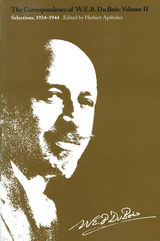 The Correspondence of W.E.B. Du Bois, Volume II: Selections, 1934–1944
W.E.B. Du Bois
University of Massachusetts Press, 1997 Scholar, author, editor, teacher, reformer, and civil rights leader, W.E.B. Du Bois (1868-1963) was a major figure in American life and one of the earliest proponents of equality for black Americans. He was a founder and leader of the Niagara Movement, the NAACP, and the Pan-African Movement; a progenitor of the 1920s Harlem Renaissance; an advocate of anticolonialism, anti-imperialism, unionism, and equality for women; and a champion of the rights of oppressed people around the world.
The three-volume Correspondence of W.E.B. Du Bois offers a unique perspective on Du Bois's experiences and views. In recognition of the significance of the Correspondence, the final volume was named a Best Book of the Year by the New York Times Book Review.
Herbert Aptheker has provided an introduction and notes to each volume, illuminating the circumstances and identifying the personalities involved in the correspondence. A long time friend and colleague of Du Bois, Aptheker is a well-known historian of the African American experience. In 1939 and again in 1969, he won the history award given by the Association for the Study of Negro Life and History. Among his most prominent works are American Negro Slave Revolts and the three-volume Documentary History of the Negro People in the United States.
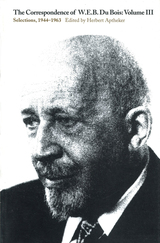 The Correspondence of W.E.B. Du Bois, Volume III: Selections, 1944–1963
W.E.B. Du Bois
University of Massachusetts Press, 1997 Scholar, author, editor, teacher, reformer, and civil rights leader, W.E.B. Du Bois (1868-1963) was a major figure in American life and one of the earliest proponents of equality for black Americans. He was a founder and leader of the Niagara Movement, the NAACP, and the Pan-African Movement; a progenitor of the 1920s Harlem Renaissance; an advocate of anticolonialism, anti-imperialism, unionism, and equality for women; and a champion of the rights of oppressed people around the world.
The three-volume Correspondence of W.E.B. Du Bois offers a unique perspective on Du Bois's experiences and views. In recognition of the significance of the Correspondence, the final volume was named a Best Book of the Year by the New York Times Book Review.
Herbert Aptheker has provided an introduction and notes to each volume, illuminating the circumstances and identifying the personalities involved in the correspondence. A long time friend and colleague of Du Bois, Aptheker is a well-known historian of the African American experience. In 1939 and again in 1969, he won the history award given by the Association for the Study of Negro Life and History. Among his most prominent works are American Negro Slave Revolts and the three-volume Documentary History of the Negro People in the United States.
Correspondence on Christology and Grace
Rob Roy McGregor
Catholic University of America Press, 2013 Between the years AD 519 and 523, Fulgentius engaged in correspondence with a group of Latin-speaking monks from Scythia, and that correspondence is translated into English--almost all of it for the first time--in this volume.
Correspondence: Volume Fourteen, Scholarly Edition
Herman Melville
Northwestern University Press, 1993 The letters by and to Melville in this volume extend from letters he wrote at the age of nine in 1828 to ones he sent and received during the year before his death at seventy-two in 1891. To fill the gaps within the correspondence, 542 editorial entries are chronologically interspersed for letters both by and to Melville for which no full text has been located but for which some evidence survives.
This scholarly edition presents a text as close to the author's intention as his difficult handwriting or other surviving evidence permits. Fifty-two newly discovered letters by Melville, more than half of which are presented here for the first time, are added to those printed in the 1960 edition. This text is an Approved Text of the Center for Editions of American Authors (Modern Language Association of America).
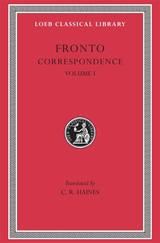 Correspondence, Volume I
Fronto
Harvard University Press Letters of an imperial tutor.
The literary remains of the rhetorician Marcus Cornelius Fronto (ca. AD 100–176) first came to light in 1815, when Cardinal Mai, then prefect of the Ambrosian Library in Milan, discovered that beneath an account of the Acts of the first Council of Chalcedon in 451 had originally been written a copy of the correspondence between Fronto and members of the imperial family, including no less than three who were to wear the purple. The letters possess an extraordinary fascination as giving an authentic record of the relationship between the foremost teacher of his time and his illustrious student Marcus Aurelius, his chief correspondent. Apart from small-talk (but even that is replete with interest) the principal subject is Latin prose style. Fronto practices to excess the cultivation of trendy mannerisms, but sees clearly enough the sterility of a slavish imitation of classical models.
The Loeb Classical Library edition of Fronto is in two volumes.
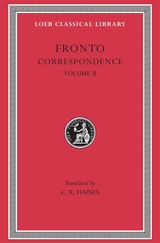 Correspondence, Volume II
Fronto
Harvard University Press Letters of an imperial tutor.
The literary remains of the rhetorician Marcus Cornelius Fronto (ca. AD 100–176) first came to light in 1815, when Cardinal Mai, then prefect of the Ambrosian Library in Milan, discovered that beneath an account of the Acts of the first Council of Chalcedon in 451 had originally been written a copy of the correspondence between Fronto and members of the imperial family, including no less than three who were to wear the purple. The letters possess an extraordinary fascination as giving an authentic record of the relationship between the foremost teacher of his time and his illustrious student Marcus Aurelius, his chief correspondent. Apart from small-talk (but even that is replete with interest) the principal subject is Latin prose style. Fronto practices to excess the cultivation of trendy mannerisms, but sees clearly enough the sterility of a slavish imitation of classical models.
The Loeb Classical Library edition of Fronto is in two volumes.
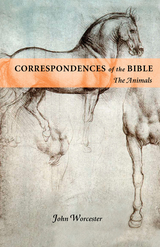 Correspondences of the Bible: Animals: The Animals
JOHN WORCESTER
Swedenborg Foundation Publishers, 2009 Within the literal language of the Bible is a deeper spiritual meaning that points the way toward a greater understanding of faith and of our own role in the world. Eighteenth-century scientist and theologian Emanuel Swedenborg described that inner language of the Bible as “correspondences.” More than a century later, John Worcester used Swedenborg’s teachings as the foundation for a three-volume road map to the correspondences of the natural world. Correspondences of the Bible remains one of the most highly regarded references on the subject today. Correspondences of the Bible: The Animals covers both the familiar and the exotic, from farmyards to remote jungles. Animals are grouped by function and by similarities in their correspondences, and Worcester discusses how certain character traits can overlap by species, sometimes manifesting in a positive way in one animal and negatively in another. He draws from Bible verse, Swedenborg’s writings, and the science of his time to shed a fascinating new light on the living world around us.
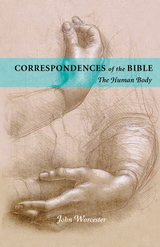 Correspondences of the Bible: Human Body: The Human Body
JOHN WORCESTER
Swedenborg Foundation Publishers, 2009 Within the literal language of the Bible is a deeper spiritual meaning that points the way toward a greater understanding of faith and of our own role in the world. Eighteenth-century scientist and theologian Emanuel Swedenborg described that inner language of the Bible as "correspondences." More than a century later, John Worcester used Swedenborg's teachings as the foundation for a three-volume road map to the correspondences of the natural world. Correspondences of the Bible remains one of the most highly regarded references on the subject today.
In Swedenborg's writings, the structure of heaven is described in terms of a human being, the Divine Human, with the various communities in heaven corresponding to part of the human body. The Human Body describes that relationship in detail, giving us a deep, personal view of how every person relates to heaven. However, just as in The Animals and The Plants, Worcester also provides in-depth discussion of all the aspects of each body part, relating function to spiritual principle for a multifaceted understanding of our own anatomy.
Interwoven with the text is a description of death and our rebirth in heaven, concluding with a long chapter on regeneration, a process of spiritual rebirth that can begin while we are still alive and continue in heaven. The Human Body provides the capstone for our understanding of the deep spiritual meaning that lies within our everyday world.
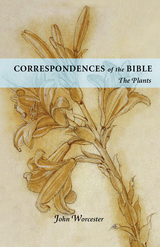 Correspondences of the Bible: Plants: The Plants
JOHN WORCESTER
Swedenborg Foundation Publishers, 2009 Within the literal language of the Bible is a deeper spiritual meaning that points the way toward a greater understanding of faith and of our own role in the world. Eighteenth-century scientist and theologian Emanuel Swedenborg described that inner language of the Bible as "correspondences." More than a century later, John Worcester used Swedenborg's teachings as the foundation for a three-volume road map to the correspondences of the natural world. Correspondences of the Bible remains one of the most highly regarded references on the subject today.
Plants represent the more passive characteristics of our personalities, living examples of how knowledge takes root in our mind and how that knowledge inspires us to act. Every part of a plant has its own special meaning, from its seeds and the shape of its leaves to the sweetness of flowers and fruit. The Plants shows us how we can draw spiritual inspiration from the plants we use every day for food, clothing, shelter, and decoration.
After covering the plants themselves, Worcester explores the parts of the natural world that sustain plant life - from the ground beneath our feet to sunlight, water, and air. Different forms of rocks and minerals represent different types of established fact, while water encourages mobility, and the sun reflects divine love shining down on us all. Science blends with Biblical lore to illuminate humanity's deeply interconnected relationships with the world around us.
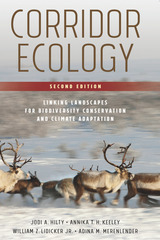 Corridor Ecology, Second Edition: Linking Landscapes for Biodiversity Conservation and Climate Adaptation
Jodi A. Hilty, Annika T. H. Keeley, William Z. Lidicker Jr., Adina M. Merenlender
Island Press, 2019 Migrating wildlife species across the globe face a dire predicament as their traditional migratory routes are cut off by human encroachment. Forced into smaller and smaller patches of habitat, they must compete more aggressively for dwindling food resources and territory. This is more than just an unfortunate side effect of human progress. As key species populations dwindle, ecosystems are losing resilience and face collapse, and along with them, the ecosystem services we depend on. Healthy ecosystems need healthy wildlife populations. One possible answer? Wildlife corridors that connect fragmented landscapes.
This new and expanded second edition of Corridor Ecology: Linking Landscapes for Biodiversity Conservation and Climate Adaptation captures the many advances in the field over the past ten years. It builds on concepts presented in the first edition on the importance and practical details of maintaining and restoring land connectivity. New to this edition is a guest-edited chapter on ecological connectivity in oceans, including a detailed discussion on pelagic marine corridors and how coastal corridors can provide critical connectivity between marine protected areas. Another new chapter considers the effects of climate change on habitat and offers recommendations on designing effective corridors as landscapes change with shifting climate conditions. The book also includes a discussion of corridors in the air for migrating flying species, from birds to bats, butterflies, and even plant propagules—a concept so new that a term to describe it has yet to be coined. All chapters are thoroughly revised and updated.
Practitioners as well as serious scholars of landscape ecology and the science of protecting biodiversity will find this new edition of corridor ecology science an indispensable resource.
Corridor Ecology: The Science and Practice of Linking Landscapes for Biodiversity Conservation
Jodi A. Hilty, William Z. Lidicker Jr., and Adina M. Merenlender; Foreword by Andrew P. Dobson
Island Press, 2006 Corridor Ecology presents guidelines that combine conservation science and practical experience for maintaining, enhancing, and creating connectivity between natural areas with an overarching goal of conserving biodiversity. It offers an objective, carefully interpreted review of the issues and is a one-of-a-kind resource for scientists, landscape architects, planners, land managers, decision-makers, and all those working to protect and restore landscapes and species diversity.
Corridors of Deceit: The World of John le Carré
Peter Wolfe
University of Wisconsin Press, 1987 John le Carré is viewed by many critics as one of the best spy and espionage novel writers. His most famous works are The Spy Who Came in from the Cold; Tinker, Tailor, Soldier, Spy; and The Little Drummer Girl.
Peter Wolfe has produced an informative study of le Carré’s works, showing how le Carré’s five years in the Service (British Intelligence) helped him become a keen observer, social historian, and expert in bureaucratic politics. He has supplanted the technological flair marking much of today's spy fiction with moral complexity and psychological depth. He shows us what spies are like, how they feel about spying, and how spying affects their minds and hearts.
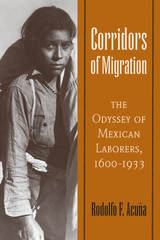 Corridors of Migration: The Odyssey of Mexican Laborers, 1600-1933
Rodolfo F. Acuña
University of Arizona Press, 2007 A Choice Outstanding Academic Title
In the San Joaquin Valley Cotton Strike of 1933, frenzied cotton farmers murdered three strikers, intentionally starved at least nine infants, wounded dozens of people, and arrested more. While the story of this incident has been recounted from the perspective of both the farmers and, more recently, the Mexican workers, this is the first book to trace the origins of the Mexican workers’ activism through their common experience of migrating to the United States.
Rodolfo F. Acuña documents the history of Mexican workers and their families from seventeenth-century Chihuahua to twentieth-century California, following their patterns of migration and describing the establishment of communities in mining and agricultural regions. He shows the combined influences of racism, transborder dynamics, and events such as the industrialization of the Southwest, the Mexican Revolution, and World War I in shaping the collective experience of these people as they helped to form the economic, political, and social landscapes of the American Southwest in their interactions with agribusiness and absentee copper barons.
Acuña follows the steps of one of the murdered strikers, Pedro Subia, reconstructing the times and places in which his wave of migrants lived. By balancing the social and geographic trends in the Mexican population with the story of individual protest participants, Acuña shows how the strikes were in fact driven by choices beyond the Mexican workers’ control. Their struggle to form communities graphically retells how these workers were continuously uprooted and their organizations destroyed by capital. Corridors of Migration thus documents twentieth-century Mexican American labor activism from its earliest roots through the mines of Arizona and the Great San Joaquin Valley cotton strike.
From a founding scholar of Chicano studies and the author of fifteen books comes the culmination of three decades of dedicated research into the causes and effects of migration and labor activism. The narrative documents how Mexican workers formed communities against all odds.
Corriendo bajo la lluvia / Running Back Through the Rain: Poesia Escogida / Selected Poems 1982-1998
Raúl Barrientos
Swan Isle Press, 2002 Born in the south of Chile, but living and writing in the U.S. for the past thirty years, Raúl Barrientos eludes the easy categories: Latin American, Latino, American. All of these, and more. Yet always a poet, turning whatever he touches into startling imagery and gritty, enduring verse. These poems trace a trajectory from the 1973 coup d'etat in Chile to a difficult end-of-millennium in Manhattan. They give the reader a privileged view of a long and continually productive career in poetry—and a glimpse of the life behind it.
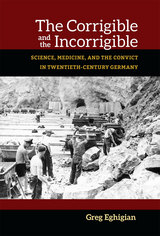 The Corrigible and the Incorrigible: Science, Medicine, and the Convict in Twentieth-Century Germany
Greg Eghigian
University of Michigan Press, 2015 The Corrigible and the Incorrigible explores the surprising history of efforts aimed at rehabilitating convicts in 20th-century Germany, efforts founded not out of an unbridled optimism about the capacity of people to change, but arising from a chronic anxiety about the potential threats posed by others. Since the 1970s, criminal justice systems on both sides of the Atlantic have increasingly emphasized security, surveillance, and atonement, an approach that contrasts with earlier efforts aimed at scientifically understanding, therapeutically correcting, and socially reintegrating convicts. And while a distinction is often drawn between American and European ways of punishment, the contrast reinforces the longstanding impression that modern punishment has played out as a choice between punitive retribution and correctional rehabilitation. Focusing on developments in Nazi, East, and West Germany, The Corrigible and the Incorrigible shows that rehabilitation was considered an extension of, rather than a counterweight to, the hardline emphasis on punishment and security by providing the means to divide those incarcerated into those capable of reform and the irredeemable.
Corrugated Horns for Microwave Antennas
P.J.B. Clarricoats
The Institution of Engineering and Technology, 1984 Over the last twenty years Corrugated horns have become widely used as feeds for microwave reflector antennas because of their high efficiency, good pattern symmetry and low cross-polarisation. They are increasingly used in antennas for satellite communications, radar, microwave point to point communications and radio astronomy.
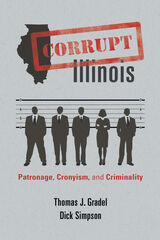 Corrupt Illinois: Patronage, Cronyism, and Criminality
Thomas J. Gradel and Dick Simpson
University of Illinois Press, 2015 Public funds spent on jets and horses. Shoeboxes stuffed with embezzled cash. Ghost payrolls and incarcerated ex-governors. Illinois' culture of "Where's mine?" and the public apathy it engenders has made our state and local politics a disgrace.
In Corrupt Illinois, veteran political observers Thomas J. Gradel and Dick Simpson take aim at business-as-usual. Naming names, the authors lead readers through a gallery of rogues and rotten apples to illustrate how generations of chicanery have undermined faith in, and hope for, honest government. From there, they lay out how to implement institutional reforms that provide accountability and eradicate the favoritism, sweetheart deals, and conflicts of interest corroding our civic life.
Corrupt Illinois lays out a blueprint to transform our politics from a pay-to-play–driven marketplace into what it should be: an instrument of public good.
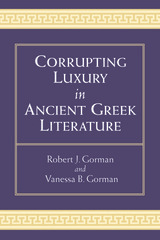 Corrupting Luxury in Ancient Greek Literature
Robert J. Gorman and Vanessa B. Gorman
University of Michigan Press, 2014 A widely accepted truism says that luxury corrupts, and in both popular and scholarly treatments, the ancient city of Sybaris remains the model for destructive opulence. This volume demonstrates the scarcity of evidence for Sybarite luxury, and examines the vocabulary of luxury used by the Hellenic world. Focus on the word truphe reveals it means an attitude of entitlement: not necessarily a bad trait, unless in extreme form. This pattern holds for all Classical evidence, even the historian Herodotus, where the idea of pernicious luxury is commonly thought to be thematic. Advancing a new method to evaluate this fragmentary evidence, the authors argue that almost all relevant ancient testimony is liable to have been distorted during transmission. They present two conclusions: first, that there exists no principle of pernicious luxury as a force of historical causation in Hellenic or Hellenistic literature. Rather, that idea is derived from early Latin prose historiography and introduced from that genre into the Greek writers of the Roman period, who in turn project the process back in time to explain events such as the fall of Sybaris. The second conclusion is methodological. The authors lay down a strategy to determine the content and extent of fragments of earlier authors found in cover texts such as Athenaeus, by examining the diction along synchronic and diachronic lines. This book will appeal to scholars of intellectual history, the history of morality, and historiographical methodology.
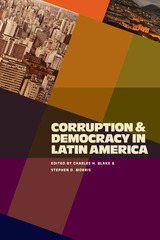 Corruption and Democracy in Latin America
Charles H. Blake
University of Pittsburgh Press, 2009
Corruption has blurred, and in some cases blinded, the vision of democracy in many Latin American nations. Weakened institutions and policies have facilitated the rise of corrupt leadership, election fraud, bribery, and clientelism. Corruption and Democracy in Latin America presents a groundbreaking national and regional study that provides policy analysis and prescription through a wide-ranging methodological, empirical, and theoretical survey.
The contributors offer analysis of key topics, including: factors that differentiate Latin American corruption from that of other regions; the relationship of public policy to corruption in regional perspective; patterns and types of corruption; public opinion and its impact; and corruption's critical links to democracy and governance.
Additional chapters present case studies on specific instances of corruption: diverted funds from a social program in Peru; Chilean citizens' attitudes toward corruption; the effects of interparty competition on vote buying in local Brazilian elections; and the determinants of state-level corruption in Mexico under Vicente Fox.
The volume concludes with a comparison of the lessons drawn from these essays to the evolution of anticorruption policy in Latin America over the past two decades. It also applies these lessons to the broader study of corruption globally to provide a framework for future research in this crucial area.
Corruption and Reform in the Teamsters Union
David Witwer
University of Illinois Press, 2002 Almost since its creation, recurring problems with corruption bedeviled the Teamsters Union. David Witwer provides the first in-depth historical study of the forces that contributed to the Teamsters' troubled past and the mechanisms the union employed--from top-down directives to grassroots measures--to combat corruption. Witwer draws on the perspectives of rank-and-file members, union leaders, and the criminal element to explain the processes that allowed organized crime to seize power inside the union. His account includes the infamous links between the Mafia and union head Jimmy Hoffa, but he also tells the little-known story of the McClellan Committee investigation that first brought those links to light. Witwer also examines how anti-labor forces used the Teamsters' unsavory reputation to influence popular and legislative opinion in a broad attack on workers' rights.
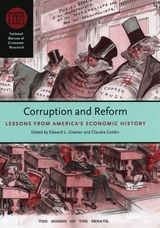 Corruption and Reform: Lessons from America's Economic History
Edited by Edward L. Glaeser and Claudia Goldin
University of Chicago Press, 2006 Despite recent corporate scandals, the United States is among the world’s least corrupt nations. But in the nineteenth century, the degree of fraud and corruption in America approached that of today’s most corrupt developing nations, as municipal governments and robber barons alike found new ways to steal from taxpayers and swindle investors. In Corruption and Reform, contributors explore this shadowy period of United States history in search of better methods to fight corruption worldwide today.
Contributors to this volume address the measurement and consequences of fraud and corruption and the forces that ultimately led to their decline within the United States. They show that various approaches to reducing corruption have met with success, such as deregulation, particularly “free banking,” in the 1830s. In the 1930s, corruption was kept in check when new federal bureaucracies replaced local administrations in doling out relief. Another deterrent to corruption was the independent press, which kept a watchful eye over government and business. These and other facets of American history analyzed in this volume make it indispensable as background for anyone interested in corruption today.
Corruption: Anthropological Perspectives
Edited by Dieter Haller and Cris Shore
Pluto Press, 2005 Corruption in politics and business is, after war, perhaps the greatest threat to democracy. Academic studies of corruption tend to come from the field of International Relations, analysing systems of formal rules and institutions. This text offers a radically different perspective, and looks at how anthropology can throw light on aspects of corruption that remain hidden within IR.
Taking a more grounded, empirical and holistic perspective, this text reveals how corruption operates through informal rules, personal connections and the wider social contexts that govern everyday practices. It looks at corruption in transitional societies such as post-Soviet Russia, and also explores efforts to reform or regulate institutions that are perceived to have a potential for corruption, such as the European Commission. The book also covers the Enron and WorldCom scandals.
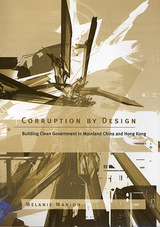 Corruption by Design: Building Clean Government in Mainland China and Hong Kong
Melanie Manion
Harvard University Press, 2004 This book contrasts experiences of mainland China and Hong Kong to explore the pressing question of how governments can transform a culture of widespread corruption to one of clean government. Melanie Manion examines Hong Kong as the best example of the possibility of reform. Within a few years it achieved a spectacularly successful conversion to clean government. Mainland China illustrates the difficulty of reform. Despite more than two decades of anticorruption reform, corruption in China continues to spread essentially unabated.
The book argues that where corruption is already commonplace, the context in which officials and ordinary citizens make choices to transact corruptly (or not) is crucially different from that in which corrupt practices are uncommon. A central feature of this difference is the role of beliefs about the prevalence of corruption and the reliability of government as an enforcer of rules ostensibly constraining official venality. Anticorruption reform in a setting of widespread corruption is a problem not only of reducing corrupt payoffs, but also of changing broadly shared expectations of venality. The book explores differences in institutional design choices about anticorruption agencies, appropriate incentive structures, and underlying constitutional designs that contribute to the disparate outcomes in Hong Kong and mainland China.
 Corruption, Class, and Politics in Ghana
Ernest Harsch
Ohio University Press, 2024 Ghana has long struggled against persistent corruption that has sapped state treasuries, distorted economic and social relationships, and undermined public confidence in government. In recent decades, concerns about corruption have become common in international policy circles, media, and academia. Ghanaians, however, began grappling with the issue long before outsiders expressed interest. From their indigenous precolonial societies through the decades of British rule to the various postindependence regimes, Ghanaians have aspired both to clean house at the top and to ensure that day-to-day affairs are managed honestly and with justice for ordinary citizens. Drawing on decades of research and interviews with Ghanaian officials and activists, Ernest Harsch focuses closely on corruption’s political implications: that is, how political actors use concerns about graft and related misdeeds to advance their own agendas. Harsch also considers social dimensions: class, ethnicity, gender, and other distinctions. While elite perspectives are well represented in official records, this book pays particular attention to voices from below, expressed through popular demonstrations, strikes, and other rebellious actions. In addition, activists have produced or collected hundreds of original protest declarations, petitions, reports, and letters. Those documents reveal that ordinary Ghanaians have opposed corruption not so much because it distorts markets—a central complaint of external and elite actors—but because it makes their daily living conditions so much harder and deepens inequities by disproportionately benefiting those with wealth and harming those without.
 Corruption in America: From Benjamin Franklin’s Snuff Box to Citizens United
Zephyr Teachout
Harvard University Press, 2014 When Louis XVI presented Benjamin Franklin with a snuff box encrusted with diamonds and inset with the King’s portrait, the gift troubled Americans: it threatened to “corrupt” Franklin by clouding his judgment or altering his attitude toward the French in subtle psychological ways. This broad understanding of political corruption—rooted in ideals of civic virtue—was a driving force at the Constitutional Convention.
For two centuries the framers’ ideas about corruption flourished in the courts, even in the absence of clear rules governing voters, civil officers, and elected officials. Should a law that was passed by a state legislature be overturned because half of its members were bribed? What kinds of lobbying activity were corrupt, and what kinds were legal? When does an implicit promise count as bribery? In the 1970s the U.S. Supreme Court began to narrow the definition of corruption, and the meaning has since changed dramatically. No case makes that clearer than Citizens United.
In 2010, one of the most consequential Court decisions in American political history gave wealthy corporations the right to spend unlimited money to influence elections. Justice Anthony Kennedy's majority opinion treated corruption as nothing more than explicit bribery, a narrow conception later echoed by Chief Justice Roberts in deciding McCutcheon v. FEC in 2014. With unlimited spending transforming American politics for the worse, warns Zephyr Teachout, Citizens United and McCutcheon were not just bad law but bad history. If the American experiment in self-government is to have a future, then we must revive the traditional meaning of corruption and embrace an old ideal.
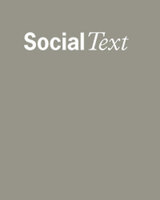 Corruption in Corporate Culture, Volume 21
Randy Martin and Ella Shohat, eds.
Duke University Press Corruption in Corporate Culture argues that there has been a serious breakdown in the systems designed to ensure fair dealing in the self-governing and self-policing worlds of U.S. business and finance. Contending that a war of containment has been launched to conceal both the repercussions of corporate corruption and government complicity in it, this special issue of Social Text evaluates these problems on a systemic level, as well as focusing on immediate cases. Addressing several recent high-profile scandals, contributors examine both the short- and the long-term ramifications of corporate corruption: the means by which Martha Stewart has been used as an icon and a scapegoat in the ImClone case while broader critical issues have failed to receive the attention they demand; the divisive ways in which the antifeminist Independent Women’s Forum—along with other neocon organizations and pundits—has moved the debate regarding the deregulation of the financial services sector far to the right of the far right; the collapse of Enron and what it means for corporate governance; the global implications of U.S. corporate corruption; the confusion over public and private business transactions in Argentina; the moral panic ensuing from the random violence caused by the Washington, D.C. area snipers precisely as the U.S. was launching a war on Iraq because of its supposed weapons of mass destruction; and the emergence of a new business model and icon, the hiphop mogul. Contributors. Peter Bratsis, David M. Brennan, Jane Marcus-Delgado, Randy Martin, Nancy Shaw, Ella Shohat, Christopher Holmes Smith, Barbara Spindel, Susan Willis
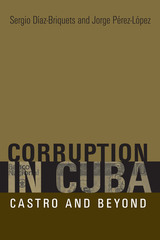 Corruption in Cuba: Castro and Beyond
By Sergio Díaz-Briquets and Jorge Pérez-López
University of Texas Press, 2006 While Fidel Castro maintained his longtime grip on Cuba, revolutionary scholars and policy analysts turned their attention from how Castro succeeded (and failed), to how Castro himself would be succeeded—by a new government. Among the many questions to be answered was how the new government would deal with the corruption that has become endemic in Cuba. Even though combating corruption cannot be the central aim of post-Castro policy, Sergio Díaz-Briquets and Jorge Pérez-López suggest that, without a strong plan to thwart it, corruption will undermine the new economy, erode support for the new government, and encourage organized crime. In short, unless measures are taken to stem corruption, the new Cuba could be as messy as the old Cuba. Fidel Castro did not bring corruption to Cuba; he merely institutionalized it. Official corruption has crippled Cuba since the colonial period, but Castro's state-run monopolies, cronyism, and lack of accountability have made Cuba one of the world's most corrupt states. The former communist countries in Eastern Europe were also extremely corrupt, and analyses of their transitional periods suggest that those who have taken measures to control corruption have had more successful transitions, regardless of whether the leadership tilted toward socialism or democracy. To that end, Díaz-Briquets and Pérez-López, both Cuban Americans, do not advocate any particular system for Cuba's next government, but instead prescribe uniquely Cuban policies to minimize corruption whatever direction the country takes after Castro. As their work makes clear, averting corruption may be the most critical obstacle in creating a healthy new Cuba.
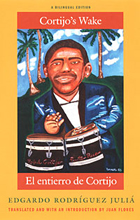 Cortijo's Wake / El entierro de Cortijo
Edgardo Rodríguez Juliá
Duke University Press, 2004 A bilingual edition of a renowned work of Puerto Rican literature, Cortijo’s Wake/El entierro de Cortijo is novelist Edgardo Rodríguez Juliá’s vivid description of the funeral of legendary Puerto Rican musician Rafael Cortijo. El entierro de Cortijo became an immediate bestseller following its original publication in Puerto Rico in 1983. An unparalleled Afro-Puerto Rican percussionist and bandleader, Cortijo (1928–1982) revolutionized the country’s musical culture. His band, Cortijo y Su Combo, captivated Caribbean and Latin American audiences as it emerged in the mid-1950s. Immensely popular across Puerto Rican social classes, the band both “modernized” the traditional vernacular forms of bomba and plena and forcefully reestablished their African and working-class roots. The group’s innovations have been integral to salsa since the 1960s. Winding through the streets of working-class San Juan with Cortijo’s funeral procession, Rodríguez Juliá’s autobiographical chronicle provides a rare portrait of the impoverished society from which Cortijo’s music emerged. Along with detailed renderings of grief-stricken mourners—including Cortijo’s childhood friend and fellow musician, the celebrated singer Ismael ("Maelo") Rivera—Rodríguez Juliá records his feelings as he, a light-skinned, middle-class writer, confronts the world of poor black Puerto Ricans. The author’s masterful shifting of linguistic registers, his acute sensitivity to Puerto Rican social codes, his broad knowledge of popular music, and his sardonic ruminations on death and immortality make this one of the most widely read books of modern Puerto Rican literature. Well-known critic and cultural historian Juan Flores has provided a scrupulous translation of Rodríguez Juliá’s text and an introduction situating the book in relation to Puerto Rican music and culture and the careers of Cortijo and Rodríguez Juliá.
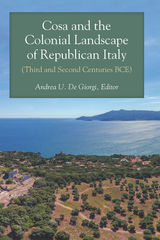 Cosa and the Colonial Landscape of Republican Italy (Third and Second Centuries BCE)
Andrea U. De Giorgi, Editor
University of Michigan Press, 2019 This important new volume examines archaeological evidence of Roman colonization of the Middle Republican period. Themes of land use, ethnic accommodation and displacement, colonial identity, and administrative schemes are also highlighted. In delving deeply into the uniqueness of select colonial contexts, these essays invite a novel discussion on the phenomenon of colonialism in the political landscape of Rome’s early expansion. Roman urbanism of the Middle Republican period brought to the Italian peninsula fundamental changes, an important example of which, highlighted by a wealth of studies, is the ebullience of a dense network of colonies, as well as a mix of senatorial tactics and individual initiatives that underpinned their foundation. Whether Latin, Roman, or Maritimae, colonies created a new mesh of communities and imposed a new topography; more subtly, they signified the mechanisms of the rising hegemony. This book brings to the fore the diversity, agendas, and overall impact of a “settlement device” that changed the Italian landscape and introduced a new idea of Roman town.
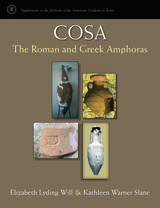 Cosa: The Roman and Greek Amphoras
Elizabeth Lyding Will and Kathleen Warner Slane
University of Michigan Press, 2019 This long-awaited volume presents the work of Elizabeth Lyding Will on the important group of transport amphoras found at Cosa. This town has been widely recognized as a prototypical colony of the later Roman Republic and a source for trade with Gaul and Spain, so this publication of its finds has important implications for archaeologists and historians of the ancient world. Will’s initial work was on Latin amphora-stamps in the eastern Mediterranean, and through the 1960s and 1970s she developed an amphora typology based on materials found in the region and at Cosa. What has not been appreciated is that this typology was not limited to stamped Republican amphoras but also included unstamped vessels, such as imperial Spanish, African, and eastern amphoras dating as late as the fifth century CE. This book shows that Will was far ahead of her time in documenting the Mediterranean trade in commodities carried in amphoras: her work not only provides a record of the amphoras found on the town-site of Cosa, but also includes a comparison between the finds from the port and the town.
At the time of Will’s death, her manuscript consisted of a typed catalogue of the amphora stamps from Cosa and an equal number of unstamped vessels, but was missing important elements. On the basis of extensive notes and photographs, Kathleen Warner Slane has reviewed and updated the manuscript, adding type descriptions and footnotes to materials that have appeared since Will’s death as well as a framing introduction and conclusions. Appendices highlight an Augustan amphora dump on the Arx and add a catalogue of the Greek amphora stamps found at Cosa.
Cosa: The Roman and Greek Amphoras will be of interest to scholars and students of Rome and its system of colonies, and also to those interested in Greek and Roman archaeology and trade in the ancient world.
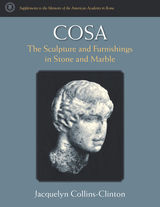 Cosa: The Sculpture and Furnishings in Stone and Marble
Jacquelyn Collins-Clinton
University of Michigan Press, 2020 Cosa, a small Roman town, has been excavated since 1948 by the American Academy in Rome. This new volume presents the surviving sculpture and furniture in marble and other stones and examines their nature and uses. These artifacts provide an insight into not just life in a small Roman town but also its embellishment mainly from the late Republic and through the early Empire to the time of Hadrian. While public statuary is not well preserved, stone and marble material from the private sphere are well represented; domestic sculpture and furniture from the third century BCE to the first CE form by far the largest category of objects. The presence of these materials in both public and private spheres sheds light on the wealth of the town and individual families. The comparative briefness of Cosa’s life means that this material is more easily comprehensible as a whole for the entire town as excavated, compared for instance to the much larger cities of Pompeii and Herculaneum.
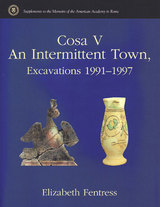 Cosa V: An Intermittent Town, Excavations 1991-1997
Elizabeth Fentress
University of Michigan Press, 2003
Since excavation began in 1948, the site of Cosa has become one of our most important sources on Roman colonization, urbanism, and daily life. These excavations illuminate every phase of the site's history, from the Republican and early imperial period, to a medieval castle destroyed in the 14th century.
This book includes a narrative account of the history of the town seen in the light of the excavations, as well as the publication of all the medieval finds from the site. Illustrated with 150 figures and plates, including numerous reconstruction drawings and an important sequence of Roman pottery, it will be useful to all those interested in Roman and Medieval archaeology and history.
An innovative aspect of this publication is the simultaneous web publication of the site's stratigraphy. In this manner, the detailed site information will be available to specialists and those of the general public who closely follow new directions in Roman archaeology.
Elizabeth Fentress is an independent scholar and archaeologist working in Rome. She served as Mellon Professor at the American Academy in Rome between 1996 and 1999.
 Cosella Wayne: Or, Will and Destiny
Cora Wilburn, edited and introduced by Jonathan D. Sarna
University of Alabama Press, 2019 The first novel written and published in English by an American Jewish woman
Published serially in the spiritualist journal Banner of Light in 1860, Cosella Wayne: Or, Will and Destiny is the first coming-of-age novel, written and published in English by an American Jewish woman, to depict Jews in the United States and transforms what we know about the history of early American Jewish literature. The novel never appeared in book form, went unmentioned in Jewish newspapers of the day, and studies of nineteenth-century American Jewish literature ignore it completely. Yet the novel anticipates many central themes of American Jewish writing: intermarriage, generational tension, family dysfunction, Jewish-Christian relations, immigration, poverty, the place of women in Jewish life, the nature of romantic love, and the tension between destiny and free will.
The narrative recounts a relationship between an abusive Jewish father and the rebellious daughter he molested as well as that daughter’s struggle to find a place in the complex social fabric of nineteenth-century America. It is also unique in portraying such themes as an unmarried Jewish woman’s descent into poverty, her forlorn years as a starving orphaned seamstress, her apostasy and return to Judaism, and her quest to be both Jewish and a spiritualist at one and the same time.
Jonathan Sarna, who introduces the volume, discovered Cosella Wayne while pursuing research at the Israel Institute for Advanced Studies in Jerusalem. This edition is supplemented with selections from Cora Wilburn’s recently rediscovered diary, which are reprinted in the appendix. Together, these materials help to situate Cosella Wayne within the life and times of one of nineteenth-century American Jewry’s least known and yet most prolific female authors.
 Così fan tutte, An Opera of Mimetic Revelation
Isabel Díaz-Morlán
Michigan State University Press, 2025 Isabel Díaz-Morlán reads the characters of Così fan tutte, an opera by Mozart and Da Ponte, through the lens of René Girard’s theory of unconscious mimetic desire. The opera features couples who resemble those from classical literature, including Ovid’s Collatinus and Lucretia, Cervantes’s Anselmo and Camila, and Shakespeare’s Leonatus and Imogen. The book explores the sources of the libretto, comparing them with each other and with the libretto itself to detect the themes that reveal the mechanism of mimetic desire. This offers the groundwork for the analysis of key moments of the opera, in which the combined action of words, dramatic action and, above all, music, show how Ferrando and Guglielmo as well as Fiordiligi and Dorabella fall into mimetic rivalry, an incitement to desire and hypocrisy, always within a méconnaissance that prevents them from recognizing what is happening to them until the truth is finally unmasked.
Cosmas of Prague
Lisa Wolverton
Catholic University of America Press, 2014 Please fill in marketing copy
Cosmas of Prague: The Chronicle of the Czechs
Petra Mutlová
Central European University Press, 2020 The Latin-English bilingual volume presents the text of The Chronicle of the Czechs by Cosmas of Prague. Cosmas was born around 1045, educated in Liège, upon his return to Bohemia, he got married as well as became a priest. In 1086 he was appointed prebendary, a senior member of clergy in Prague. He completed the first book of the Chronicle in 1119, starting with the creation of the world and the earliest deeds of the Czechs up to Saint Adalbert. In the second and third books Cosmas presents the preceding century in the history of Bohemia, and succeeds in reporting about events up to 1125, the year when he died.
The English translation was done by Petra Mutlova and Martyn Rady with the cooperation of Libor Švanda. The introduction and the explanatory notes were written by Jan Hasil with the cooperation of Irene van Rensvoude.T
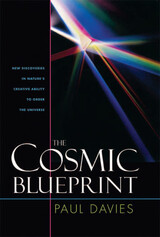 Cosmic Blueprint: New Discoveries In Natures Ability To Order Universe
Paul Davies
Templeton Press, 2004 In this critically acclaimed book, first published in 1988 and now reprinted in paperback, scientist and author Paul Davies explains how recent scientific advances are transforming our understanding of the emergence of complexity and organization in the universe. Melding a variety of ideas and disciplines from biology, fundamental physics, computer science, mathematics, genetics, and neurology, Davies presents his provocative theory on the source of the universe's creative potency. He explores the new paradigm (replacing the centuries-old Newtonian view of the universe) that recognizes the collective and holistic properties of physical systems and the power of self-organization. He casts the laws in physics in the role of a "blueprint," embodying a grand cosmic scheme that progressively unfolds as the universe develops. Challenging the viewpoint that the physical universe is a meaningless collection of particles, he finds overwhelming evidence for an underlying purpose: "Science may explain all the processes whereby the universe evolves its own destiny, but that still leaves room for there to be a meaning behind existence."
Cosmic Canticle
Ernesto Cardenal
Northwestern University Press, 2002 In this epic poem, Cardenal explores Latin American history by relating the evolution of the universe to the development of human understanding. Throughout, Cardenal blends the visible and the invisible, science and poetry, religion and nature, in 43 autonomous yet integrated cantos.
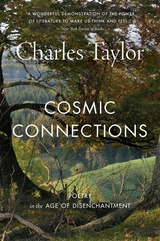 Cosmic Connections: Poetry in the Age of Disenchantment
Charles Taylor
Harvard University Press, 2024 A Times Literary Supplement Best Book of the Year
A major new work by Charles Taylor: the long-awaited follow-up to The Language Animal, exploring the Romantic poetics central to his theory of language.
The Language Animal, Charles Taylor’s 2016 account of human linguistic capacity, was a revelation, illuminating our most fundamental selves. But, as Taylor noted in that work, there was more to be said. Cosmic Connections extends Taylor’s exploration of innovations in language by turning to Romantic and post-Romantic responses to disenchantment.
The fall of cosmic order left Romantics groping toward a new meaning of life. They turned to the symbols and music of poetry to recover contact with reality beyond fragmented existence, developing aesthetic forms that post-Romantics have carried into the present day. Taylor takes us from Hölderlin, Novalis, Keats, and Shelley to Hopkins, Rilke, Baudelaire, and Mallarmé, and on to Eliot, Miłosz, and beyond.
In seeking understanding and a new orientation to life, the language of poetry is not merely a pleasurable presentation of doctrines already elaborated elsewhere. Rather, Taylor insists, poetry persuades us through the experience of connection. The resulting conviction is very different from that gained through the force of argument. Poetry’s reasoning will often be incomplete, tentative, and enigmatic. But at the same time, its insight is too moving—too obviously true—to be ignored.
Cosmic Cycles of Life: New Perspectives on Mawangdui Tombs
Eugene Y. Wang, Xiaoming Duan, and Chenchen Lu
Harvard University Press Cosmic Cycles of Life offers a groundbreaking look at the Mawangdui Han tombs in China—one of the twentieth century’s most important archaeological finds—through the lens of cutting-edge digital technology and interdisciplinary scholarship. Emerging from a collaboration between Harvard CAMLab and the Hunan Museum, it features sixteen essays that examine Mawangdui through intersecting lenses, such as ancient philosophy, medicine, musicology, and taxonomy. With 3D visualization and annotated line drawings, this volume vividly reconstructs the tomb artifacts with unparalleled precision. Together, these contributions reframe Mawangdui not as a static burial site but as a dynamic, cosmological model reflecting ancient Chinese understandings of life, death, and the universe.
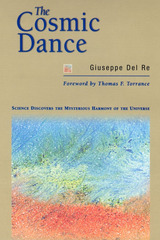 Cosmic Dance
Guiseppe Dr. Del Re
Templeton Press, 1999
This book focuses on a new worldview emerging from the science of the last decades of the second millennium. Its metaphor is the cosmic dance, or the harmony between systems so strongly interdependent that they behave as a single entity. This dance image hints at a general, evolving pattern in which all objects in the universe participate—like the ordered chaos of an African open-air market.
Some chapters discuss the nature of processes in the universe, including chaos and chance in the game of life. The reconciliation of variety and unity is addressed about the space-time continuum and the unified field of relativity theory. Del Re continues investigating the origins of freedom and ethics, suggesting that science indicates that the human species may have a specific task in the universe: building a bridge between matter and spirit.
Del Re ponders alchemy, the significance of symbols, and the meaning of the soul. Woven throughout various esoteric and scientific inquiries is the underlying sense of the unifying principles of science and a spiritual outlook. The questions raised are issues that will be discussed by an emerging network of scientists and spiritual seekers, and this book will add a valued and informed perspective to these conversations.
 Cosmic Evolution: The Rise of Complexity in Nature
Eric J. Chaisson
Harvard University Press, 2001 We are connected to distant space and time not only by our imaginations but also through a common cosmic heritage. Emerging now from modern science is a unified scenario of the cosmos, including ourselves as sentient beings, based on the time-honored concept of change. From galaxies to snowflakes, from stars and planets to life itself, we are beginning to identify an underlying ubiquitous pattern penetrating the fabric of all the natural sciences--a sweepingly encompassing view of the order and structure of every known class of object in our richly endowed universe.
This is the subject of Eric Chaisson's new book. In Cosmic Evolution Chaisson addresses some of the most basic issues we can contemplate: the origin of matter and the origin of life, and the ways matter, life, and radiation interact and change with time. Guided by notions of beauty and symmetry, by the search for simplicity and elegance, by the ambition to explain the widest range of phenomena with the fewest possible principles, Chaisson designs for us an expansive yet intricate model depicting the origin and evolution of all material structures. He shows us that neither new science nor appeals to nonscience are needed to understand the impressive hierarchy of the cosmic evolutionary story, from quark to quasar, from microbe to mind.
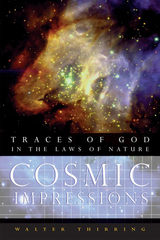 Cosmic Impressions: Traces of God in the Laws of Nature
Walter Thirring
Templeton Press, 2007
Walter Thirring is an internationally renowned scientist who took part in and worked among those involved in many of the scientific developments of the twentieth century. His book, about the knowledge of the world as illuminated by twentieth century science, was originally published in German. This is the first English translation and is a book that is easily accessible to readers of popular science books and magazines.
Professor Thirring starts with cosmology as he examines scientific questions and theories concerning the intricacy of nature and the universe. He branches into an exposition of chaos and its connection to the macroscopic world, as well as to life sciences, touching on such diverse related subjects as the structure of the water molecule. He speaks of advances with which he was personally involved, and offers priceless vignettes of great scientists with whom he exchanged discussions, including Albert Einstein, Werner Heisenberg, Erwin Schrödinger, and Wolfgang Pauli.
His study of scientific theory and the intricacy of nature and the universe illuminates his argument for the role of a Creator. "Reflections on the creation of the universe lead to reflections about the creator," he writes. And arguing against atheism, he points out:
“When we are moved by a fantastic building, a cathedral or a mosque and have finally realized what is behind the glorious proportions, who would then say, ‘Now we don't need the architect anymore. There might not even be one, that could all just be the random product of circumstance.’”
Furthermore, in making humankind special in his creation, the Creator gave us the responsibility of seeking an understanding of creation and protecting it.
Tackling complex issues in science and religion, Professor Thirring presents a compelling argument for their synthesis. His tenure and influence in the scientific field make this argument even more compelling.
Cosmic Pessimism
Eugene Thacker
University of Minnesota Press, 2015 “We’re doomed.” So begins the work of the philosopher whose unabashed and aphoristic indictments of the human condition have been cropping up recently in popular culture. Today we find ourselves in an increasingly inhospitable world that is, at the same time, starkly indifferent to our species-specific hopes, desires, and disappointments. In the Anthropocene, pessimism is felt everywhere but rarely given its proper place. Though pessimism may be, as Eugene Thacker says, the lowest form of philosophy, it may also contain an enigma central to understanding the horizon of the human. Written in a series of fragments, aphorisms, and prose poems, Thacker’s Cosmic Pessimism explores the varieties of pessimism and its often-conflicted relation to philosophy. “Crying, laughing, sleeping—what other responses are adequate to a life that is so indifferent?”
 Cosmic Rays
Michael W. Friedlander
Harvard University Press, 1989 Day in and day out, cosmic rays from the far reaches of space pass through our bodies, yet modern astrophysics has still to unlock all their secrets. Though many details about cosmic rays remain enigmatic, next to electromagnetic radiation they convey more information about the universe beyond the solar system than any other source. They provide us with information about energetic explosions elsewhere in our galaxy and perhaps beyond, and they tell us a great deal about the contents of our own galaxy, through which they pass in reaching us. Illustrating the beautiful symmetry of nature, they shed light on the tiny dimensions of atomic nuclei as well as the immense scale of galaxies.
Friedlander's engaging tale of this peculiar rain of charged particles begins with their discovery early in this century and goes on to describe impressive attempts by a special breed of scientists--sometimes engaging in swashbuckling science at its most adventurous--to fill in the gaps in our knowledge. The central question is: Where do cosmic rays come from? Some scientists maintain that supernovas, much more massive than our sun, are largely responsible for generating them. Most of them probably originate within our Milky Way galaxy, but a few (the most energetic ones) appear to come from a much greater distance. But we still have much to learn about their origin.
The book describes scientists studying cosmic rays by all sorts of methods: satellites, space probes, high-altitude balloons and airplanes-even giant detectors two miles beneath the earth's surface. Their ingenious investigations have yielded startling insights about nature--as well as an inordinately large number of Nobel Prizes. Michael Friedlander, for many years a principal researcher of cosmic radiation, masterfully portrays how a perfect marriage between pure and applied science has forged new understandings of our physical world. This uncommonly lucid history, richly illustrated with more than 50 drawings and photographs, touches the astronomer within each of us who yearns to explore one of the great mysteries of the universe.
Cosmic Tantrum: Poems
Sarah Lyn Rogers
Northwestern University Press, 2025 A debut full-length poetry collection from Sarah Lyn Rogers rewriting girlhood and summoning mischief Sarah Lyn Rogers’s debut full-length collection is a tragicomic exploration of codependent and transactional relationships: economies of shame, gifts as debts, businesses run like families, and families run like businesses. What transgressions and abuses do we believe are acceptable fees for safety or love, and who upholds these myths? The poems in Cosmic Tantrum examine how our most intimate relationships shape the way we move through the wider world—and what happens when we reject the stories we’ve inherited about our worth.
|
|
